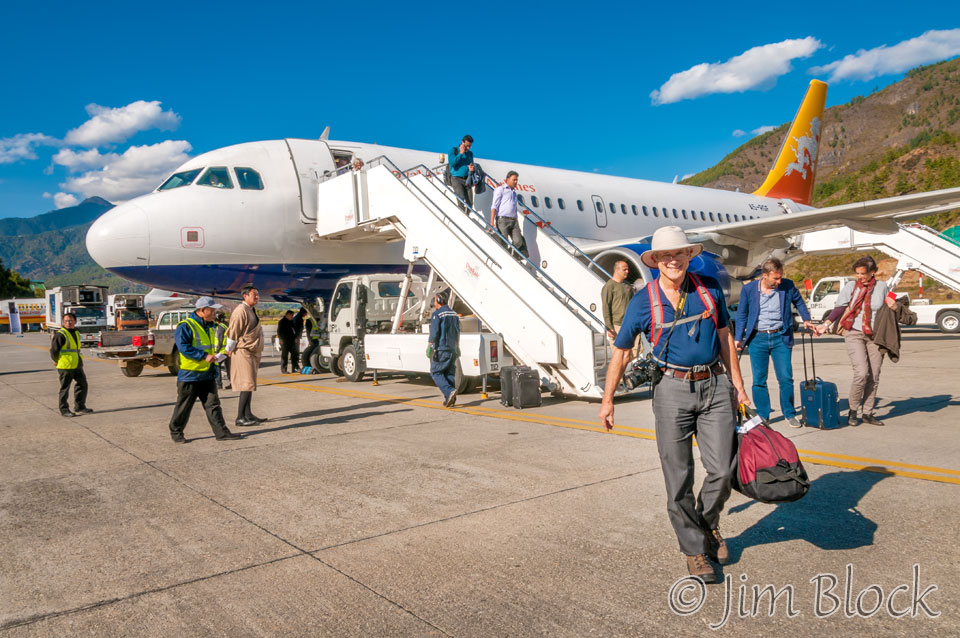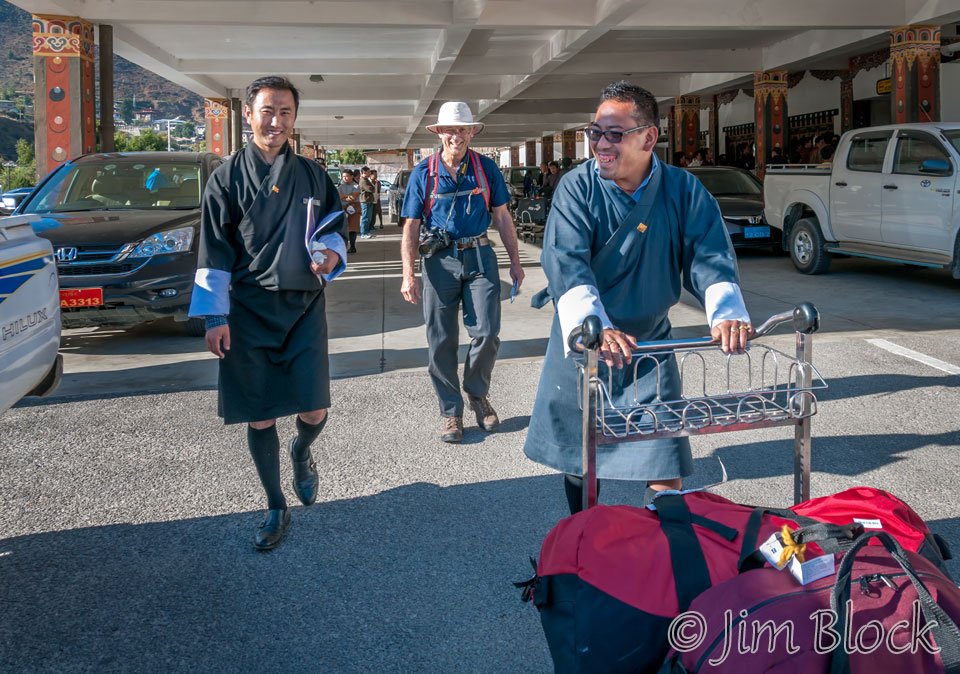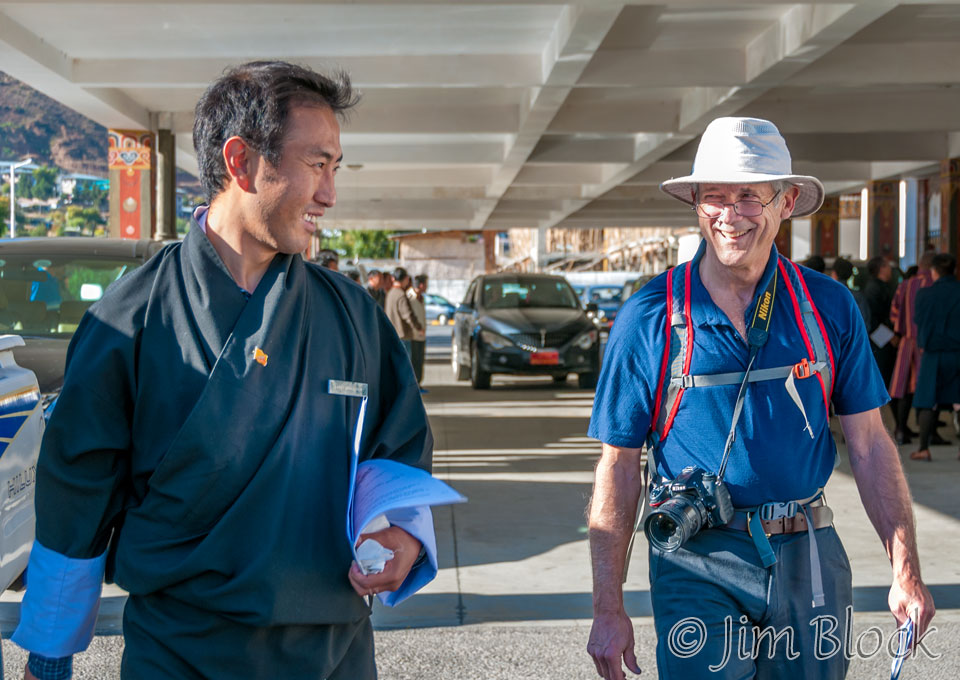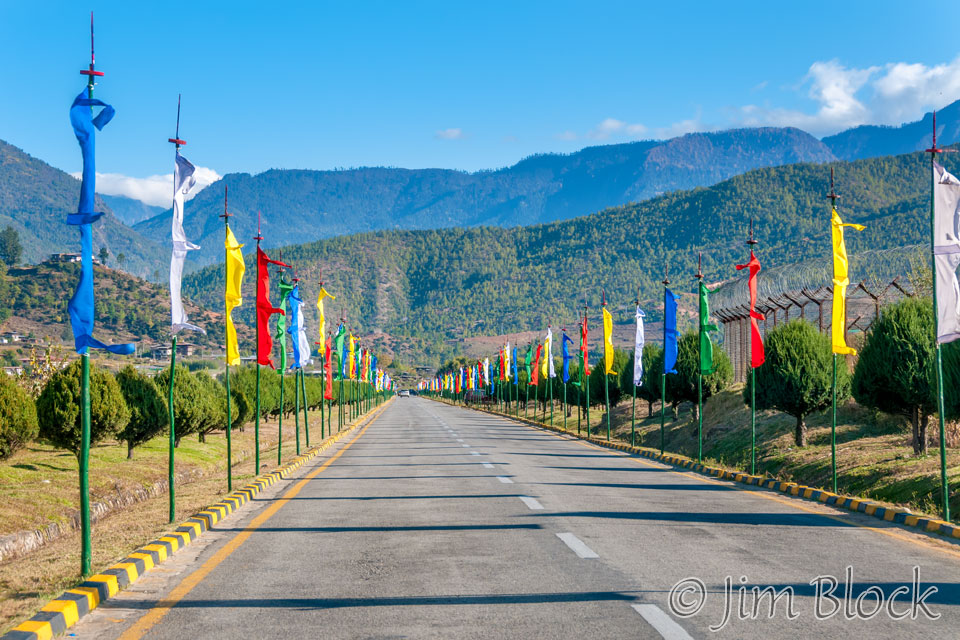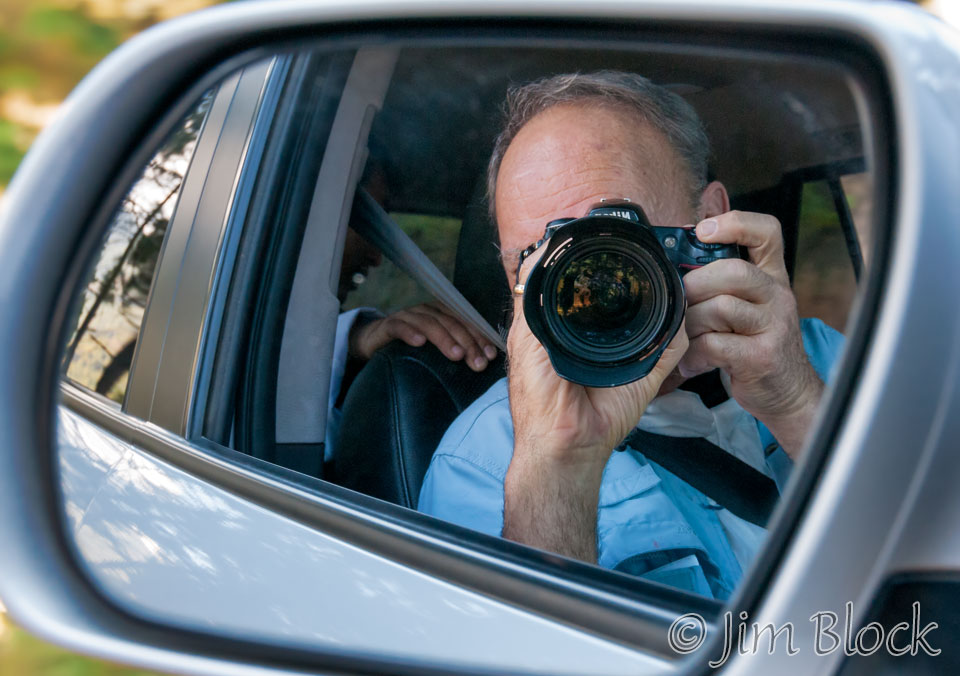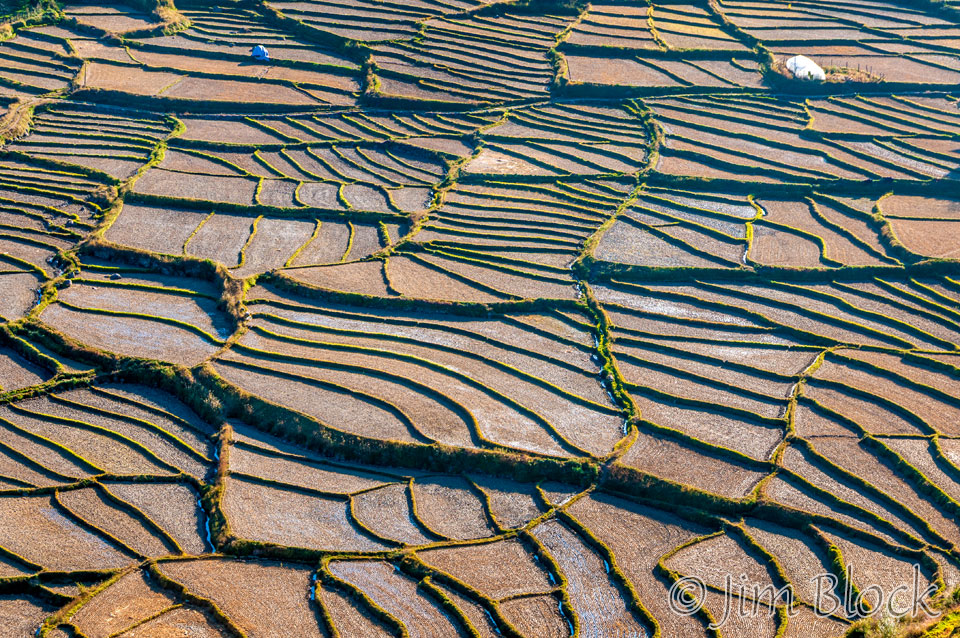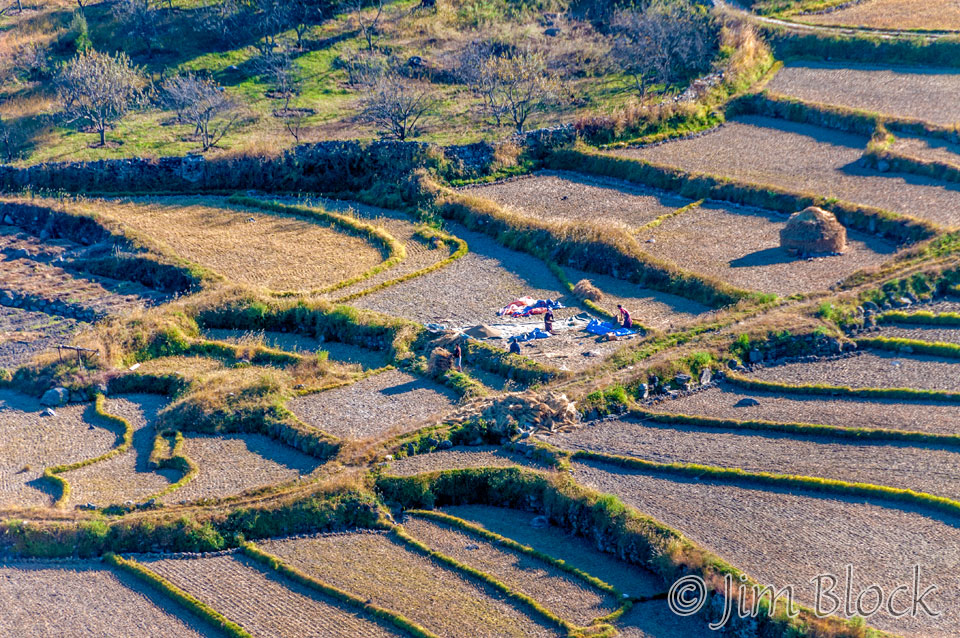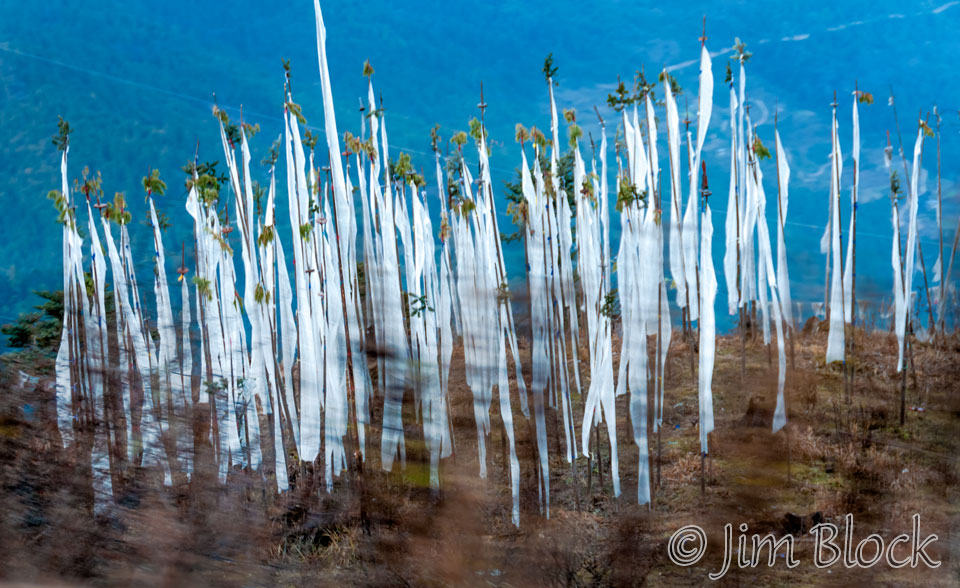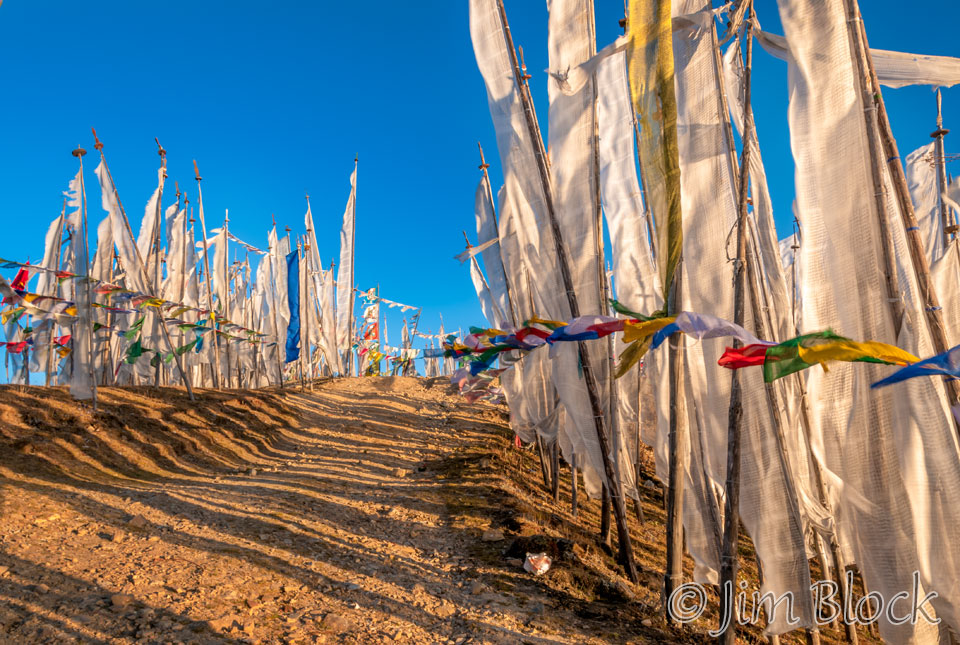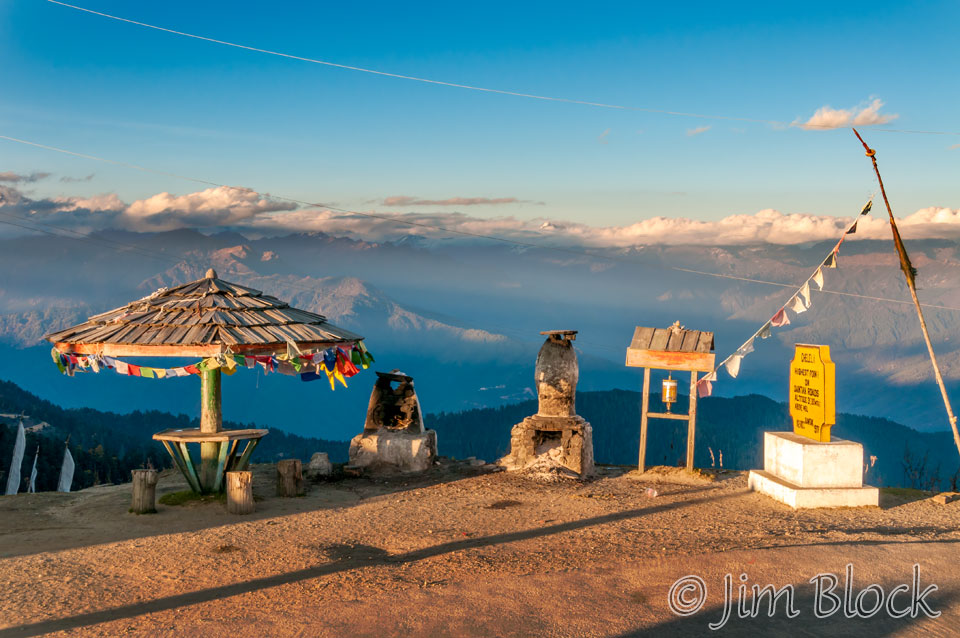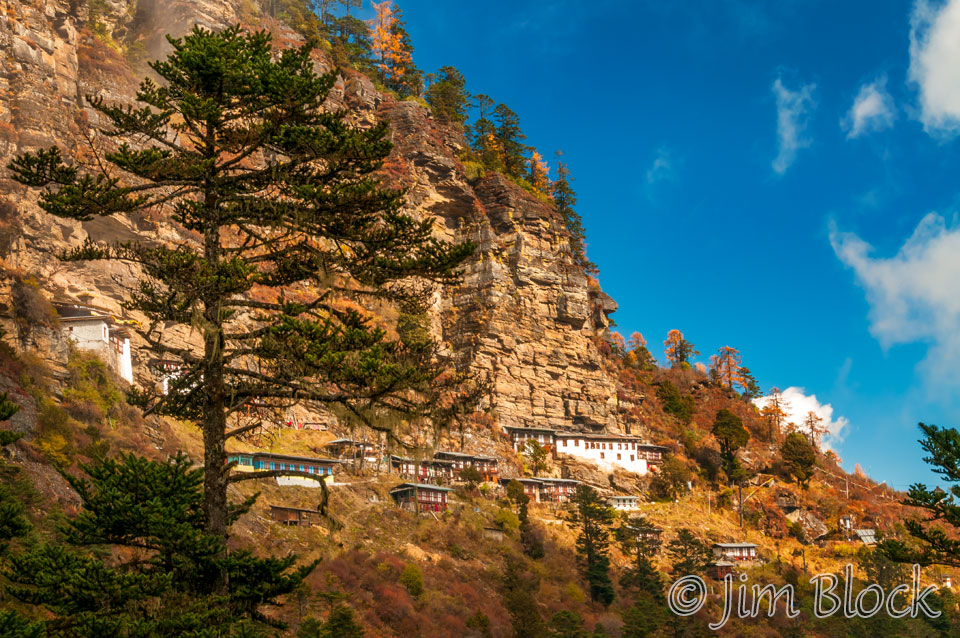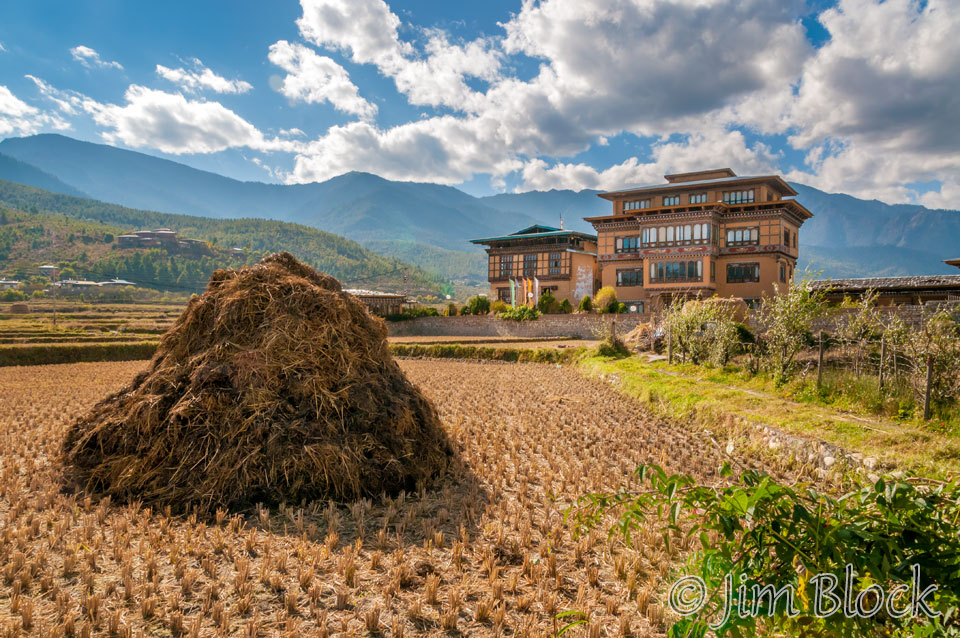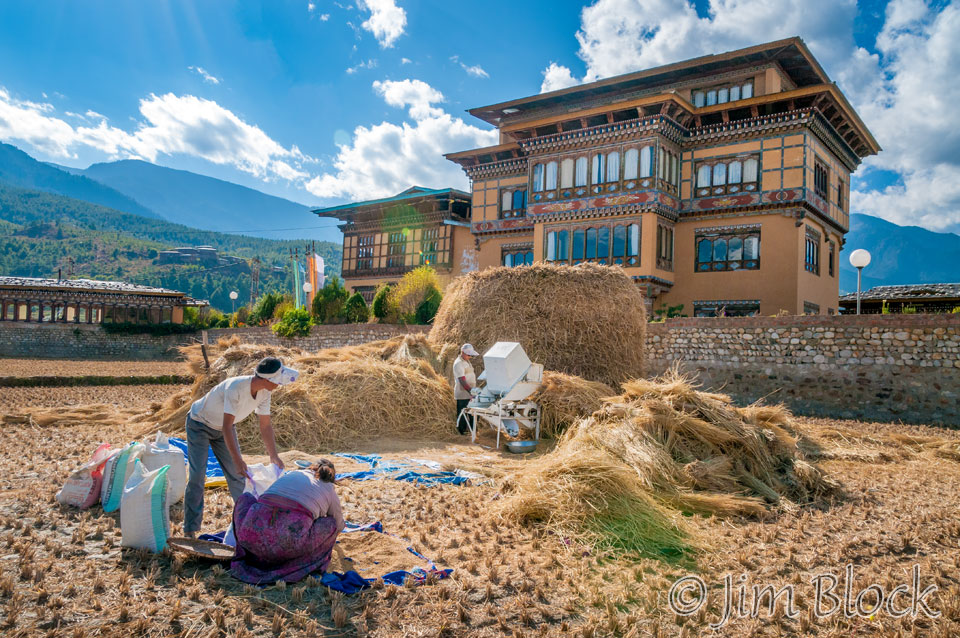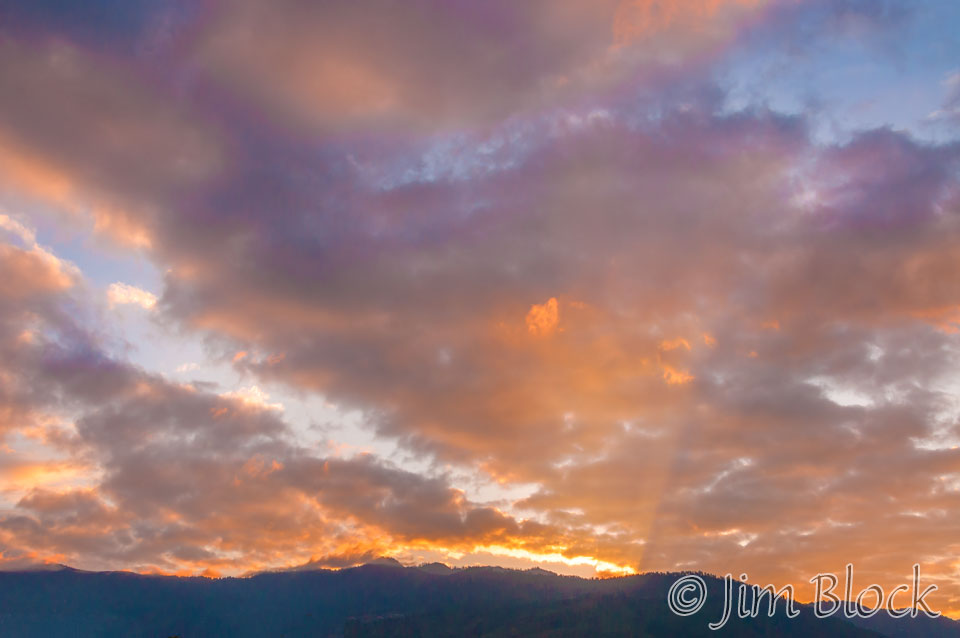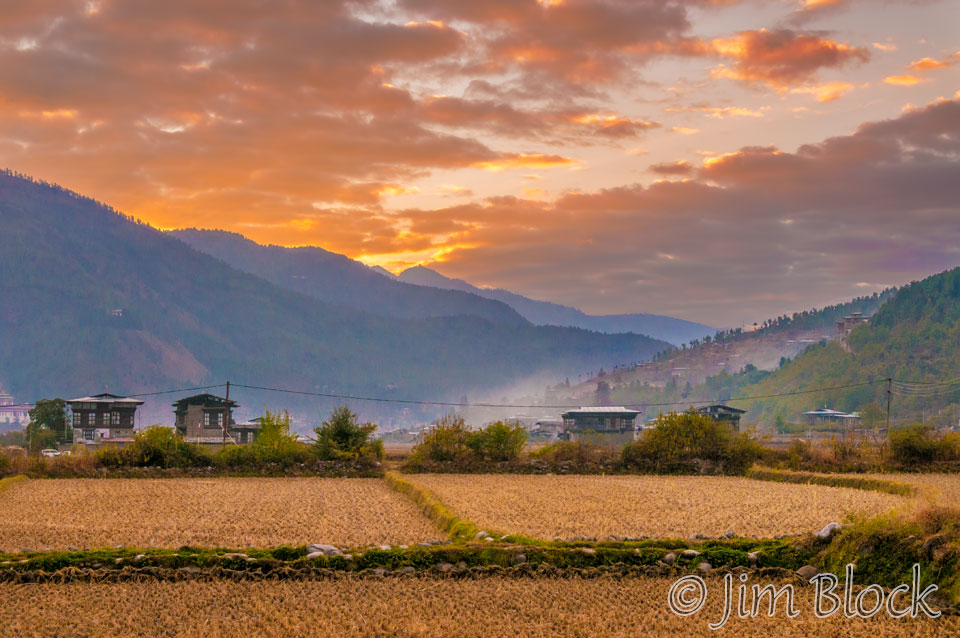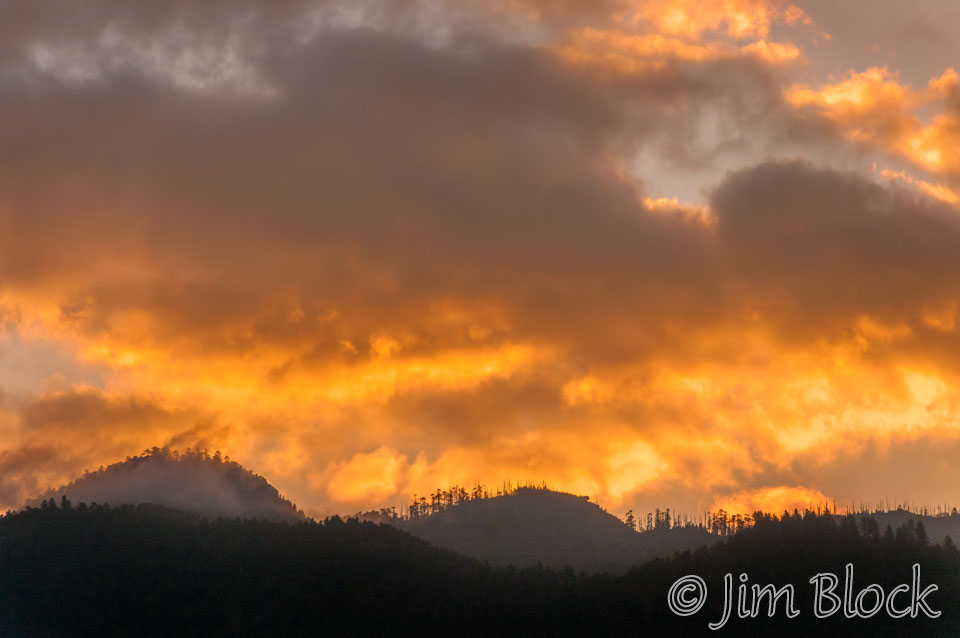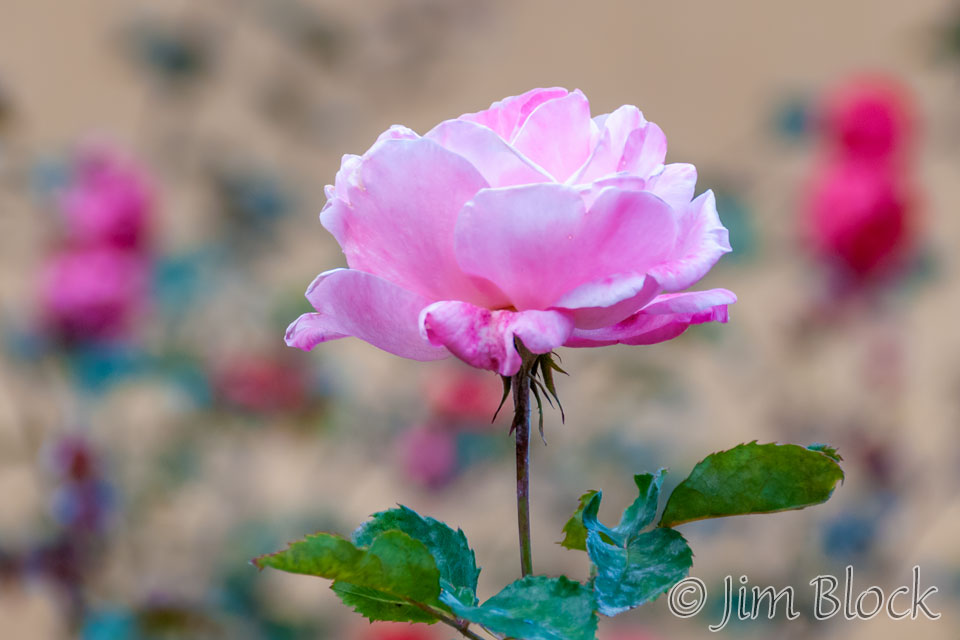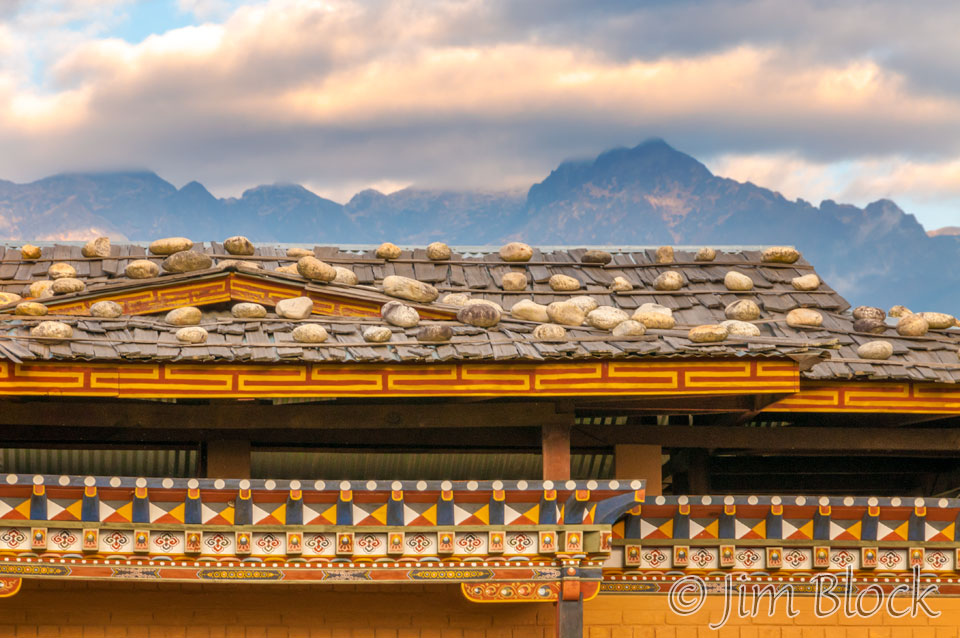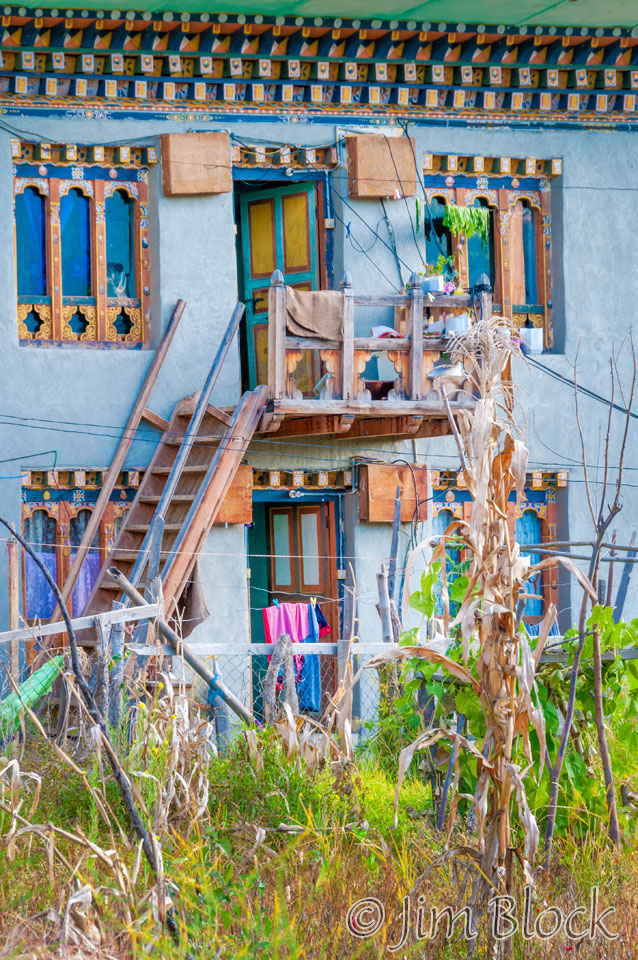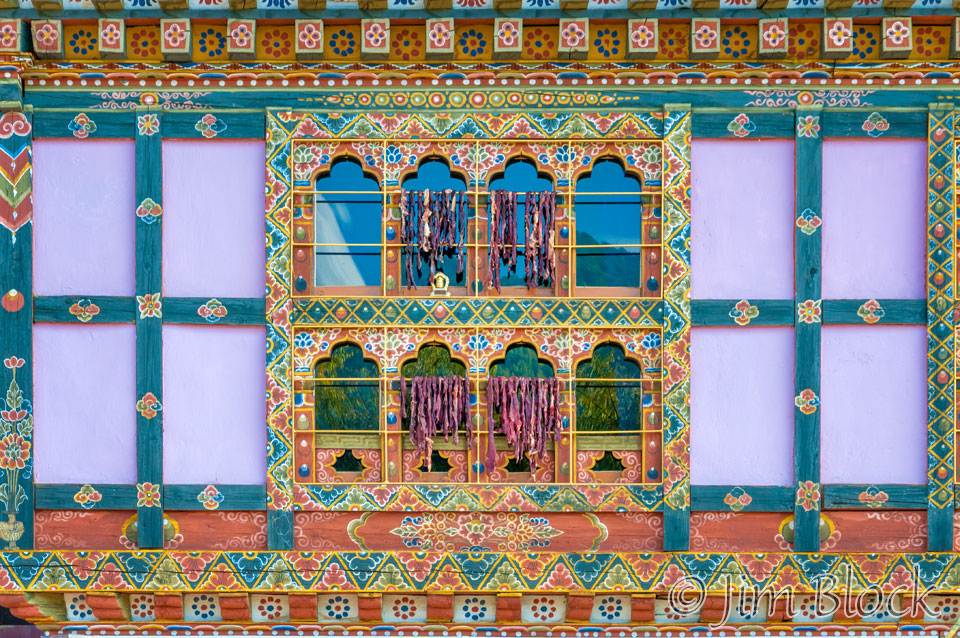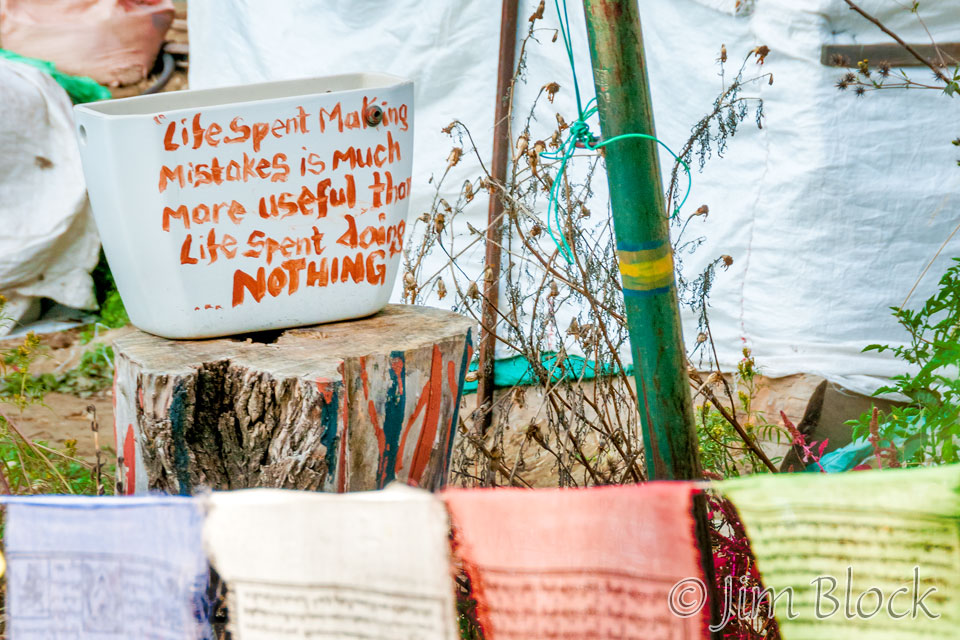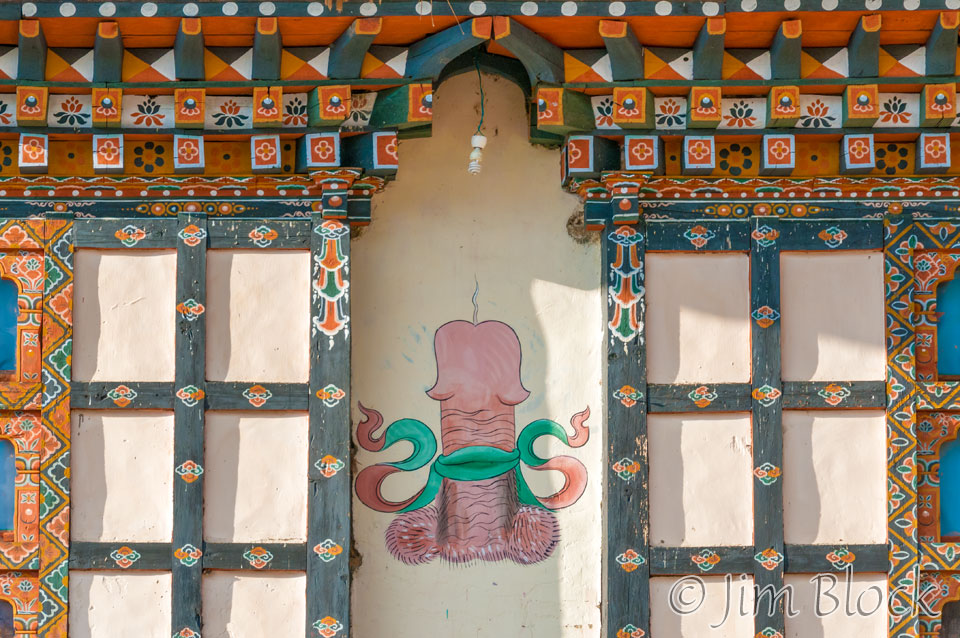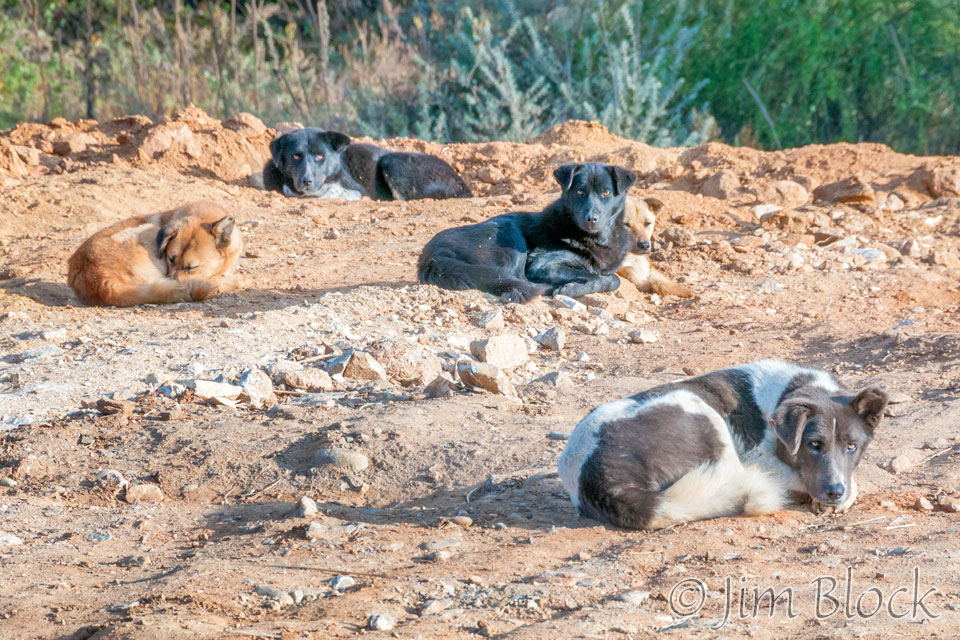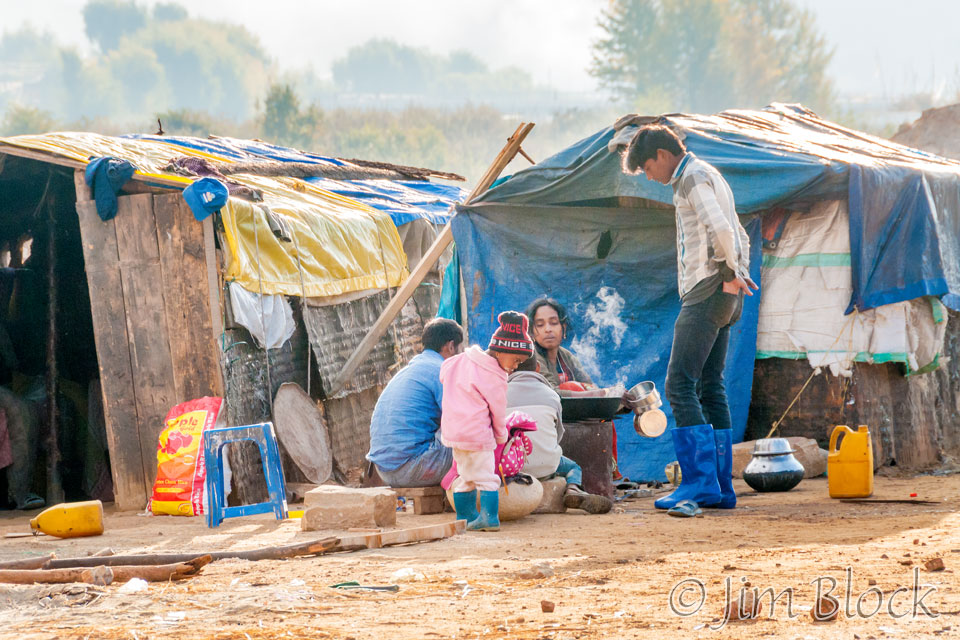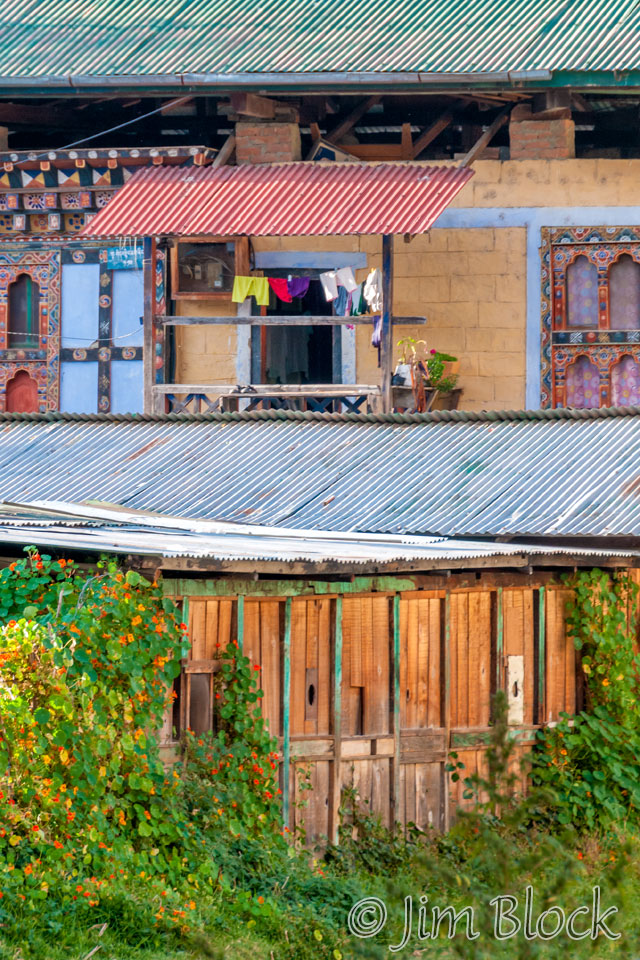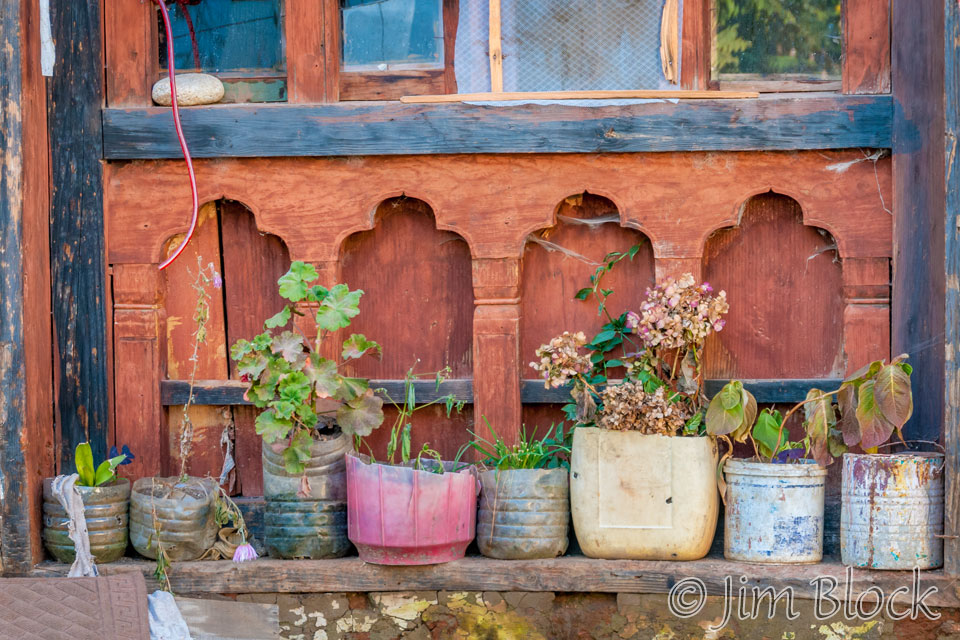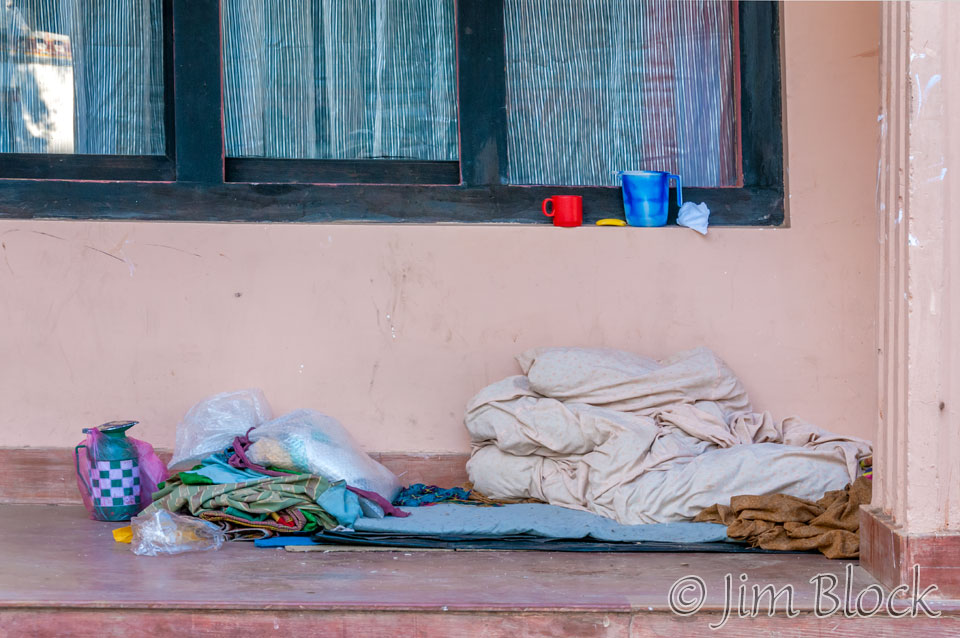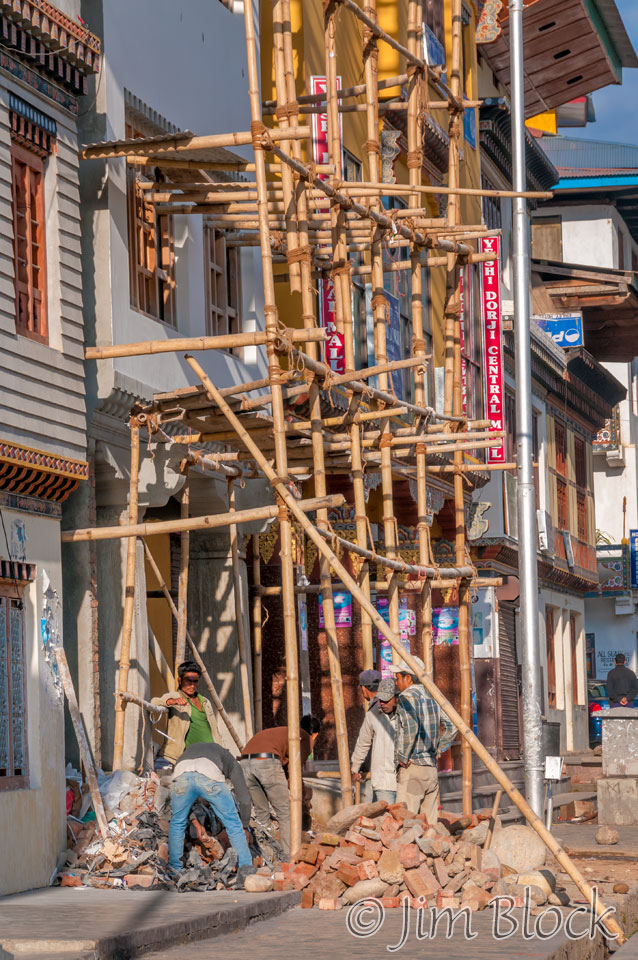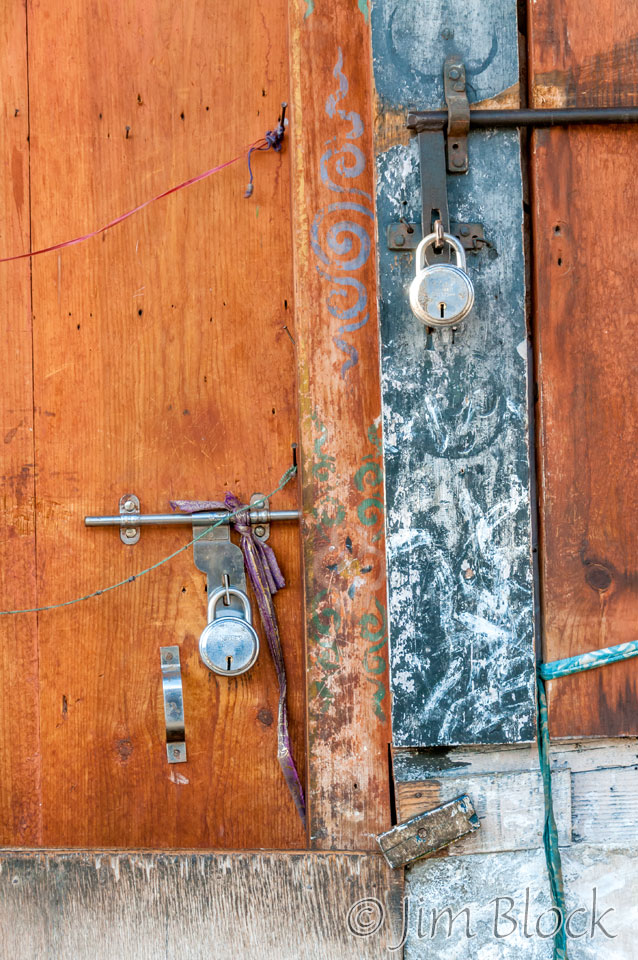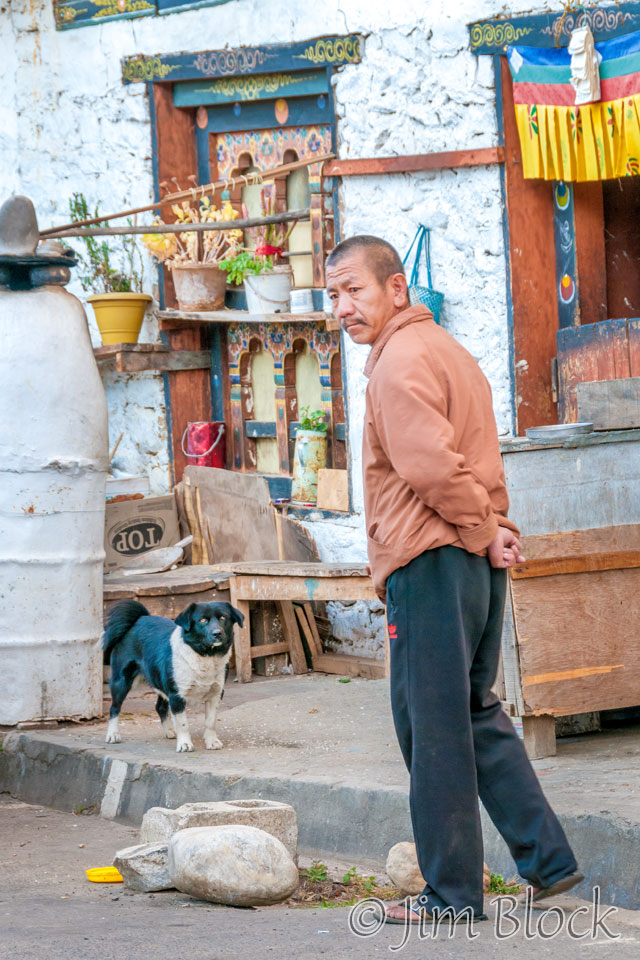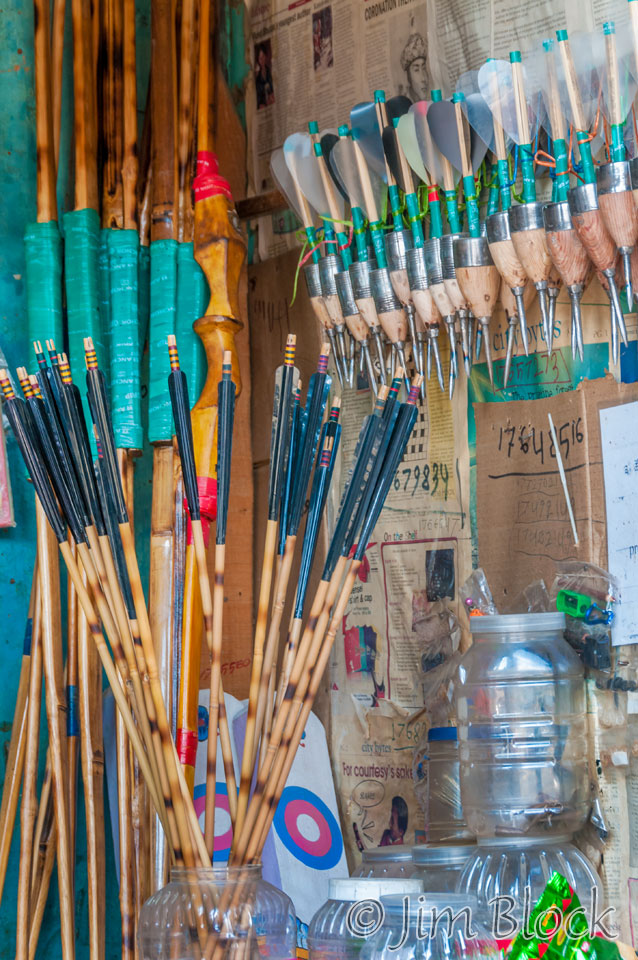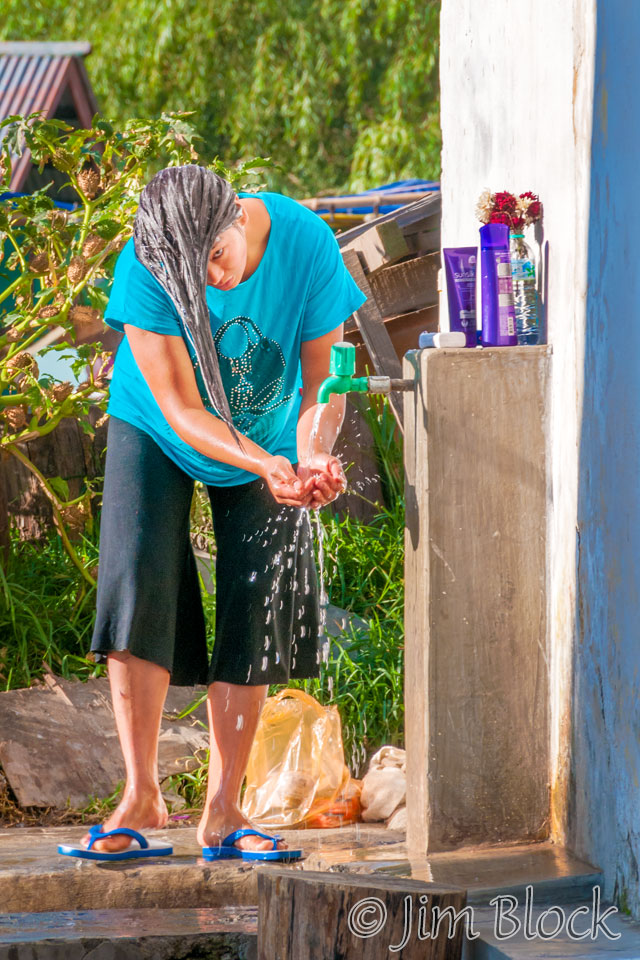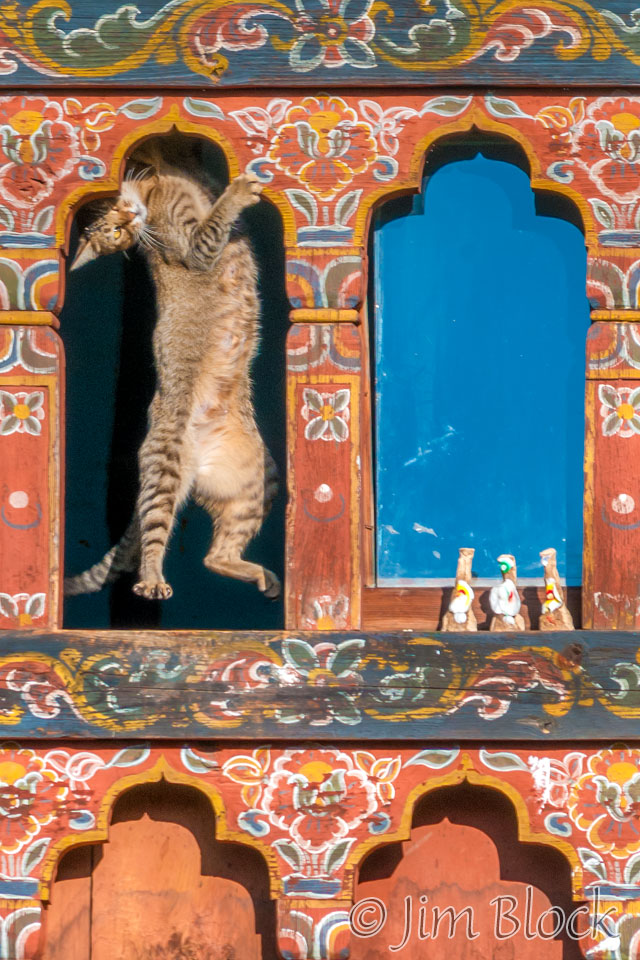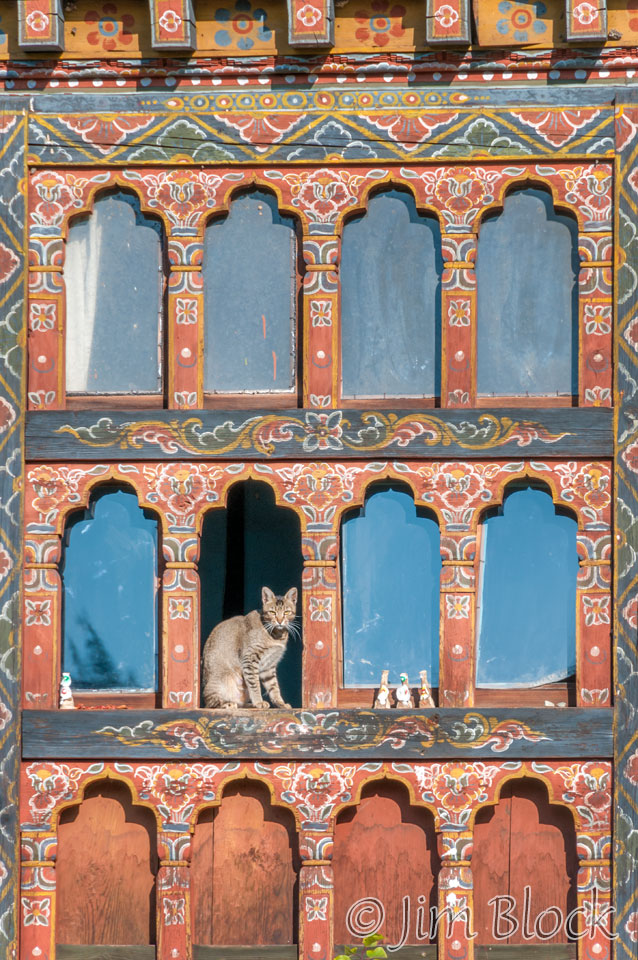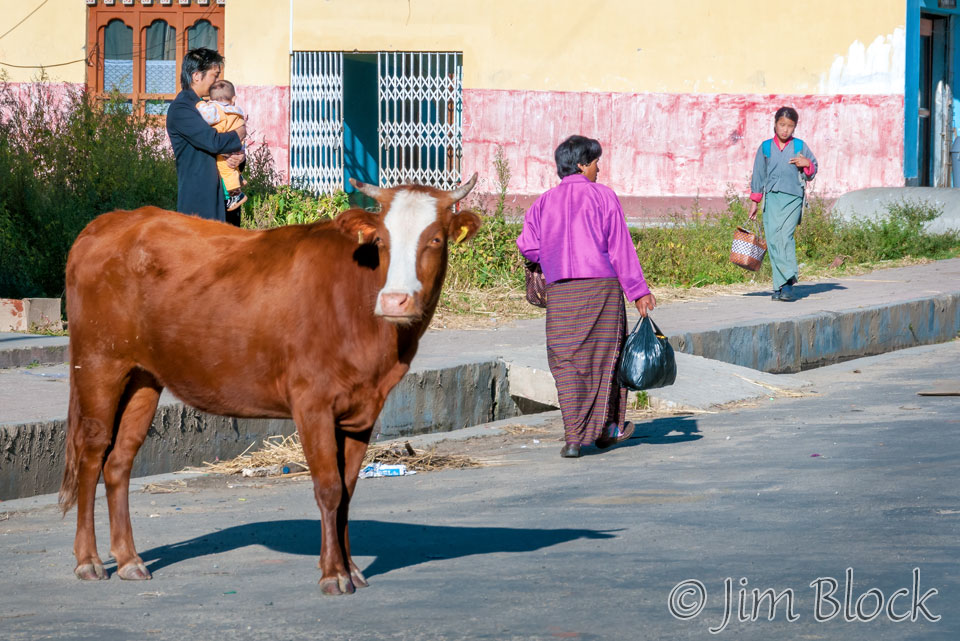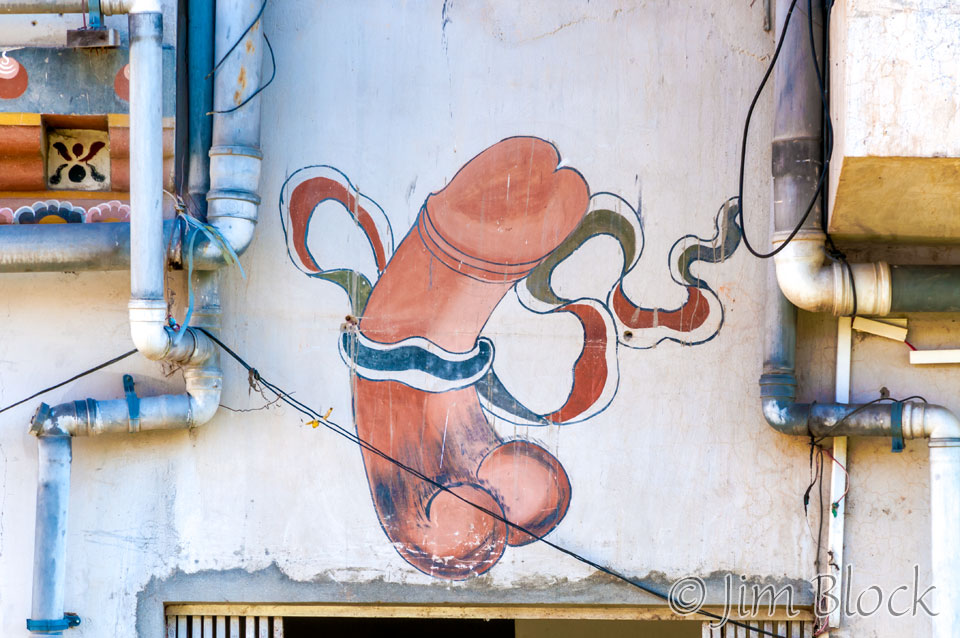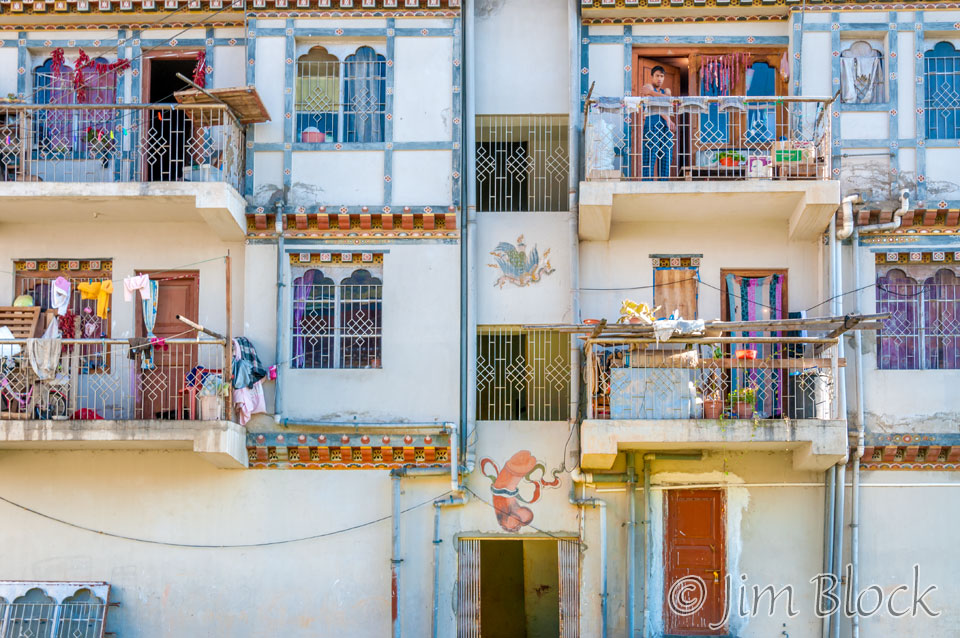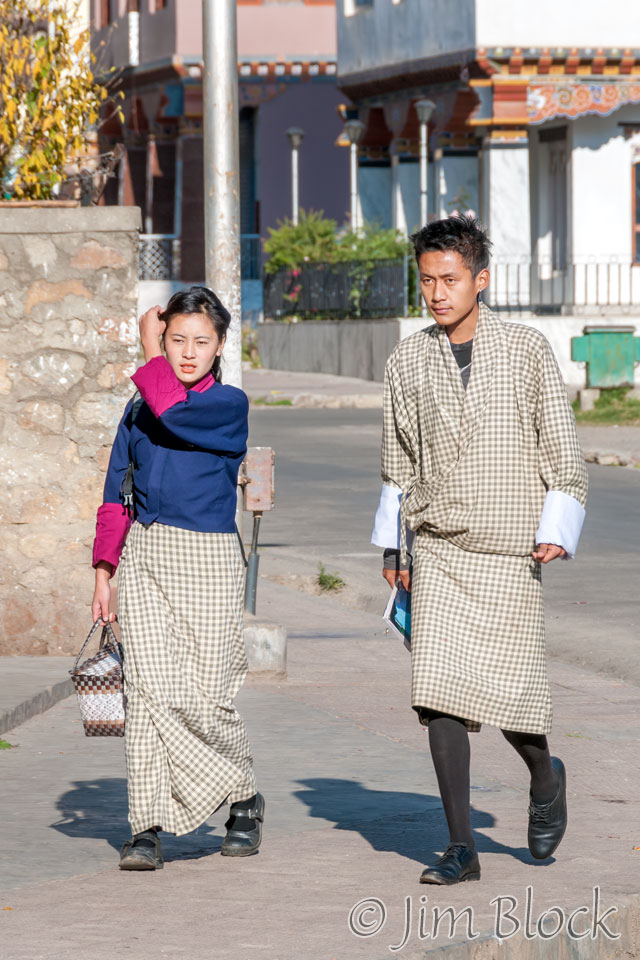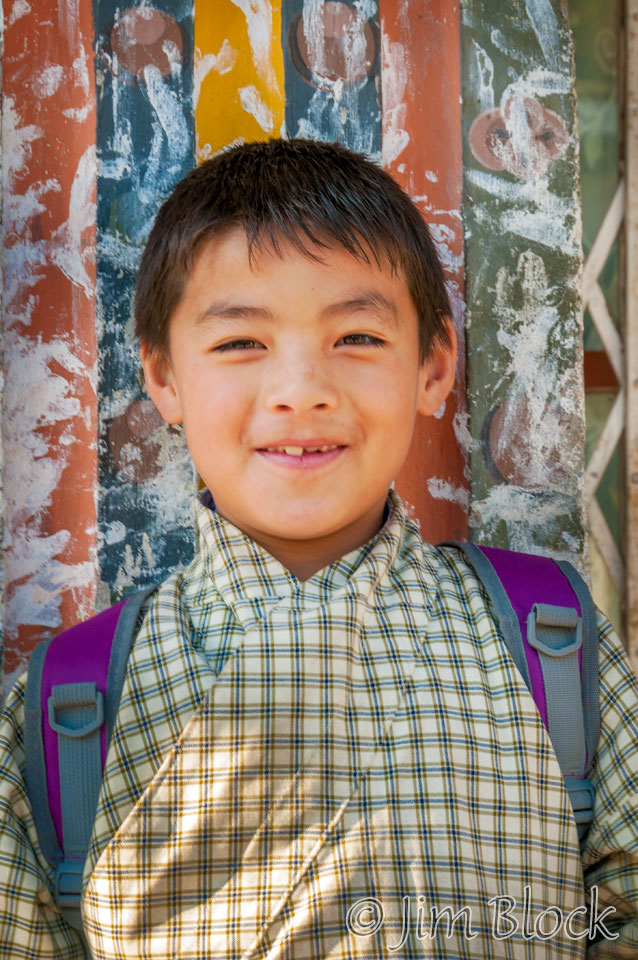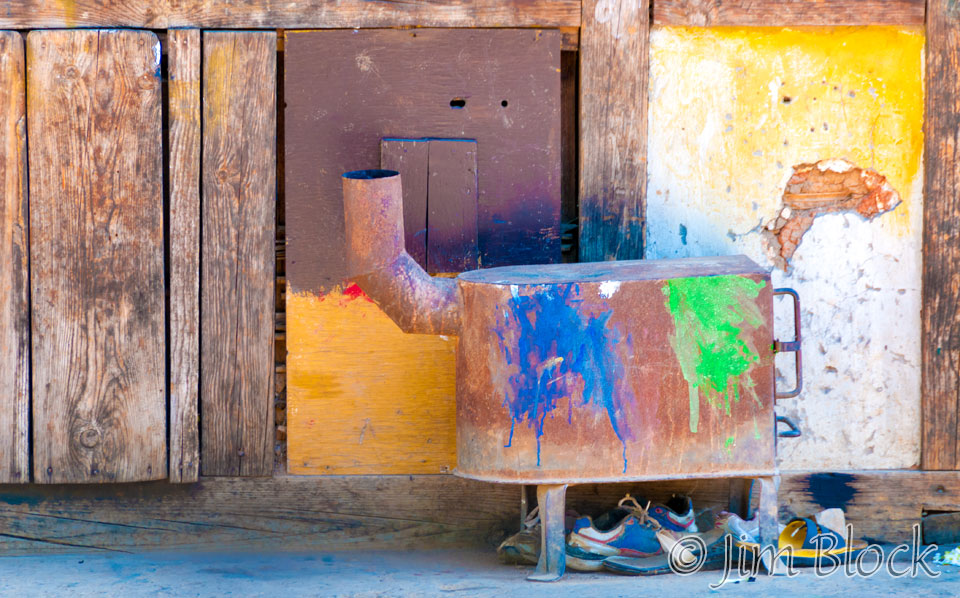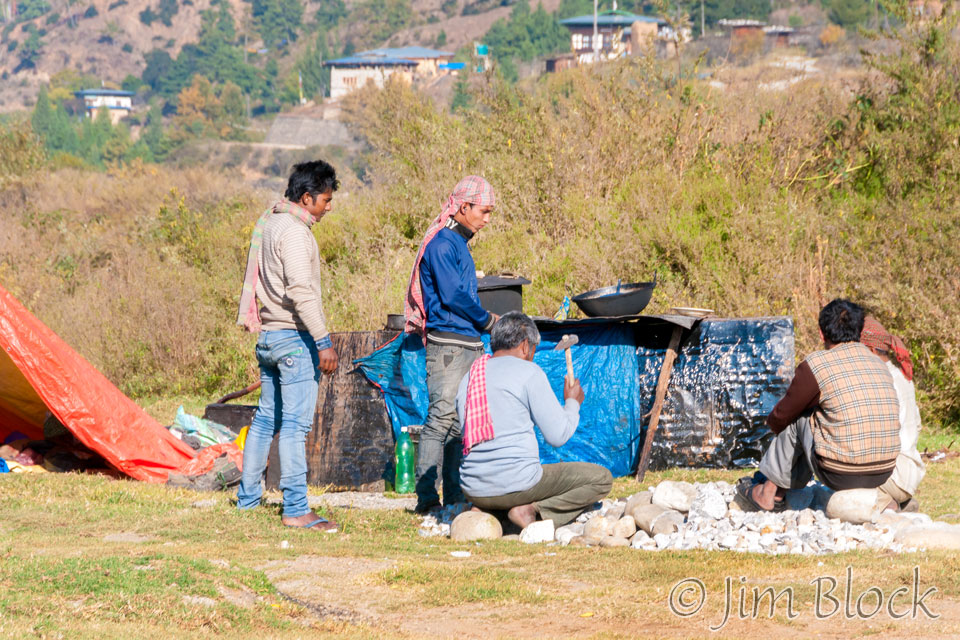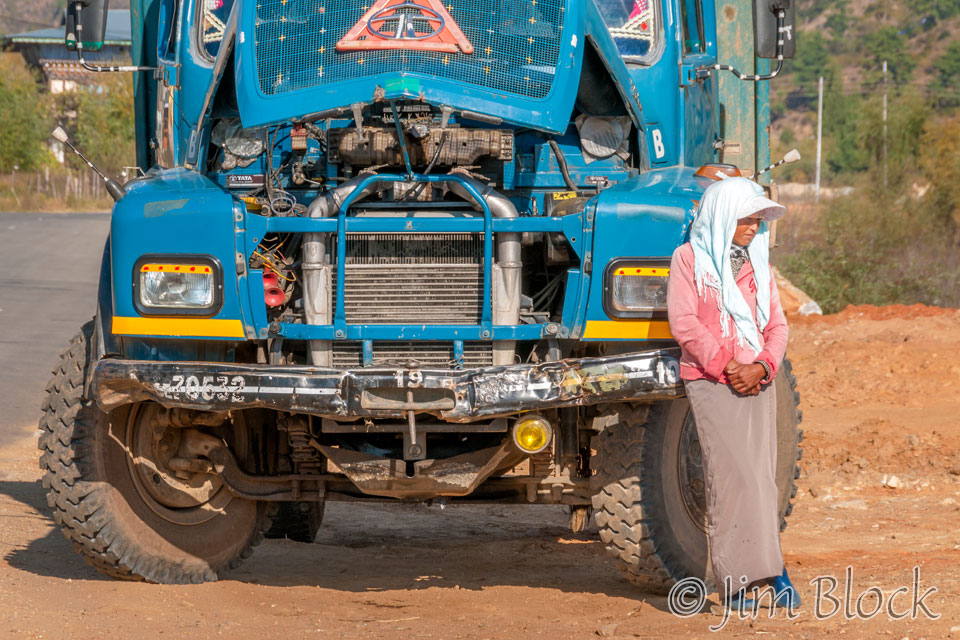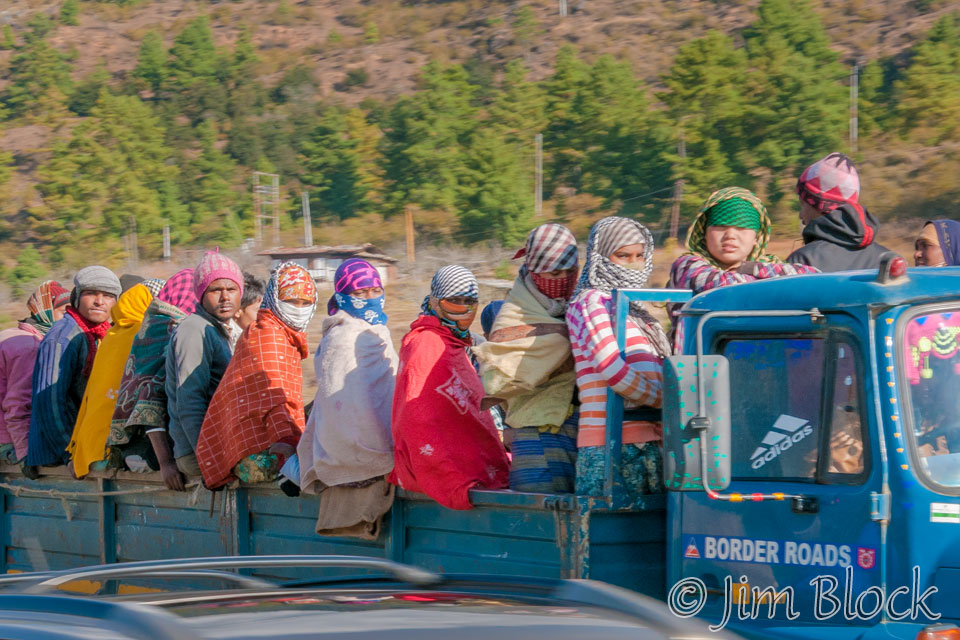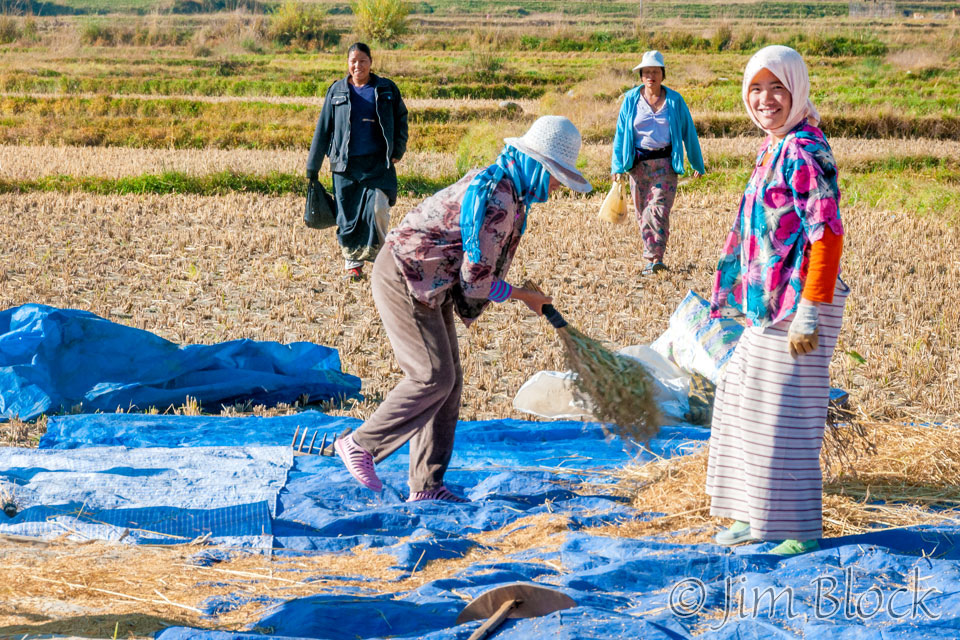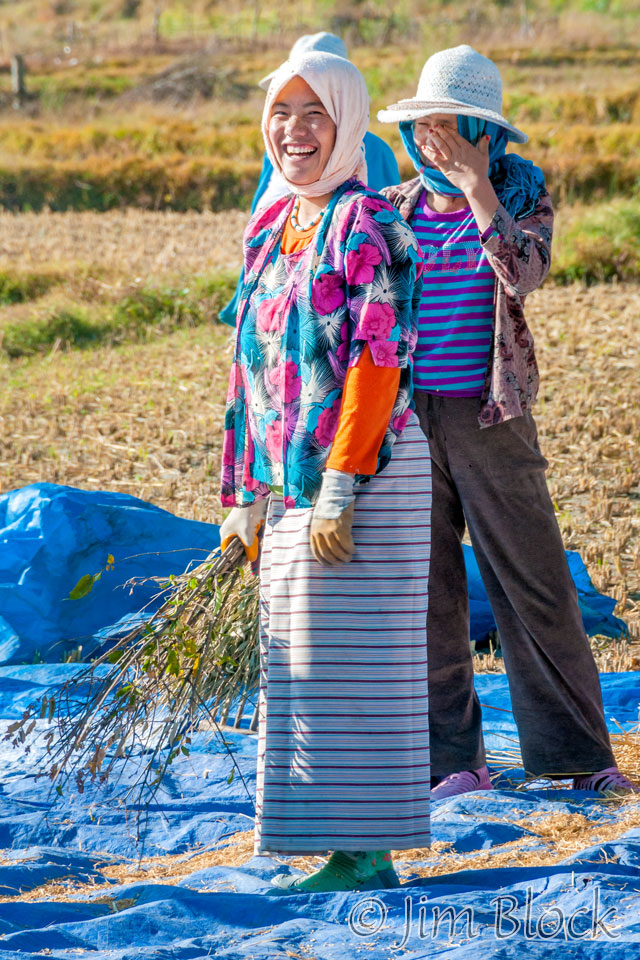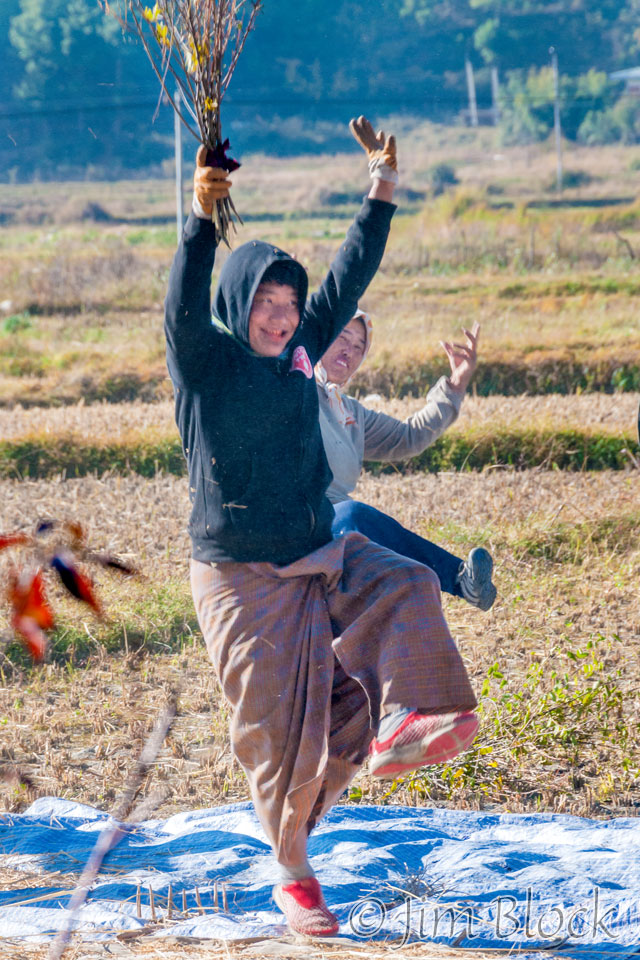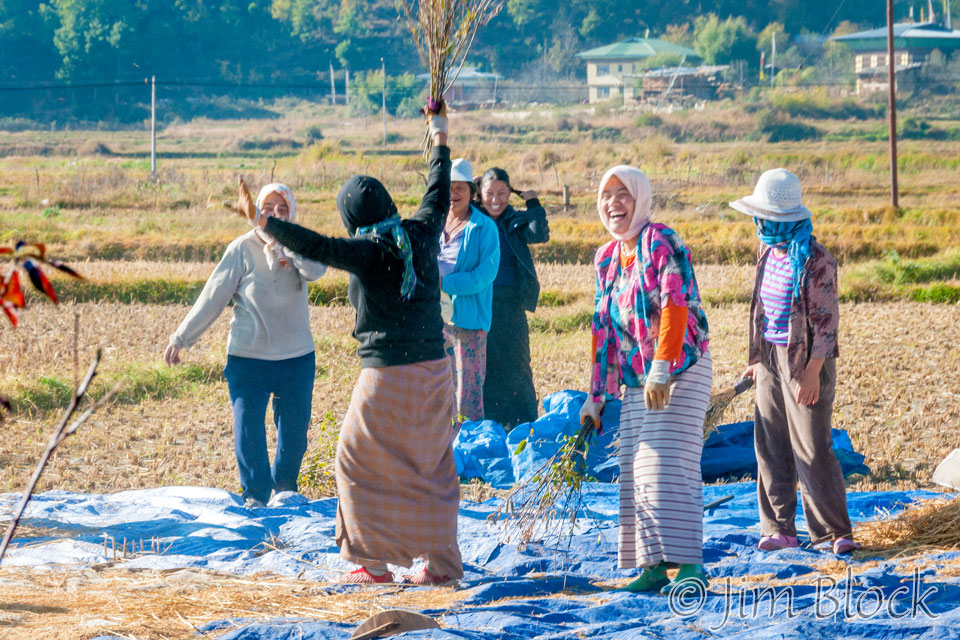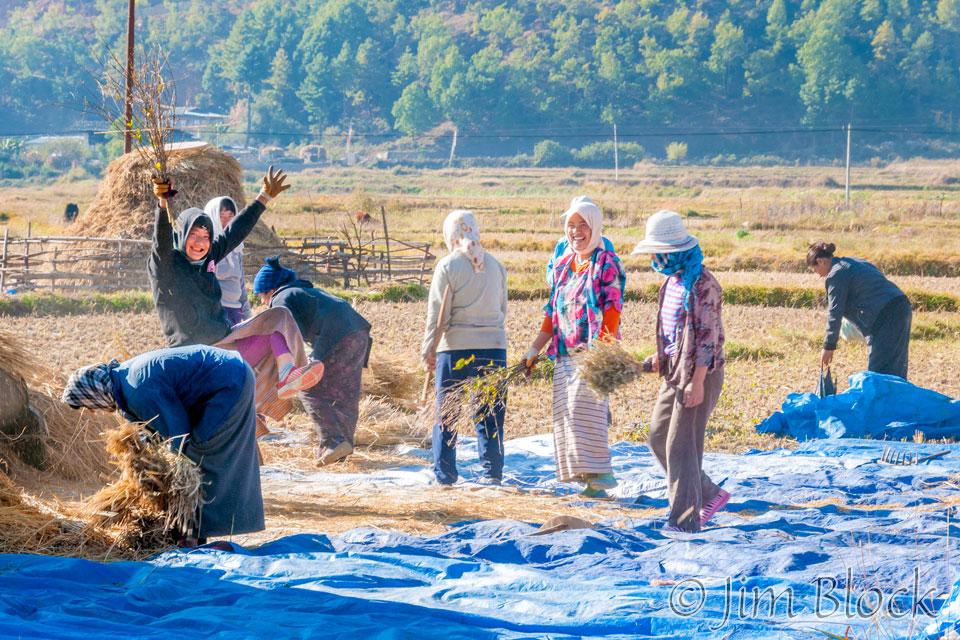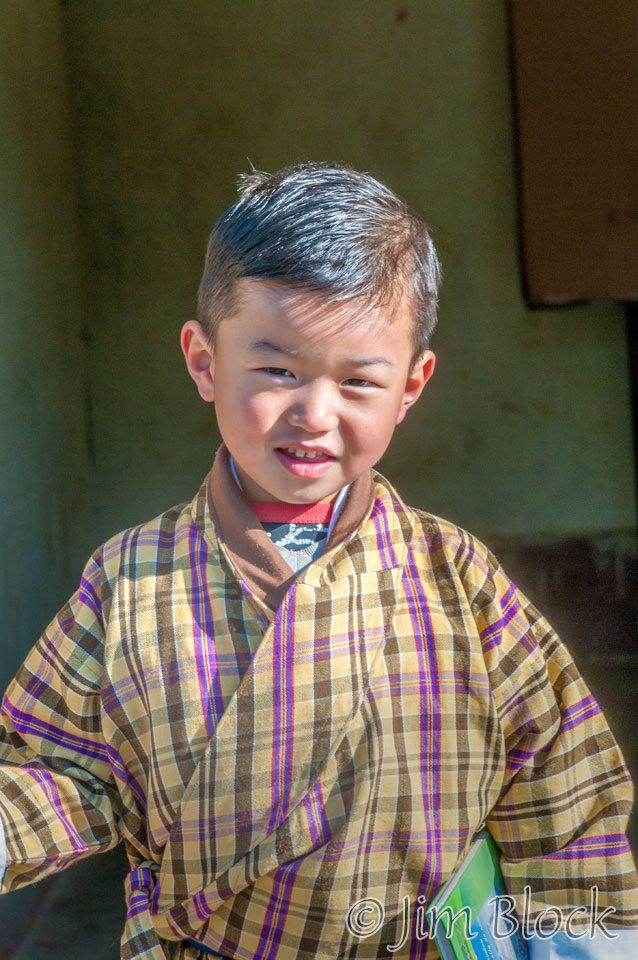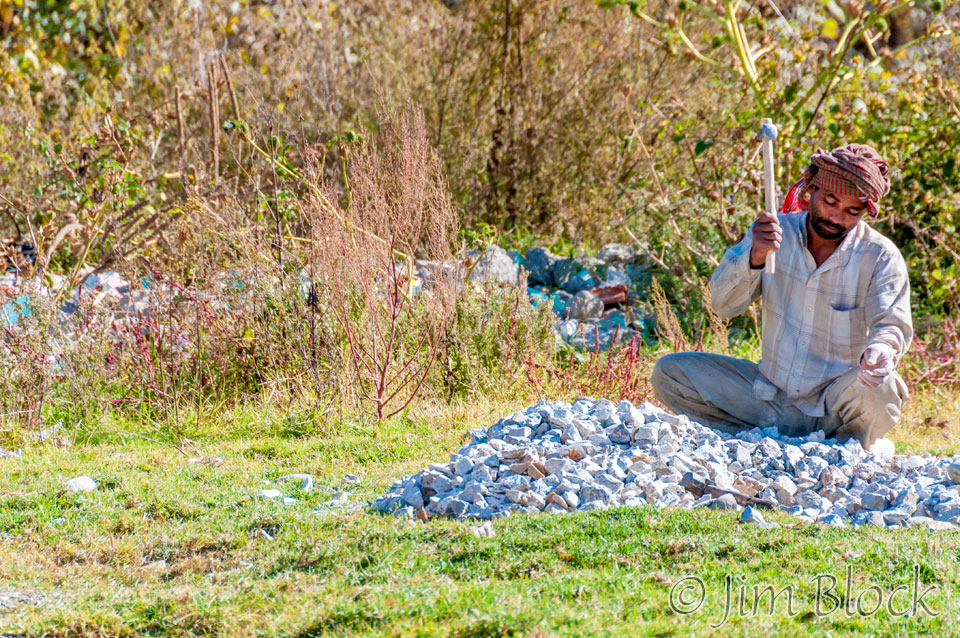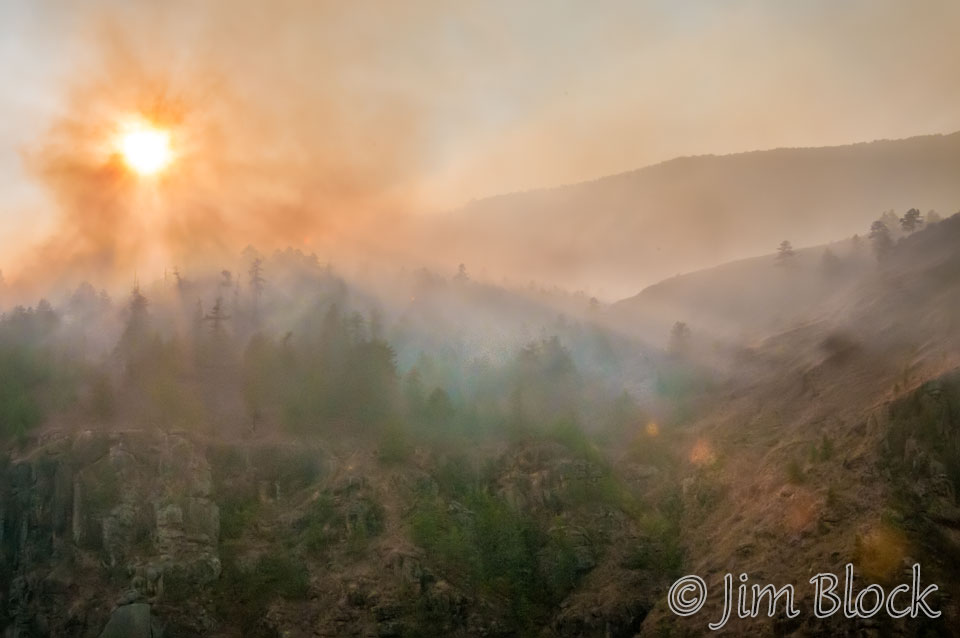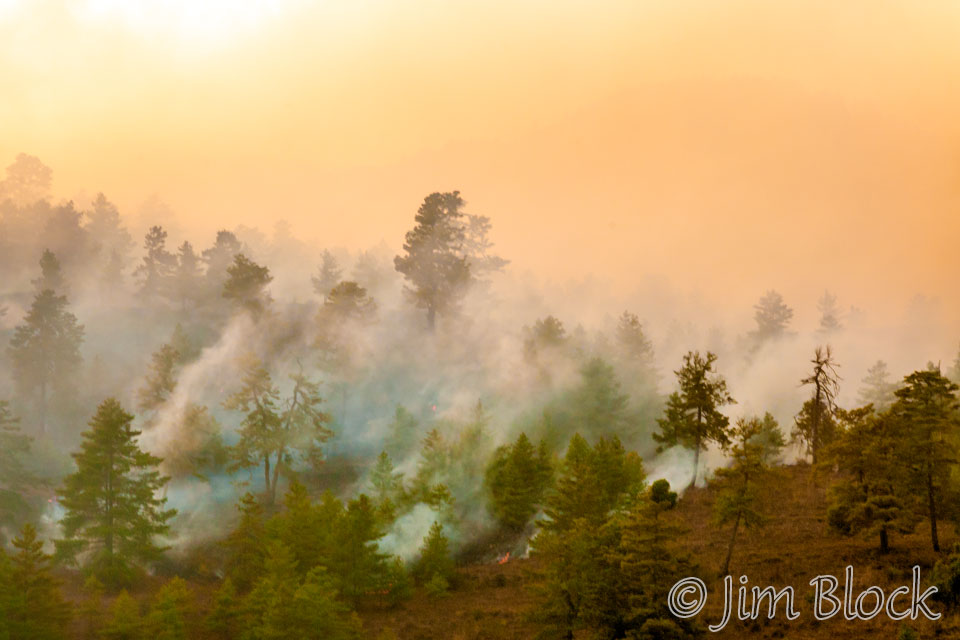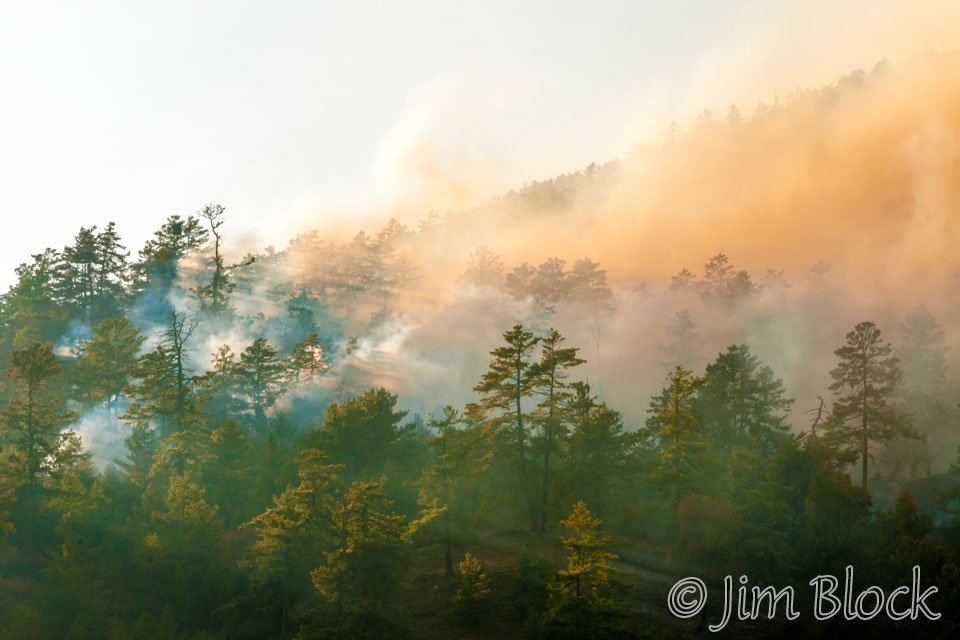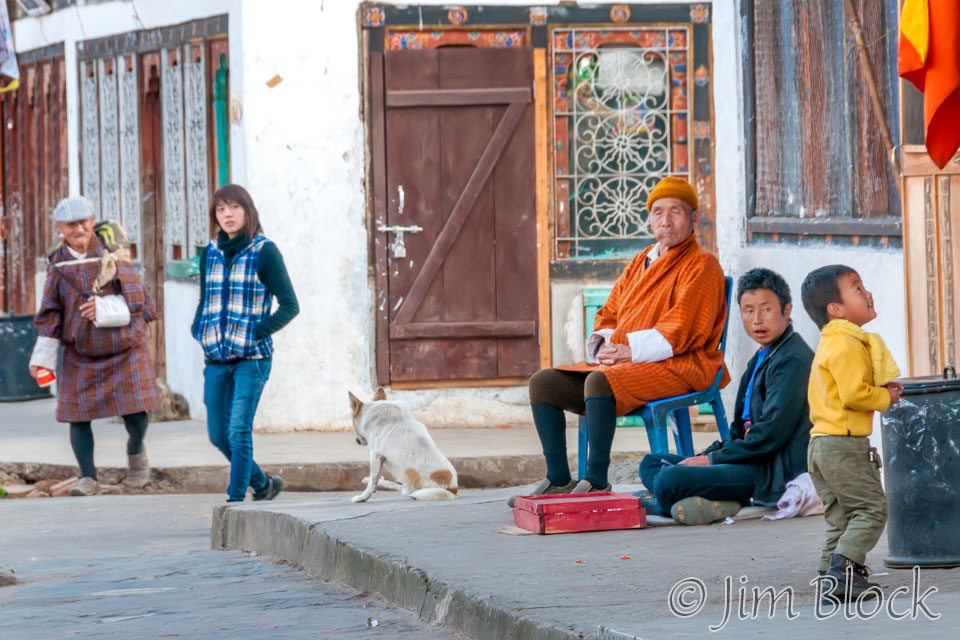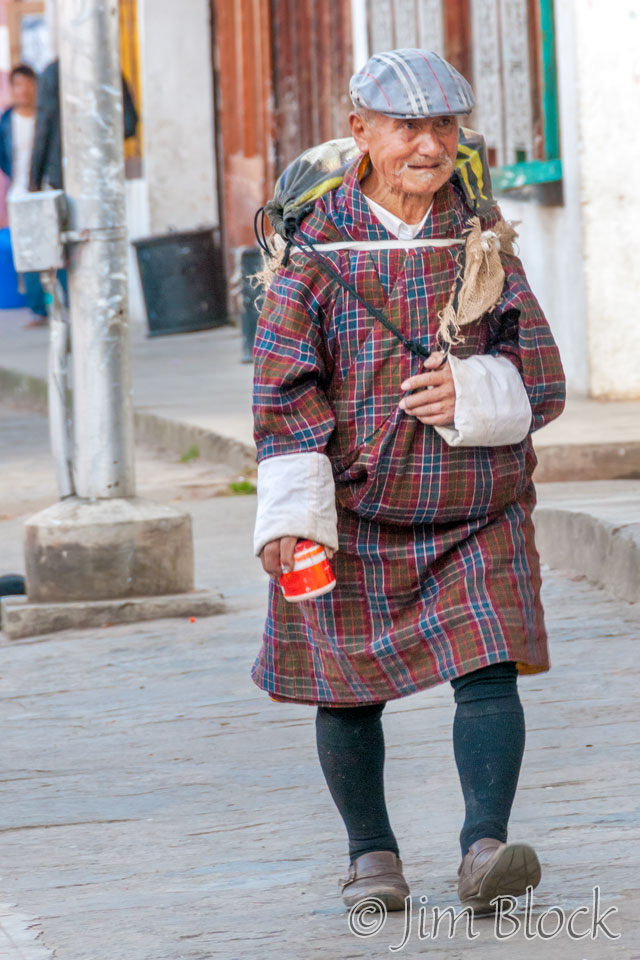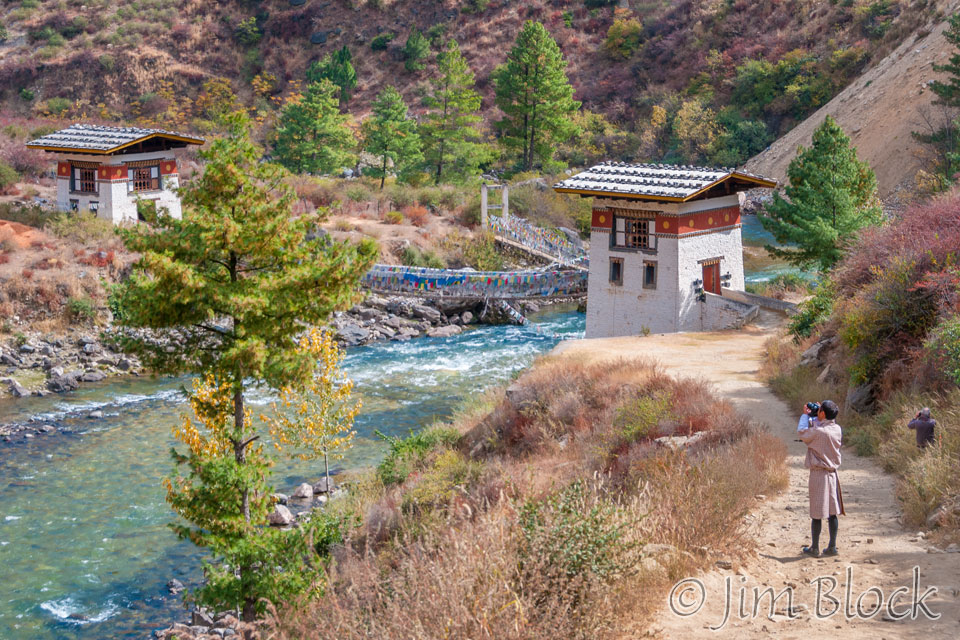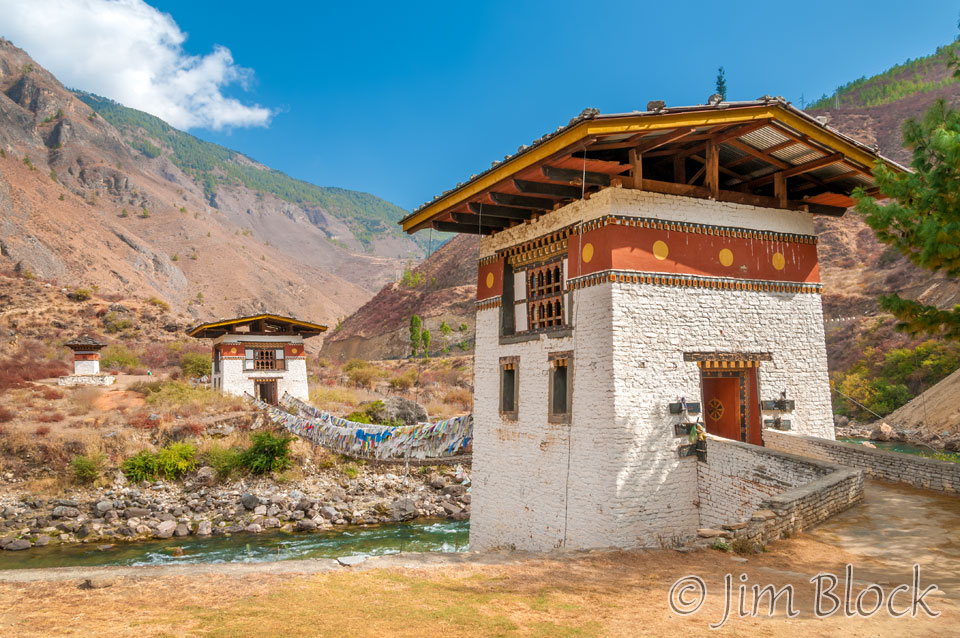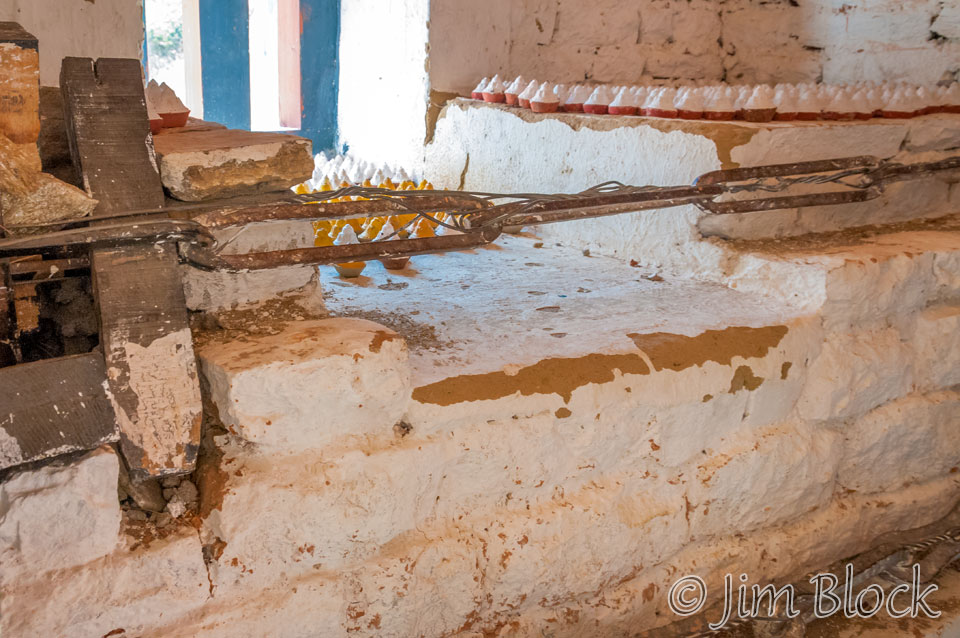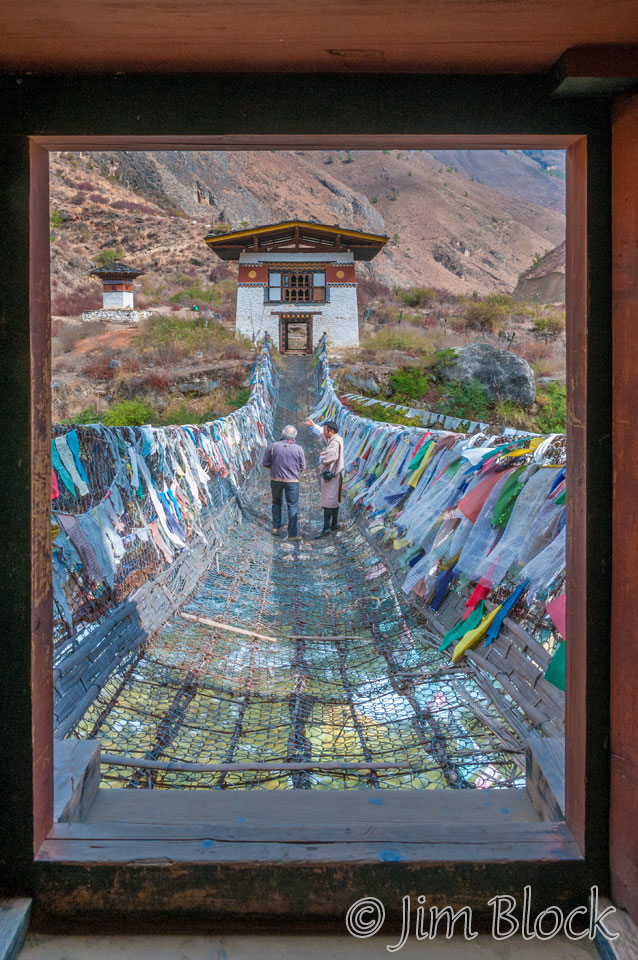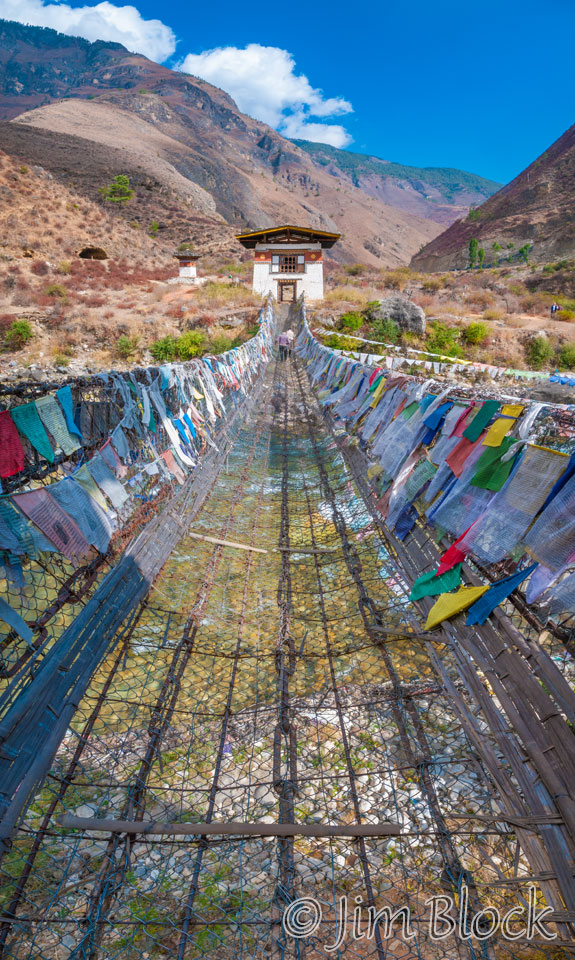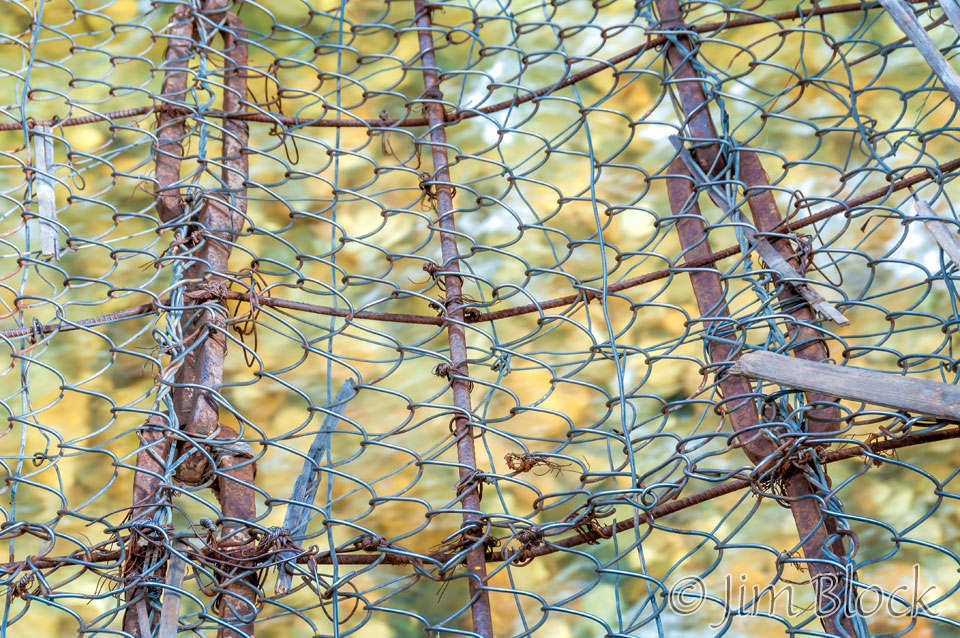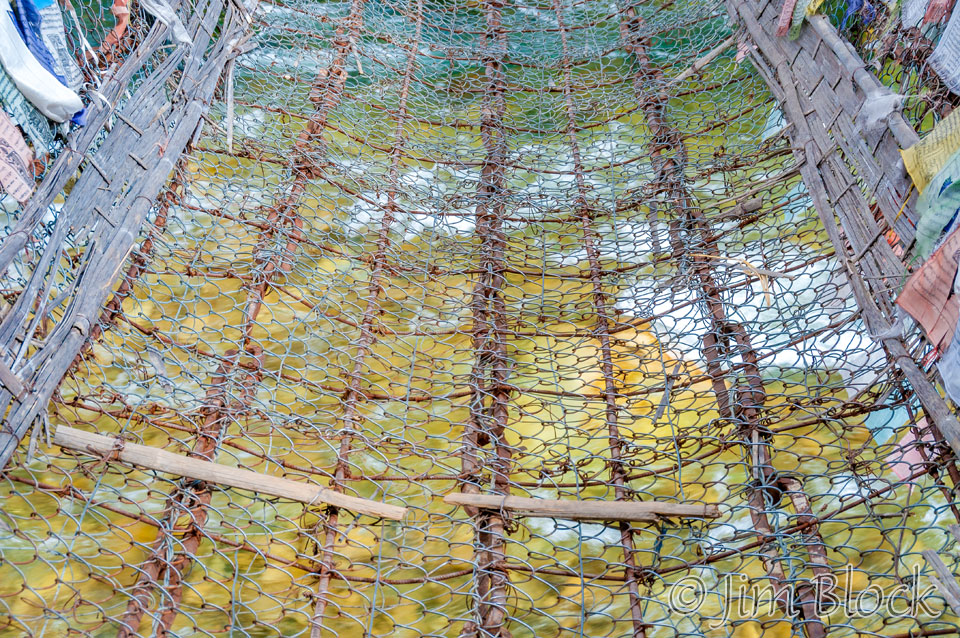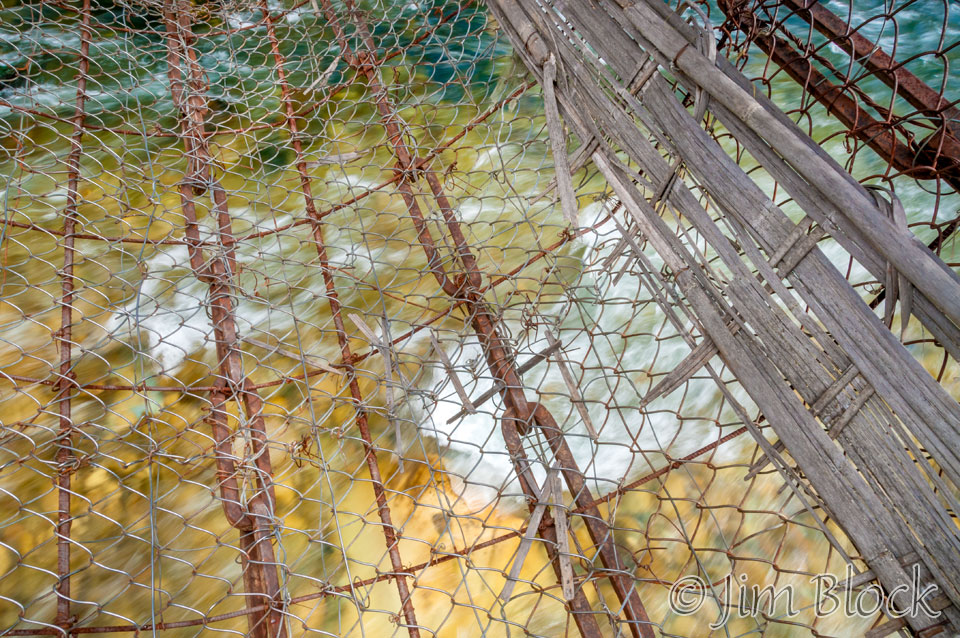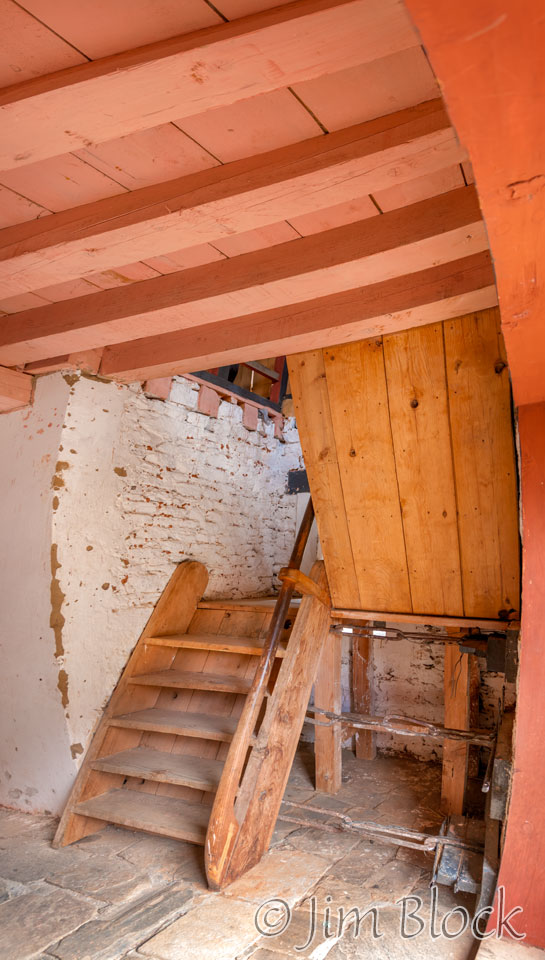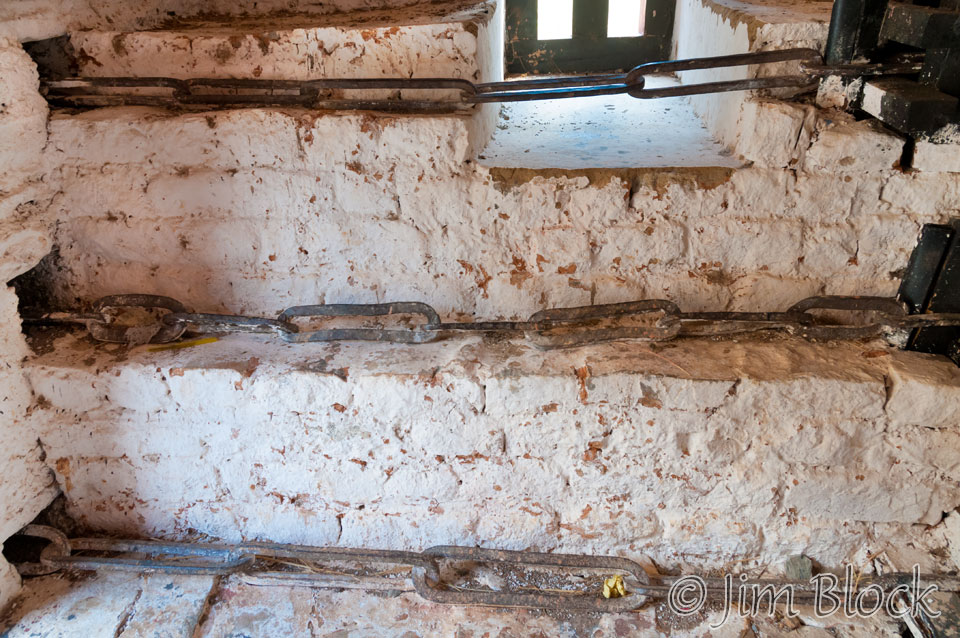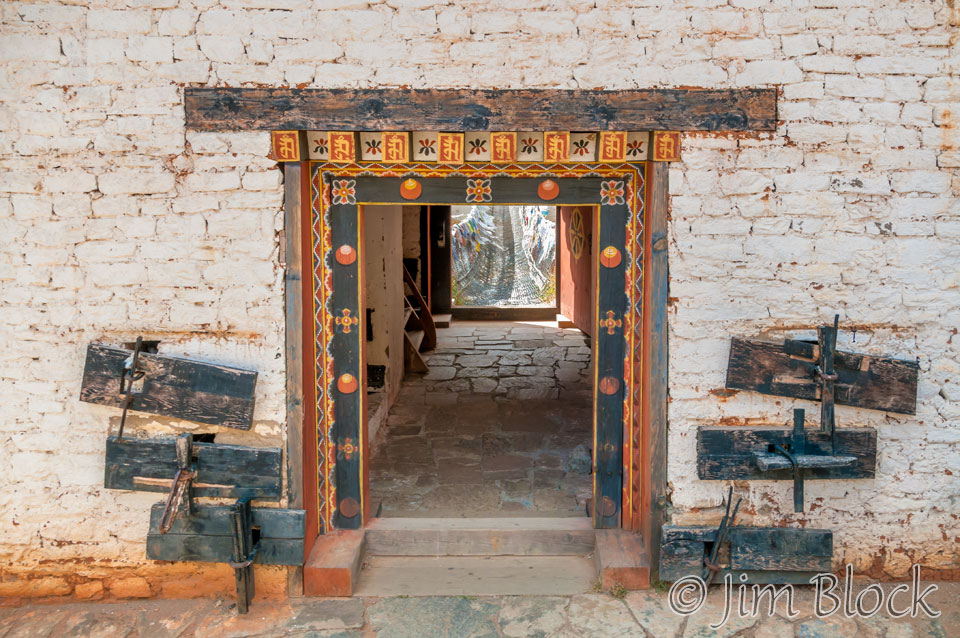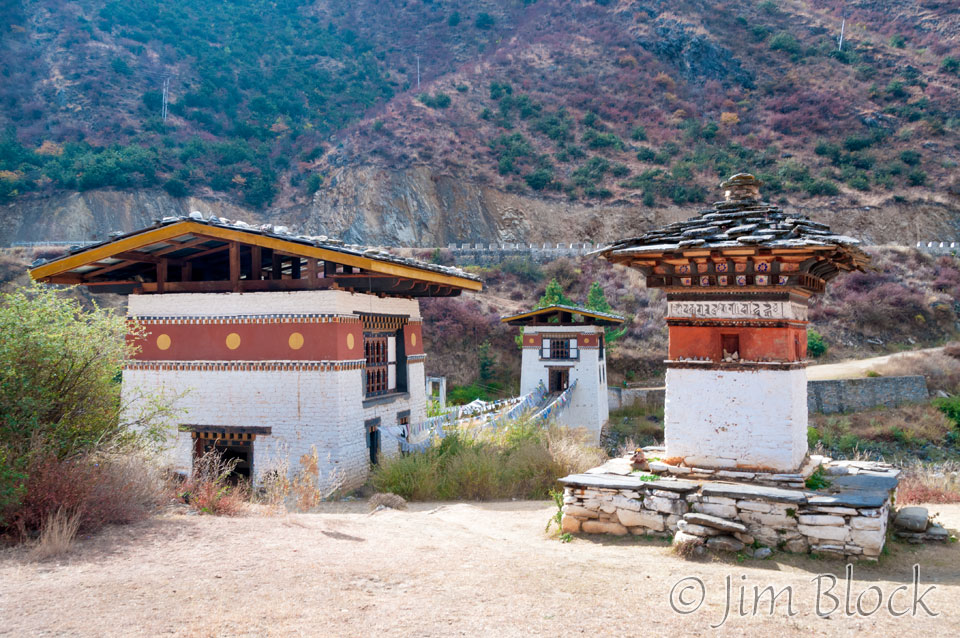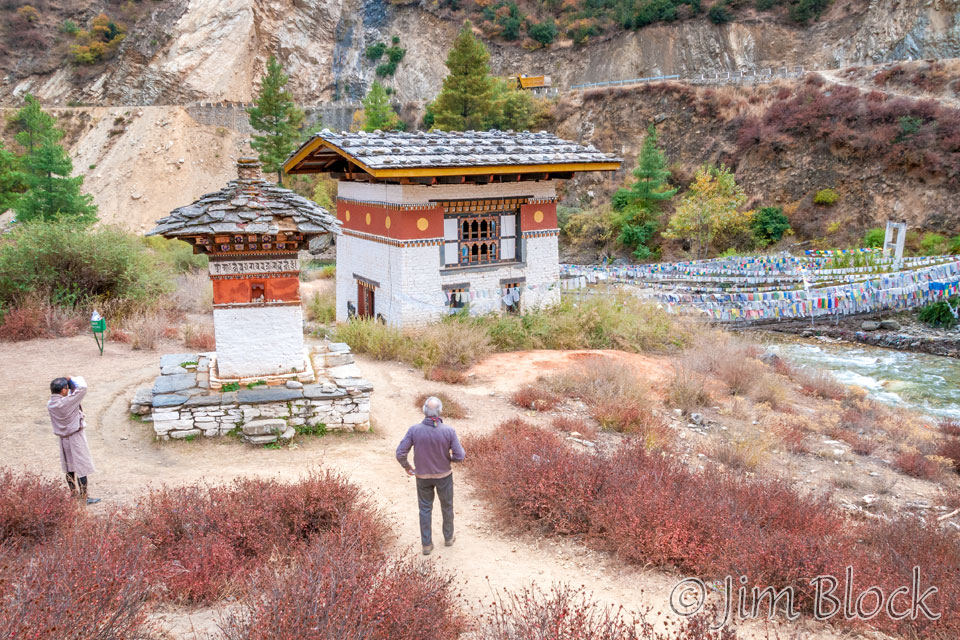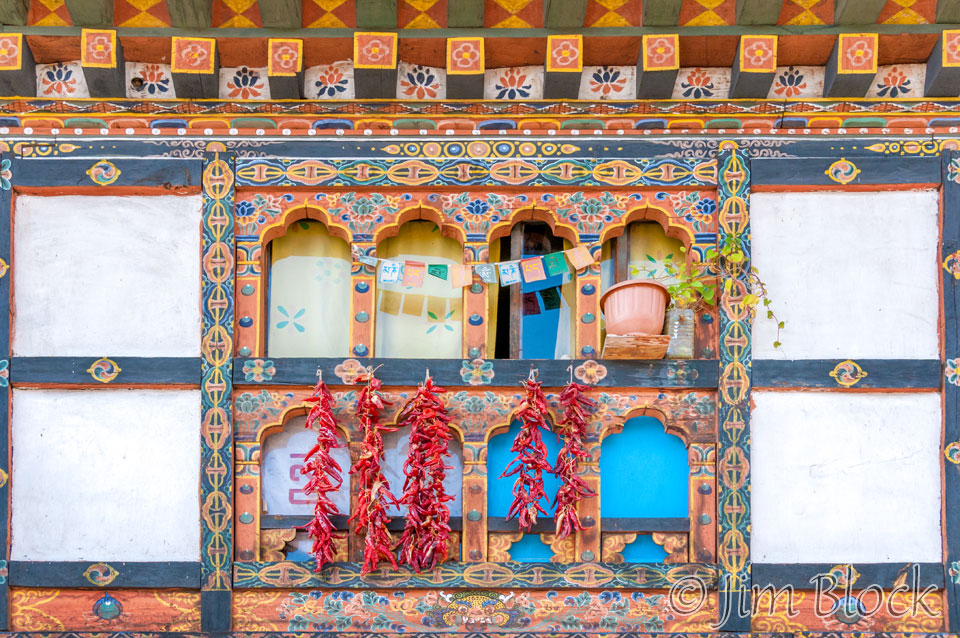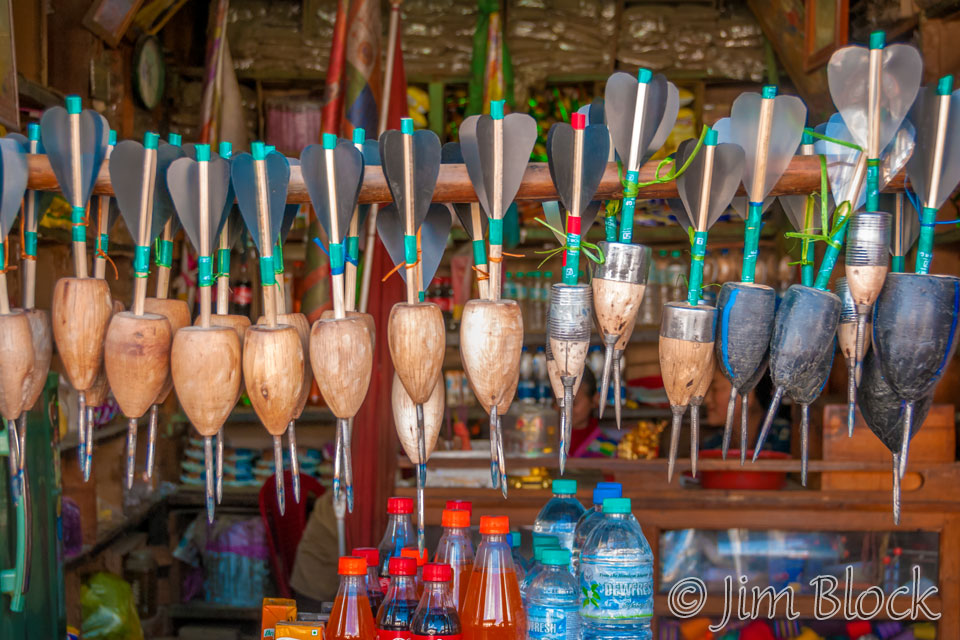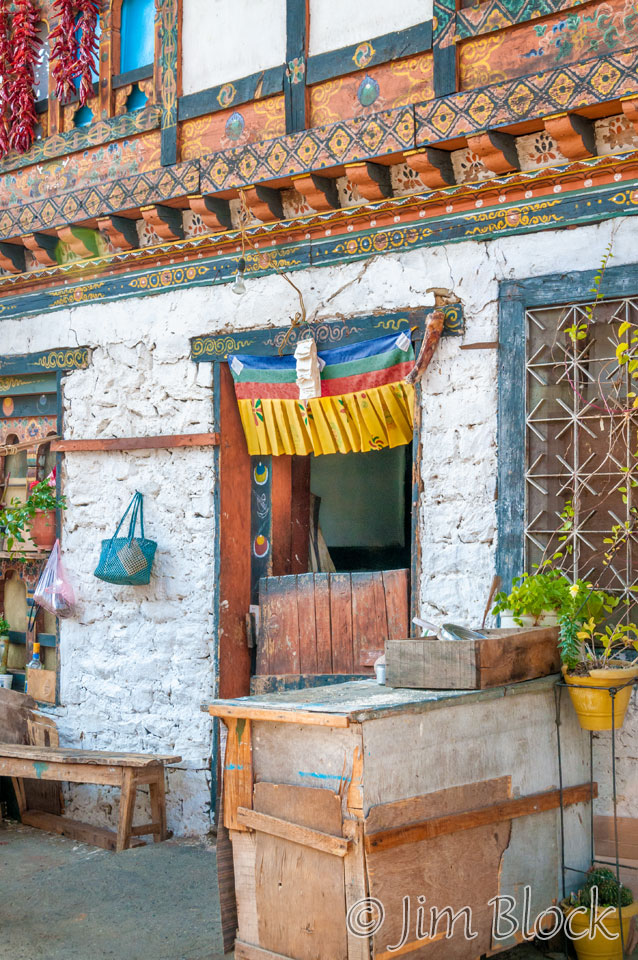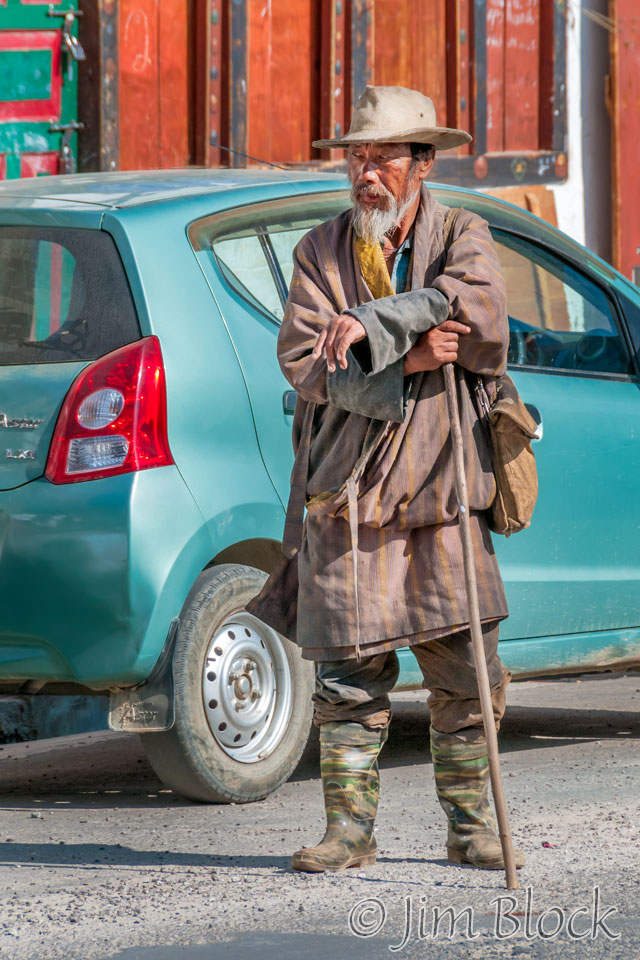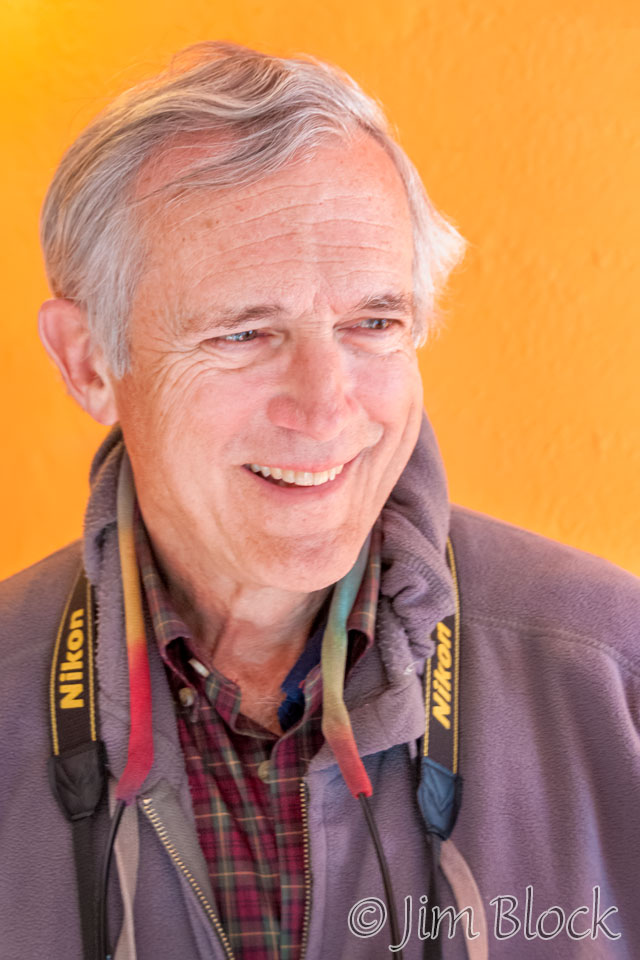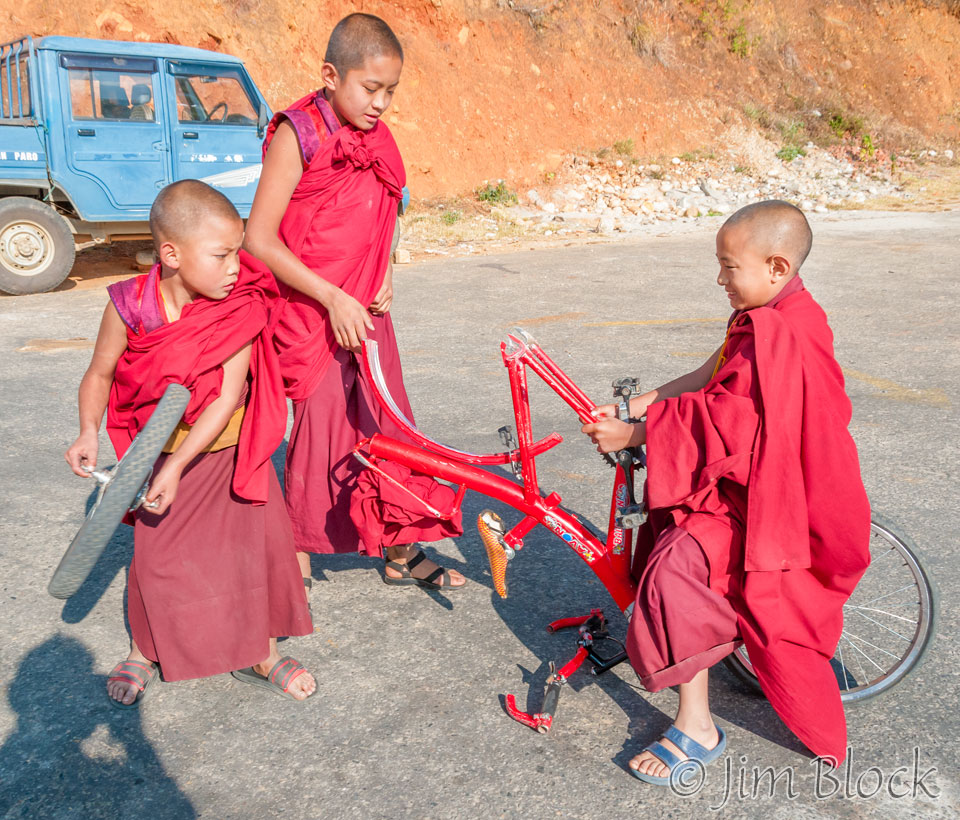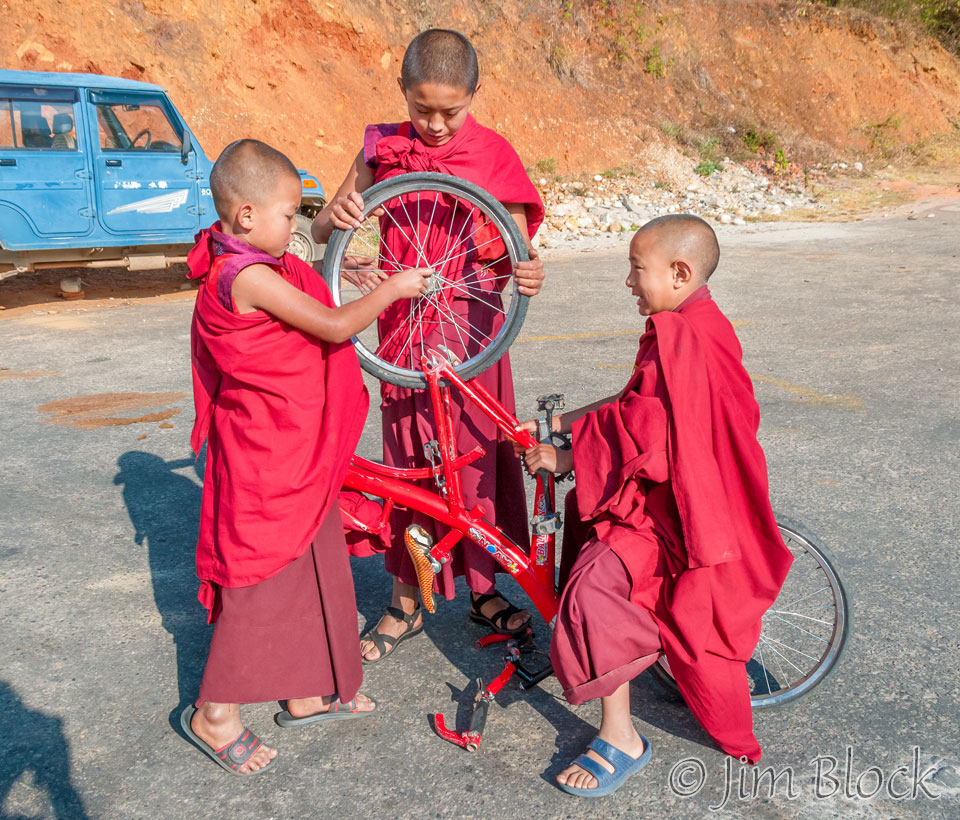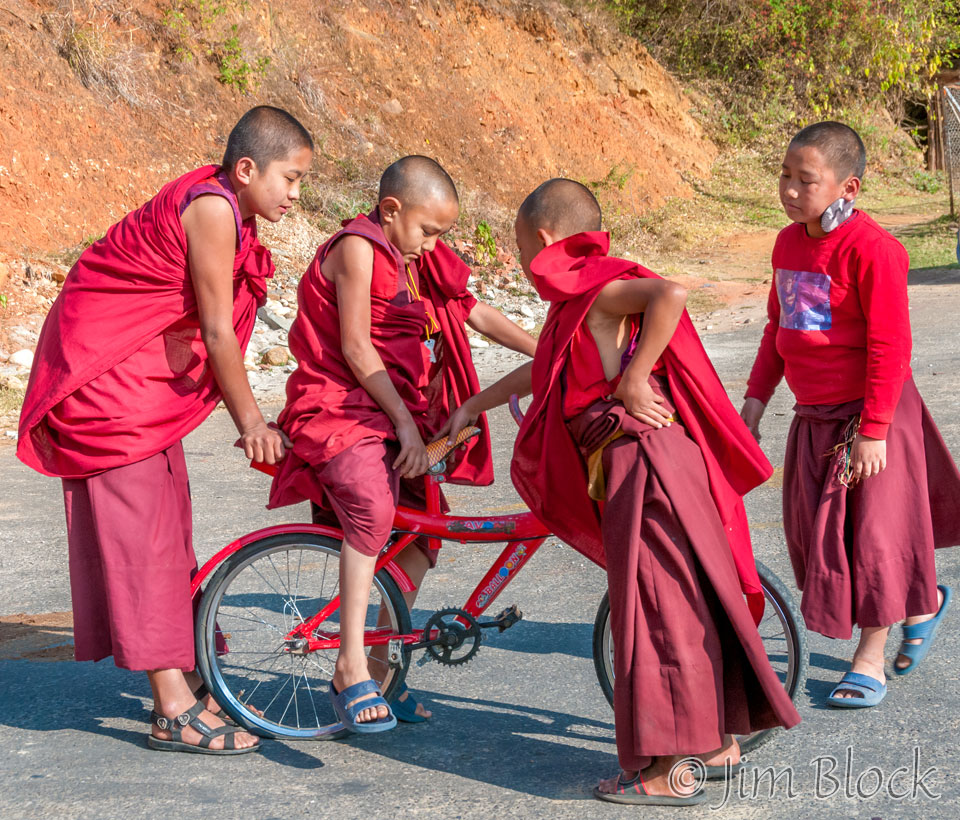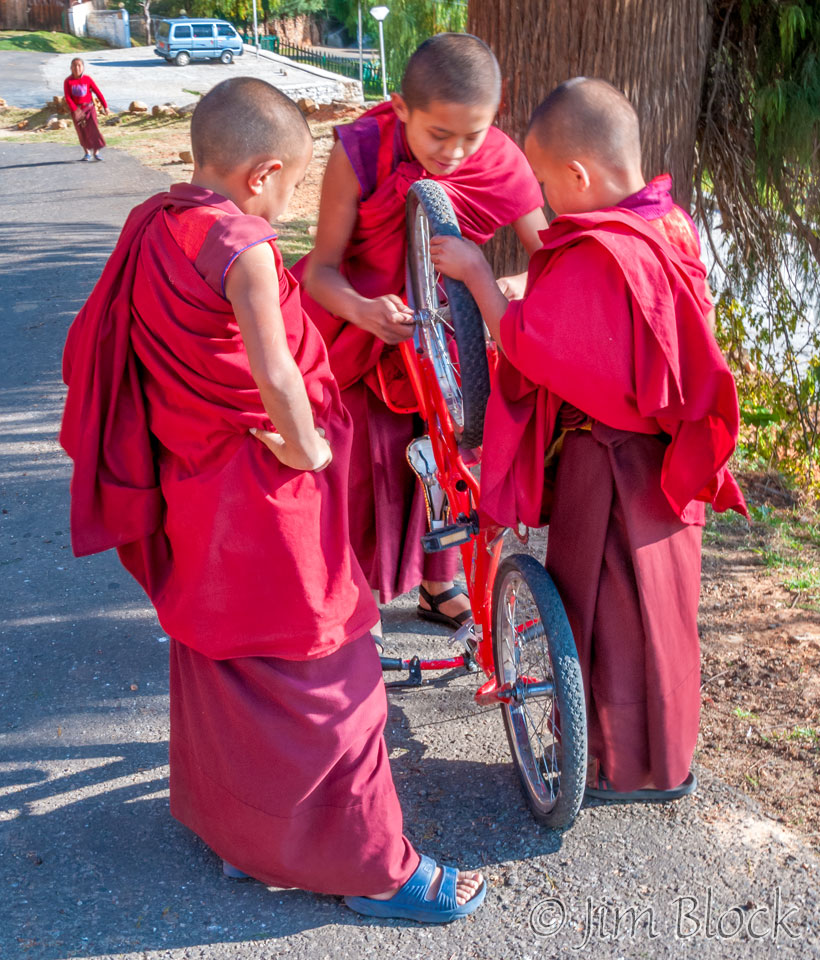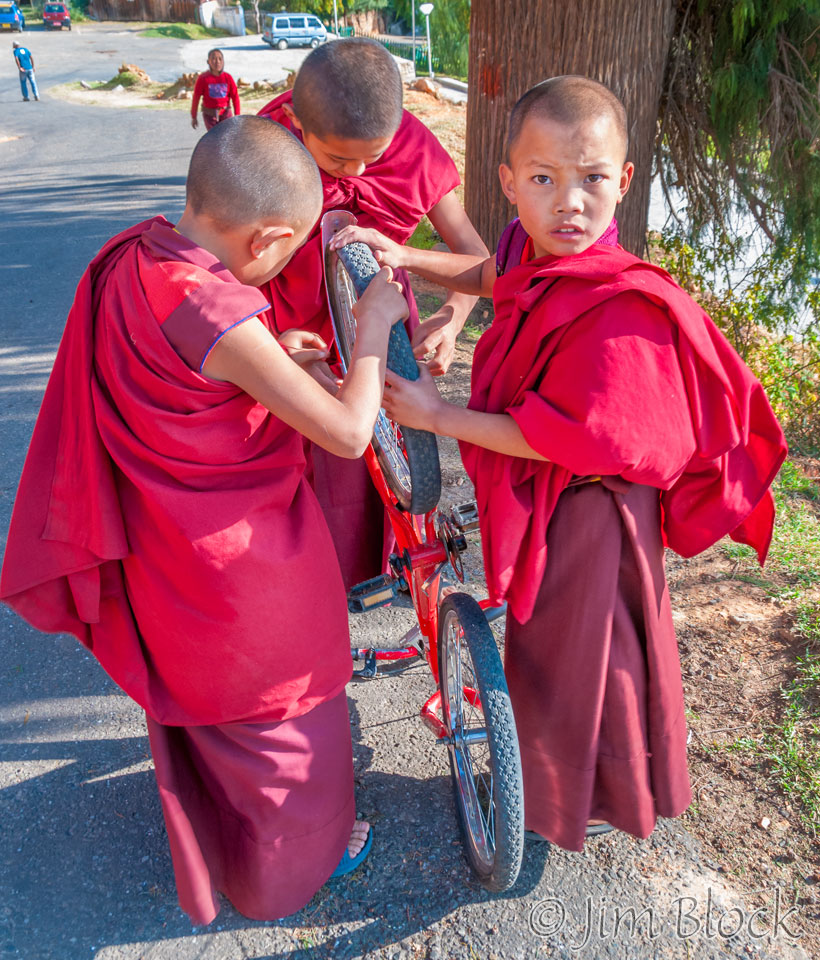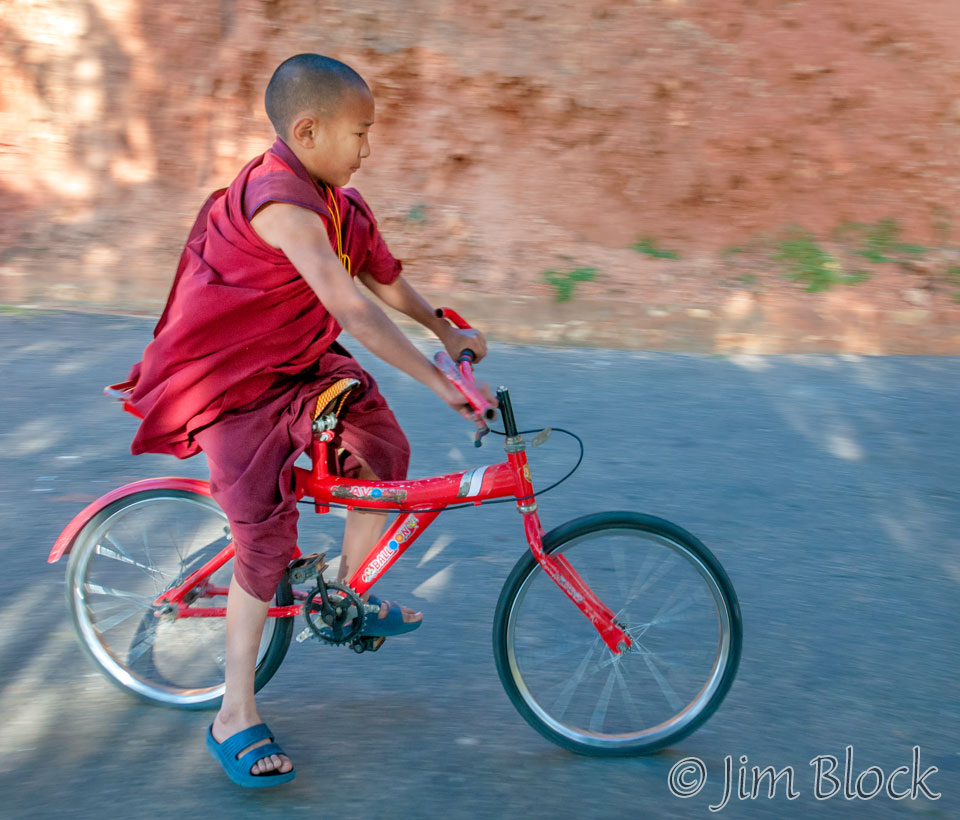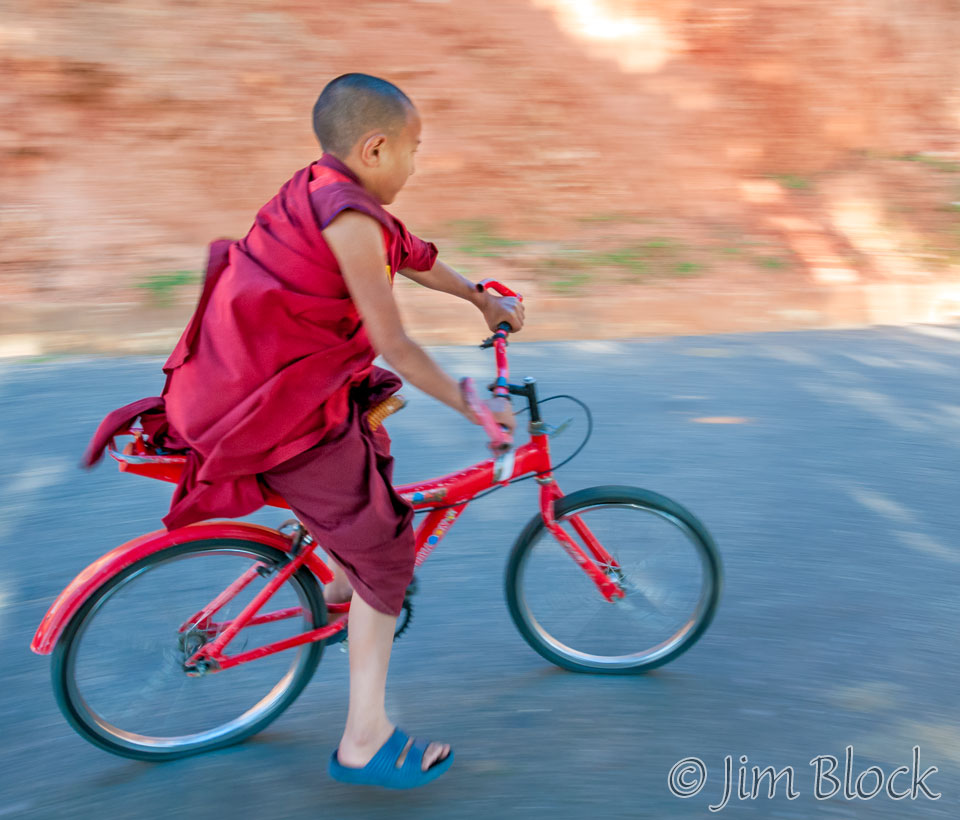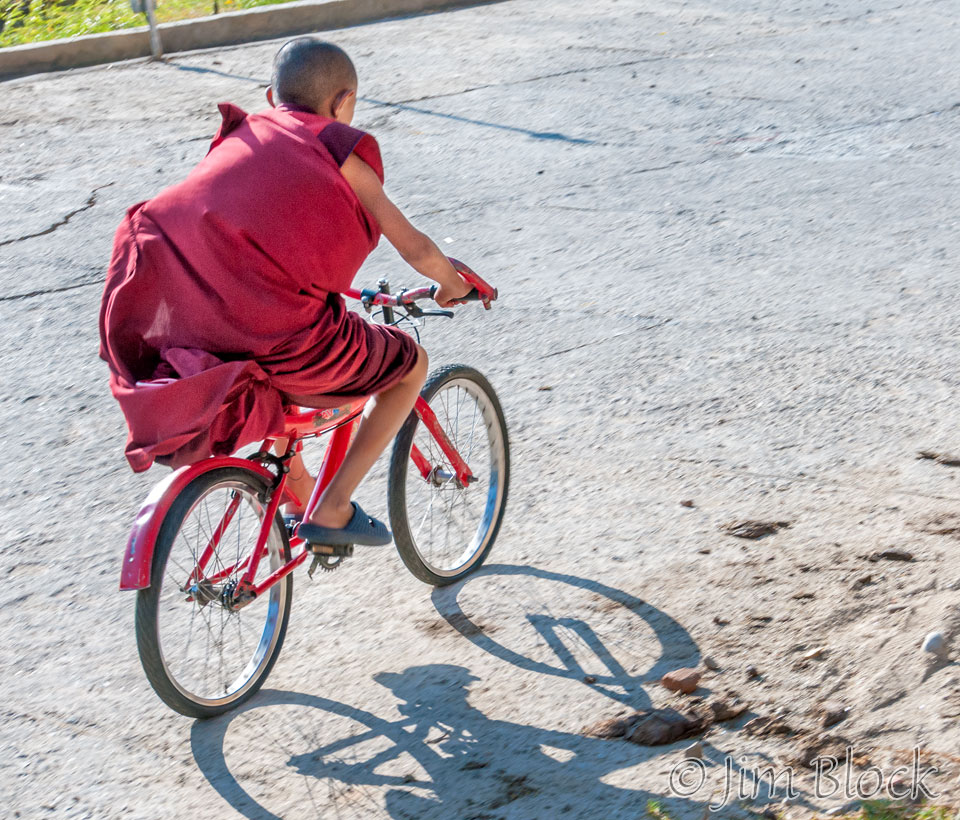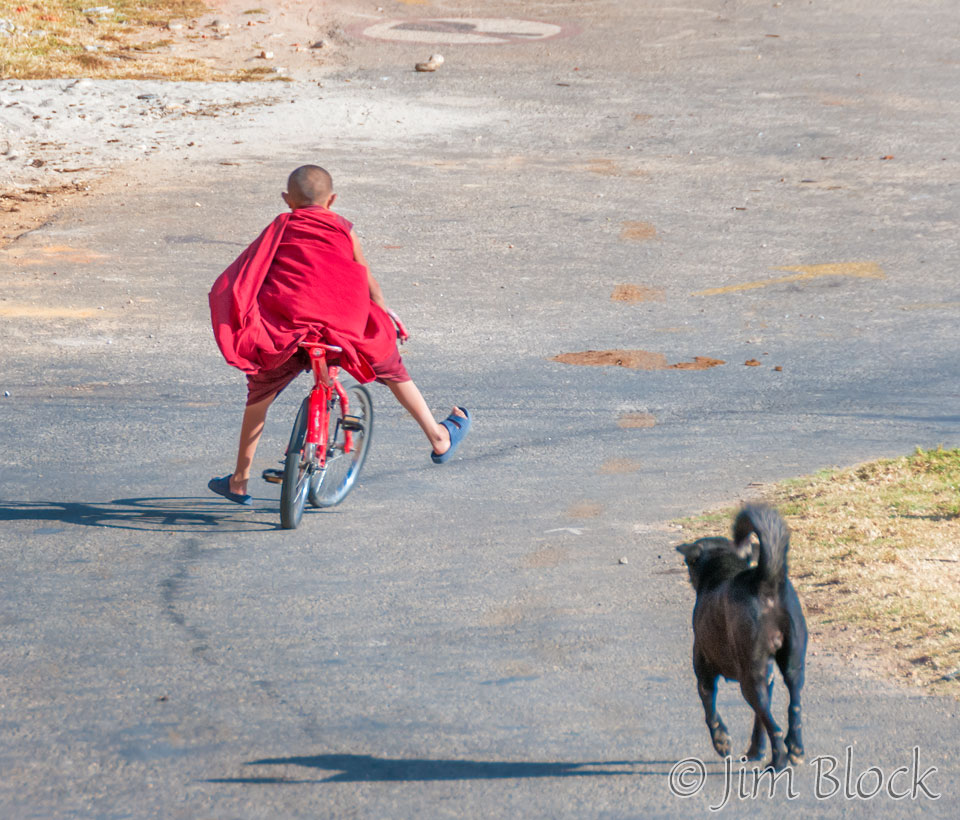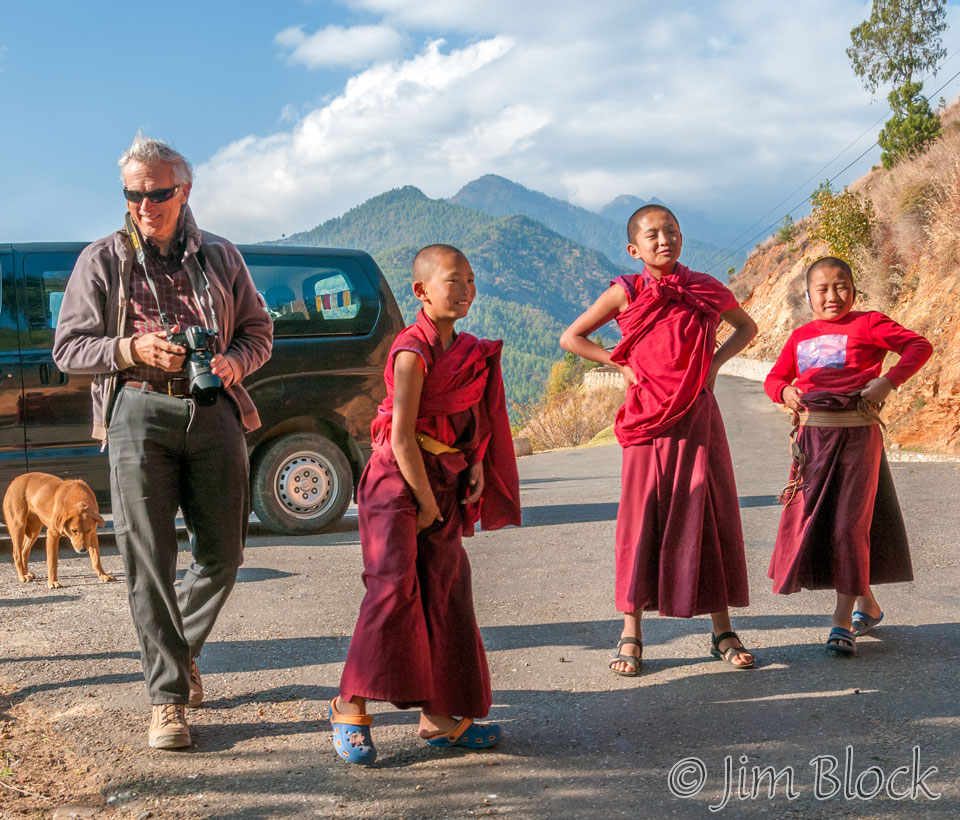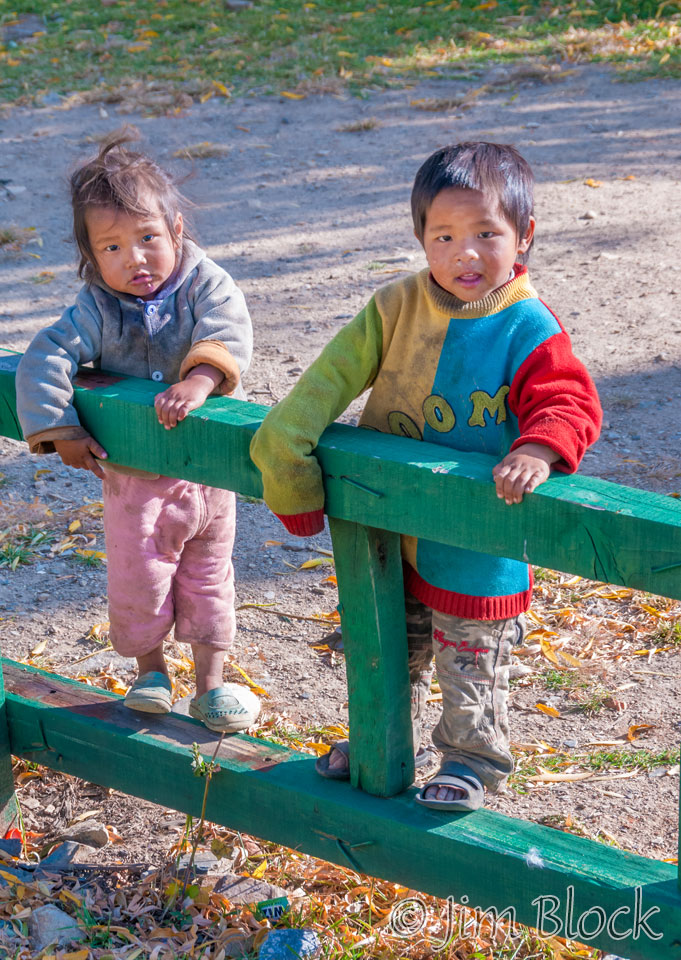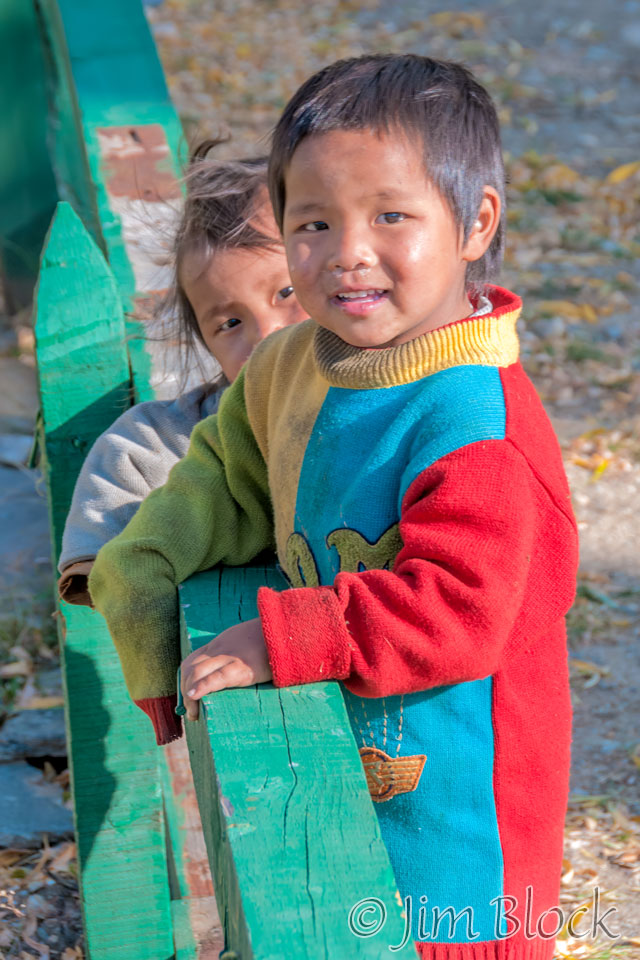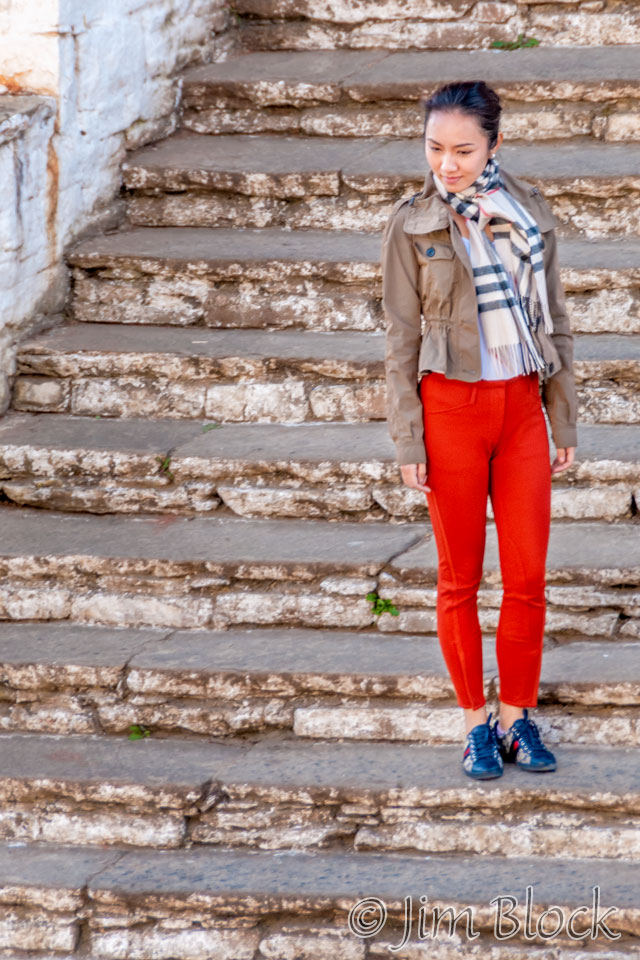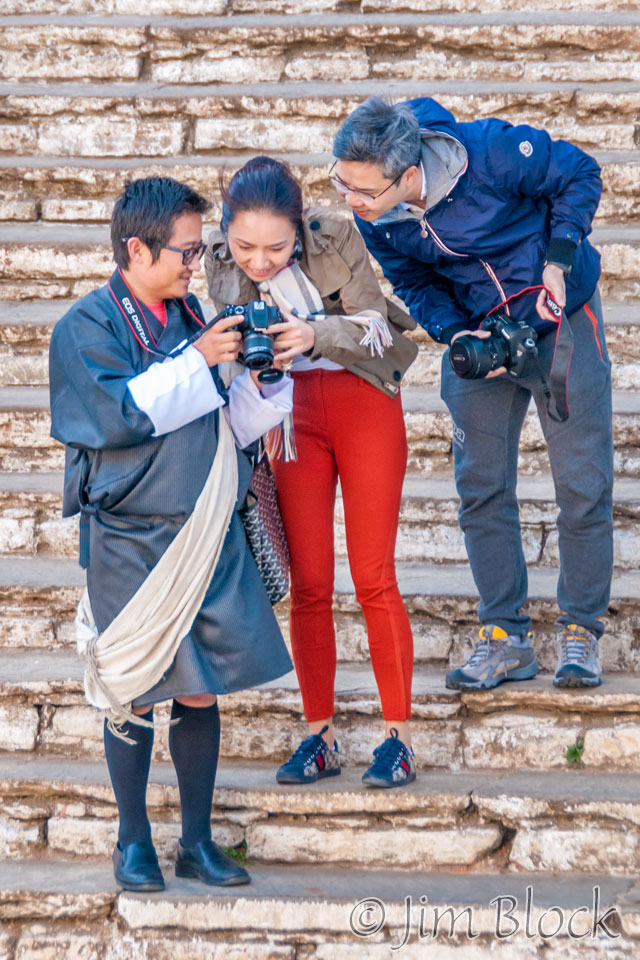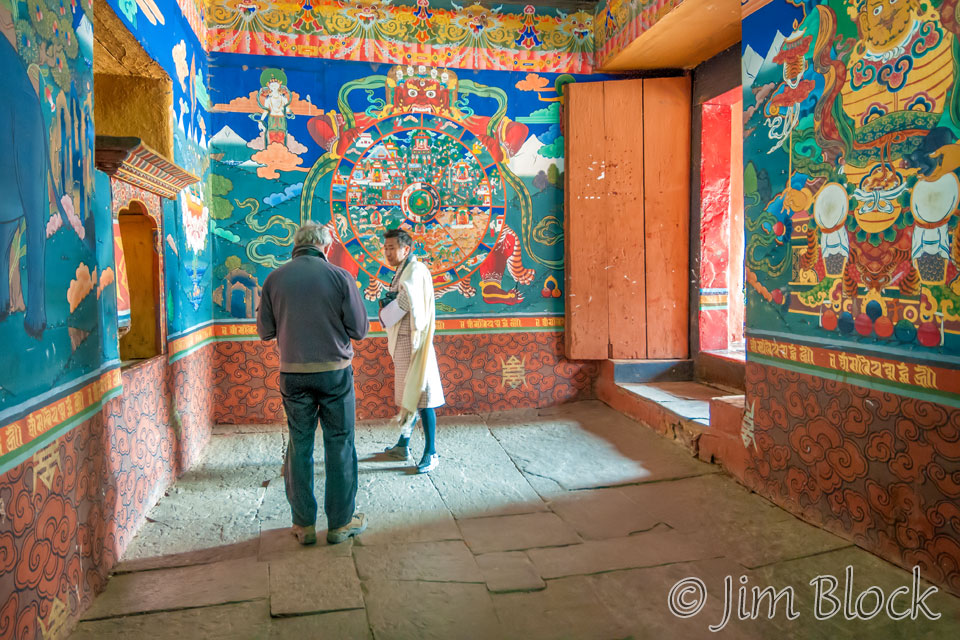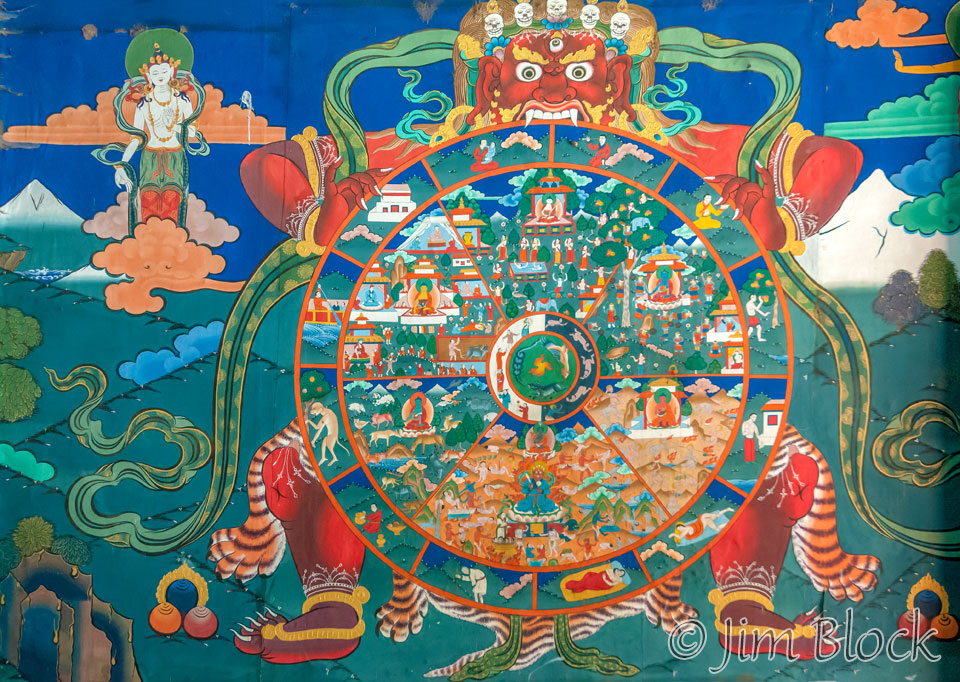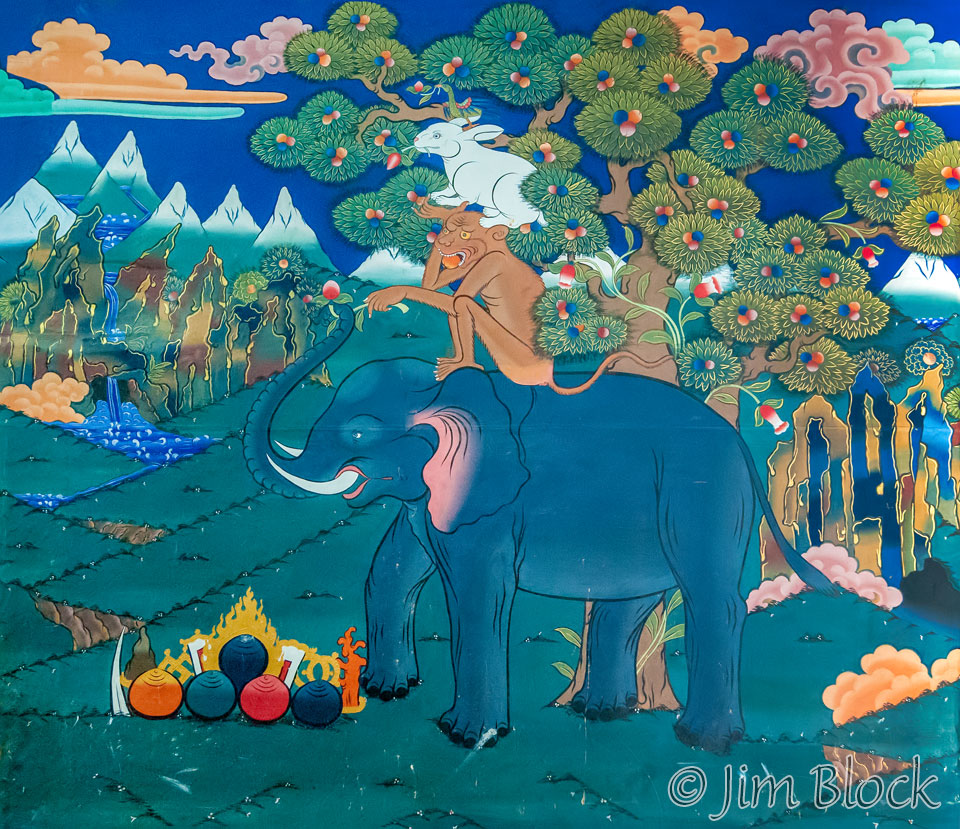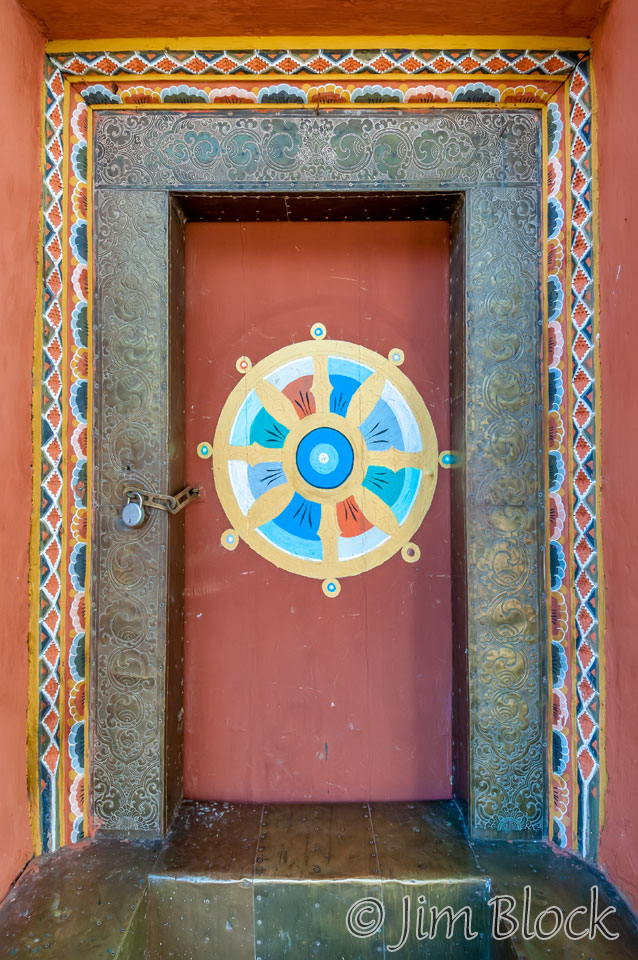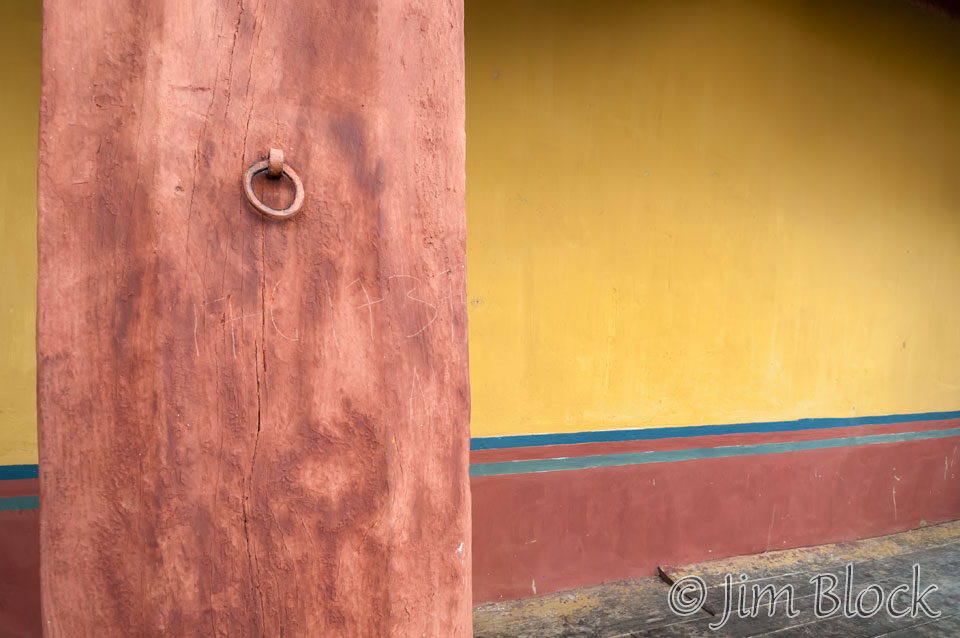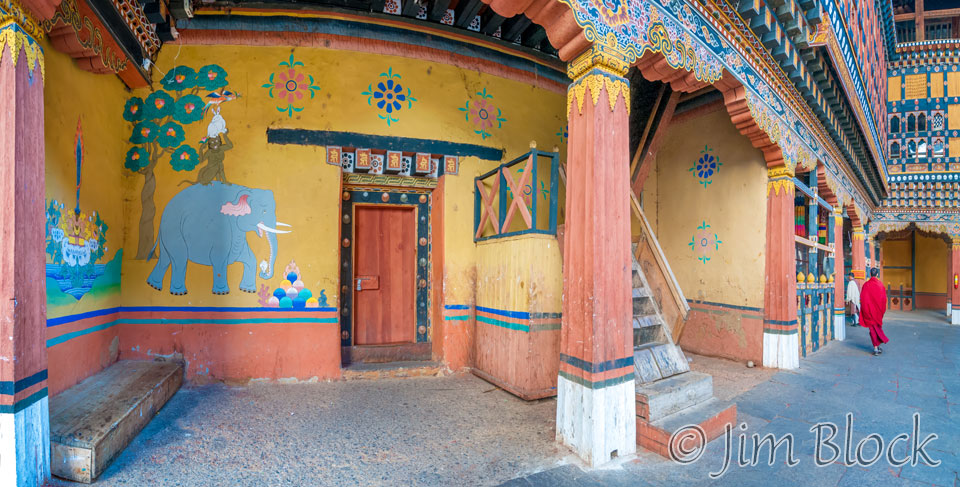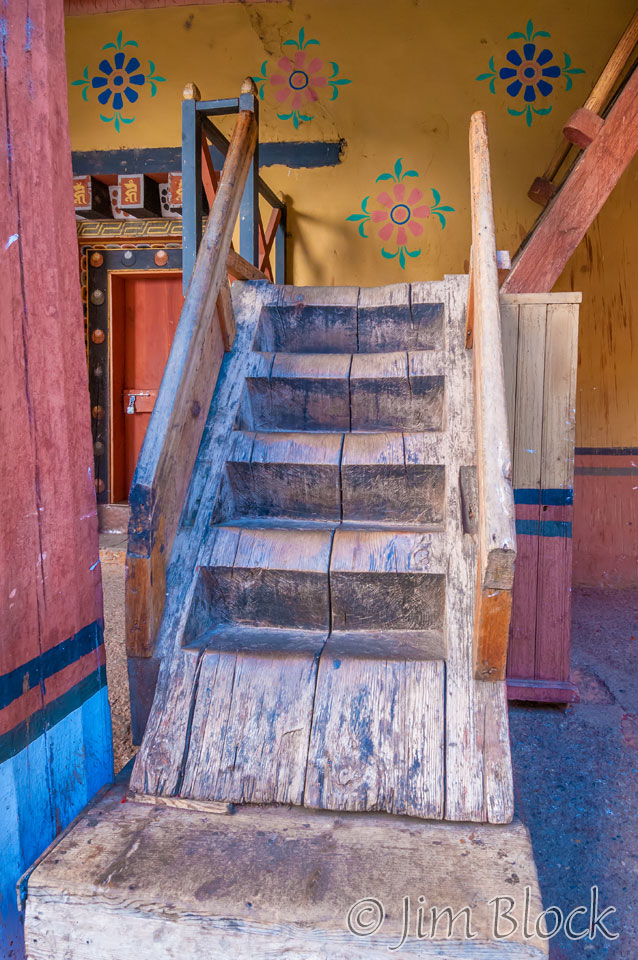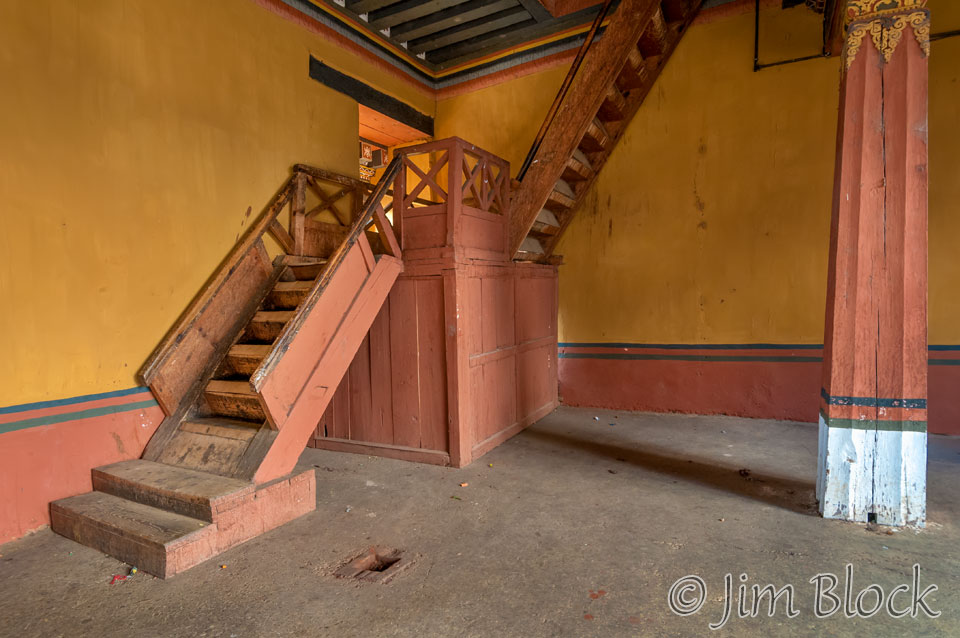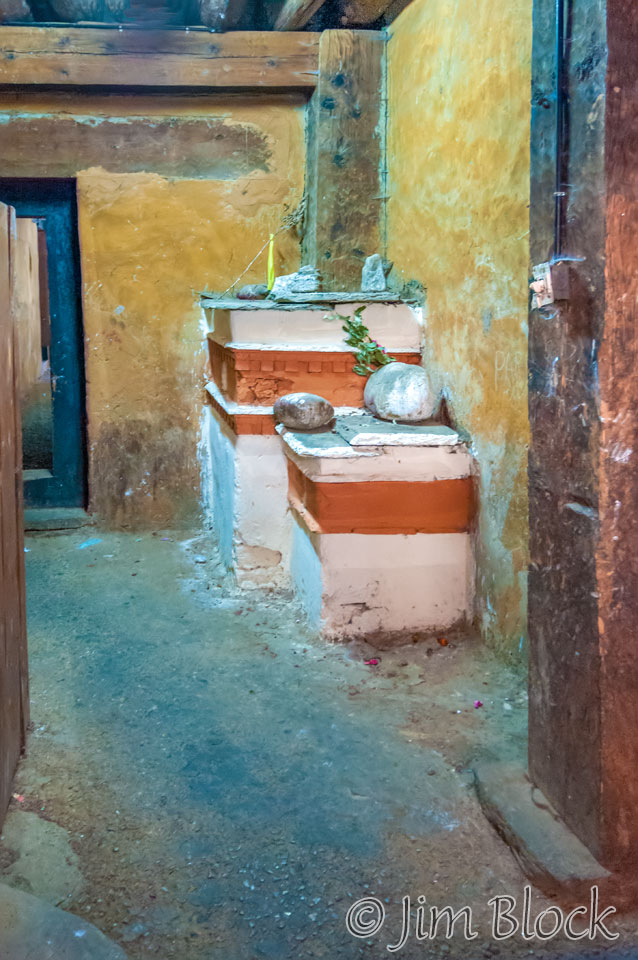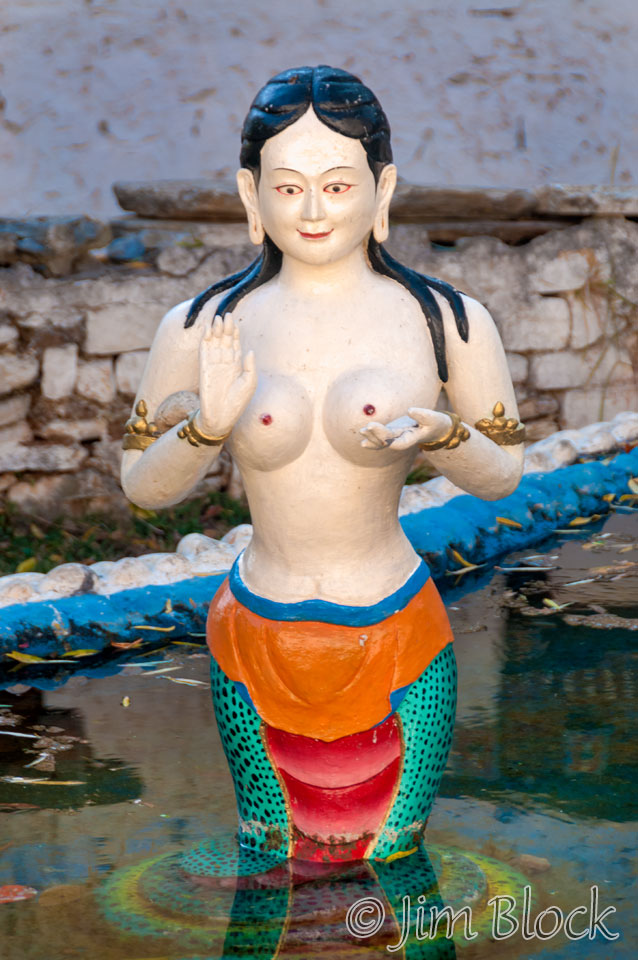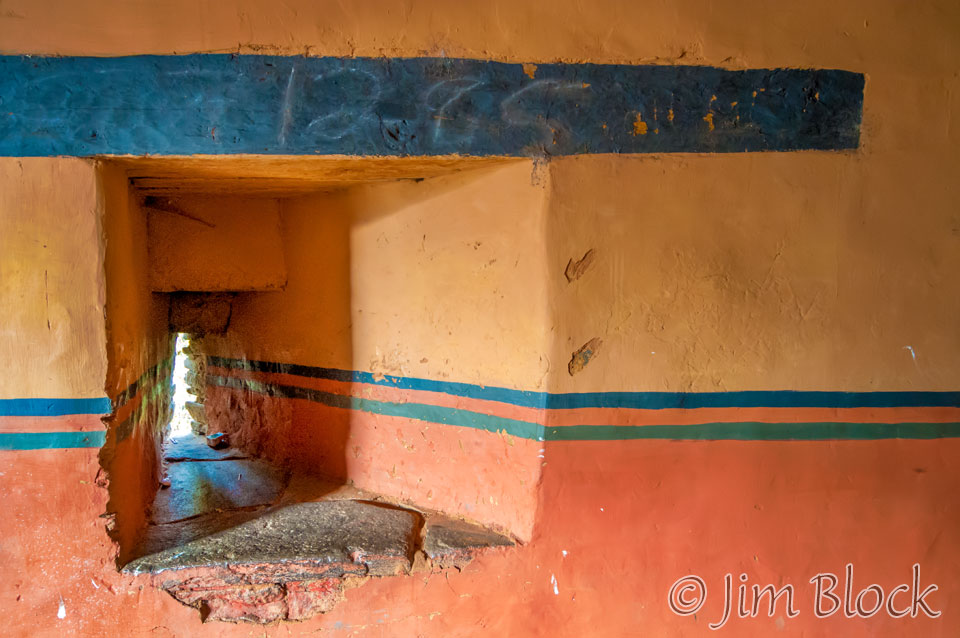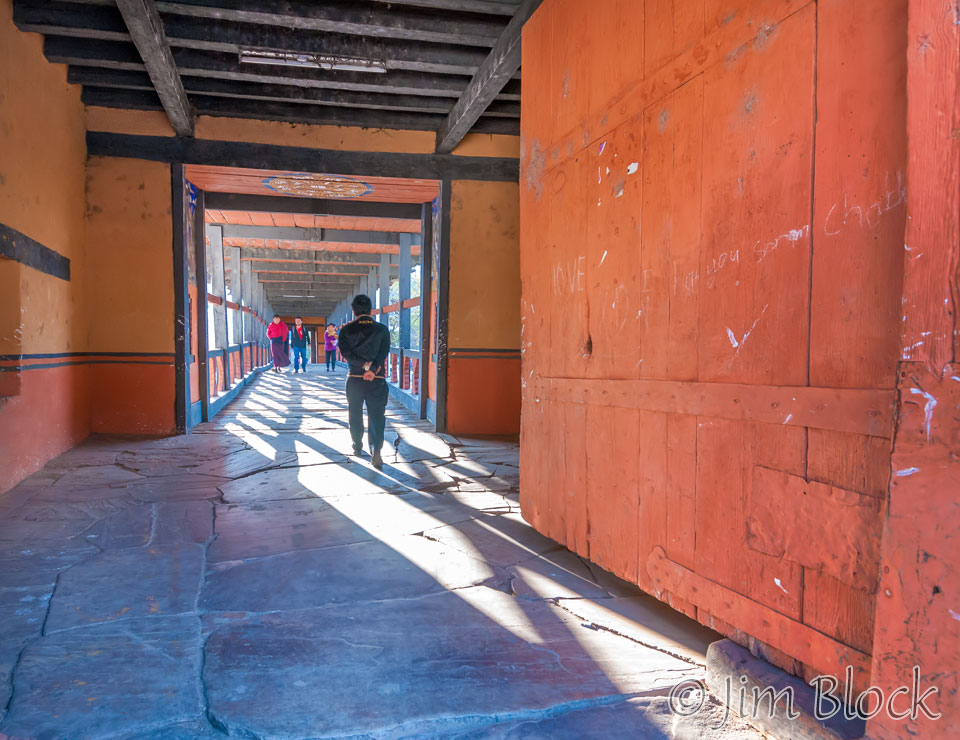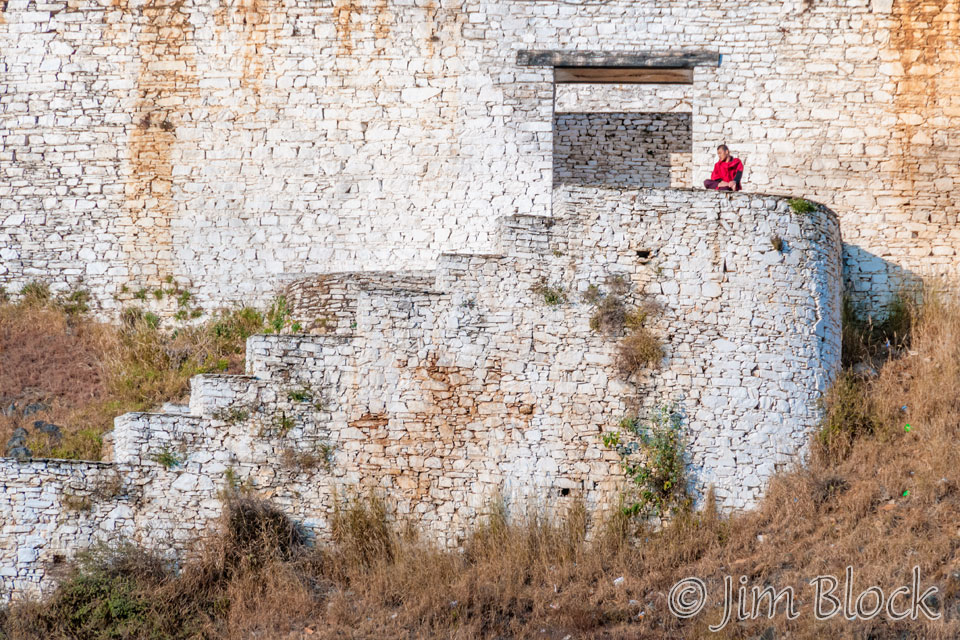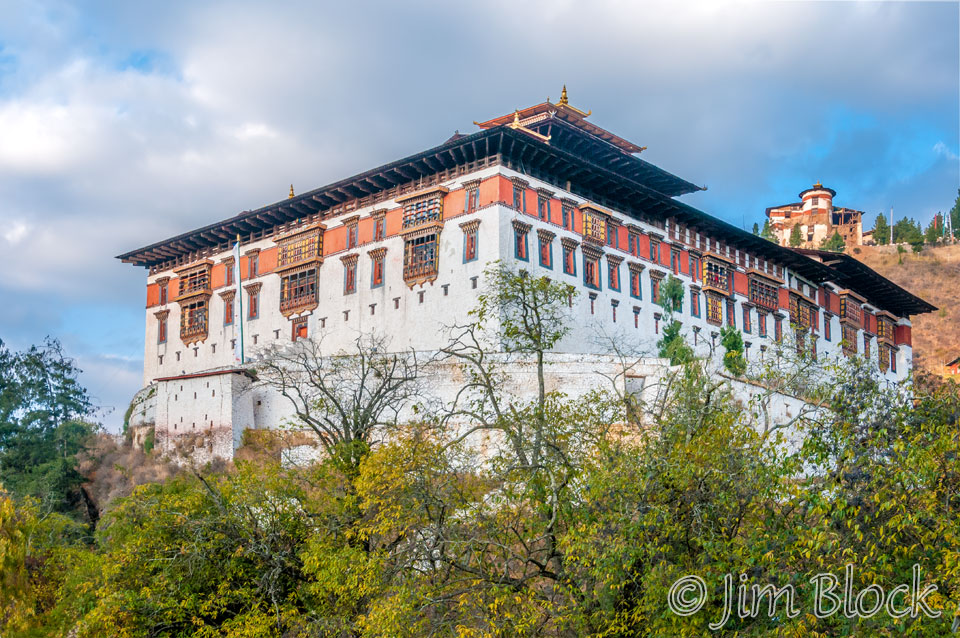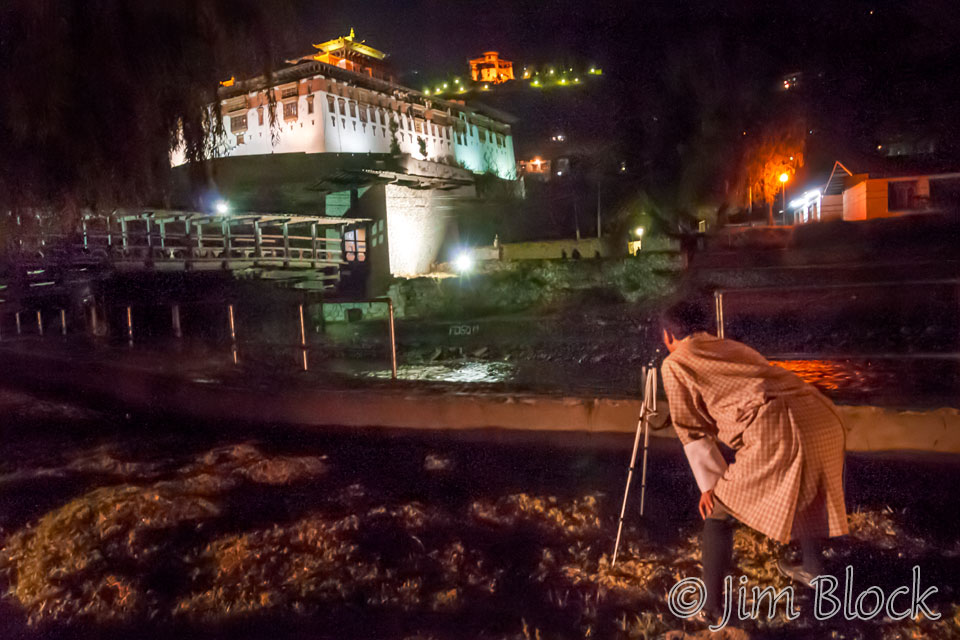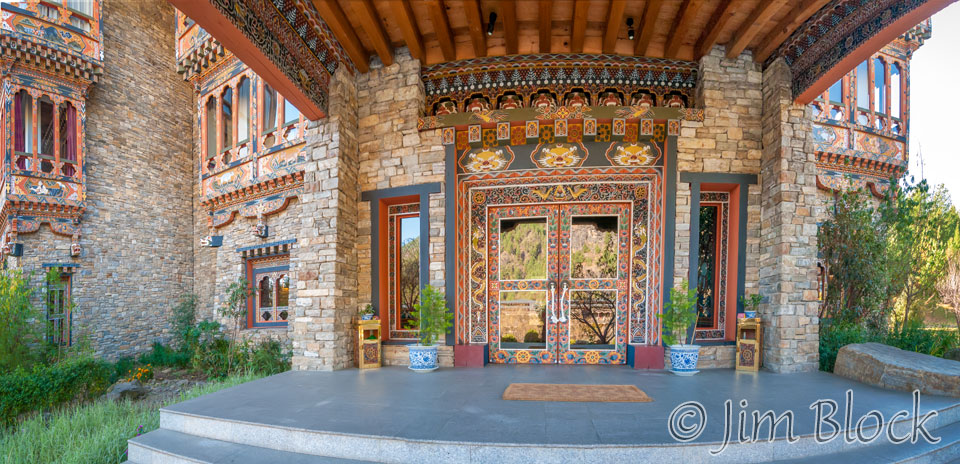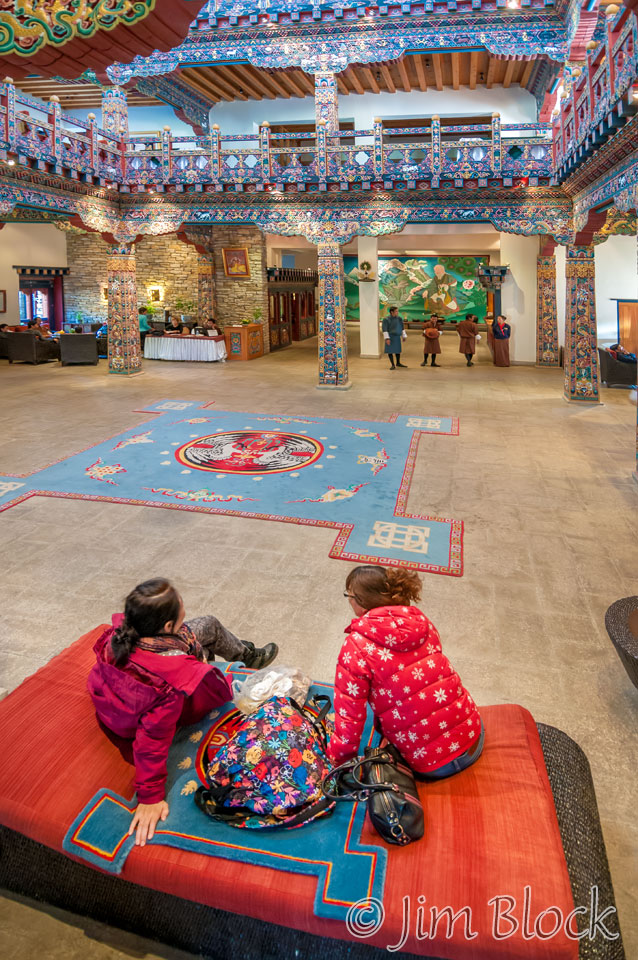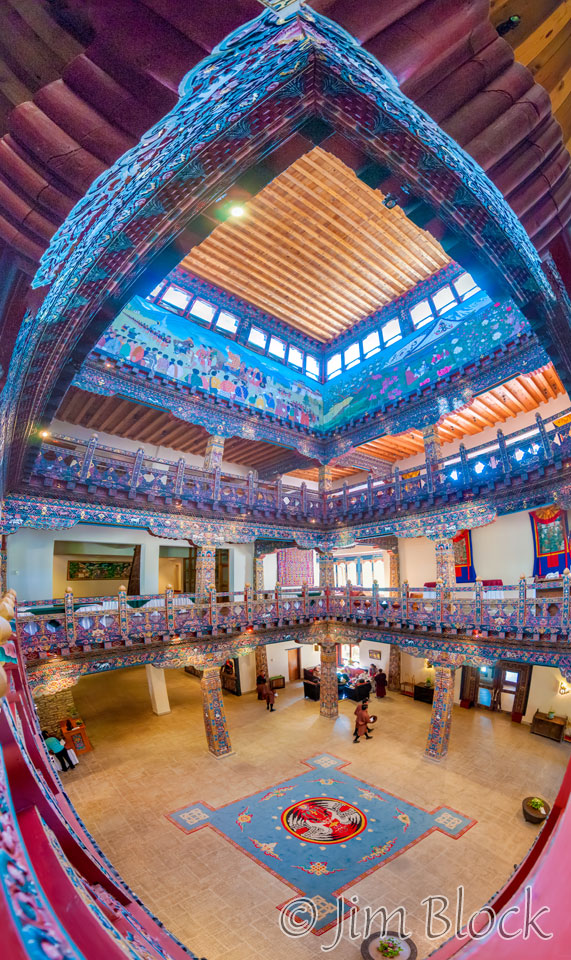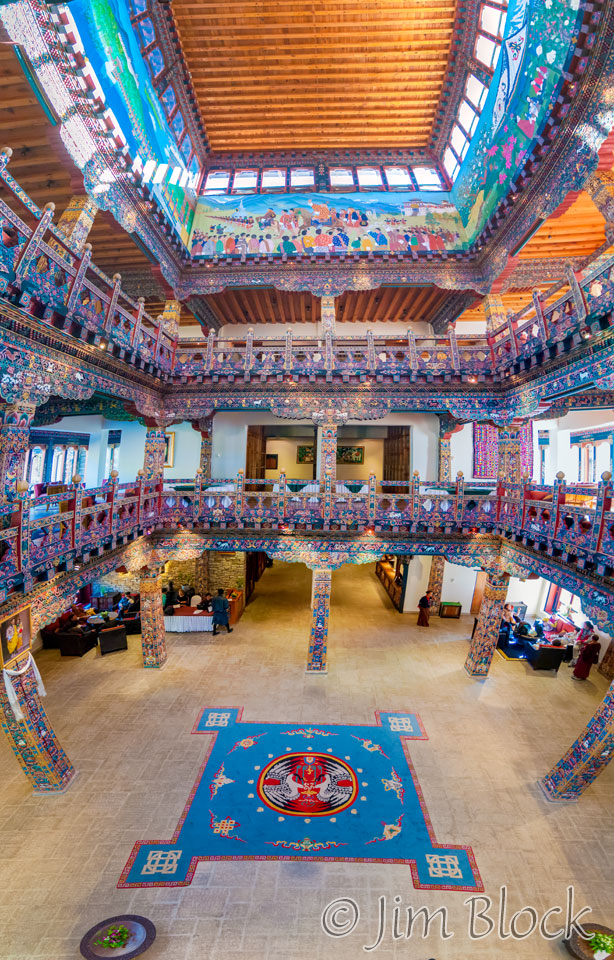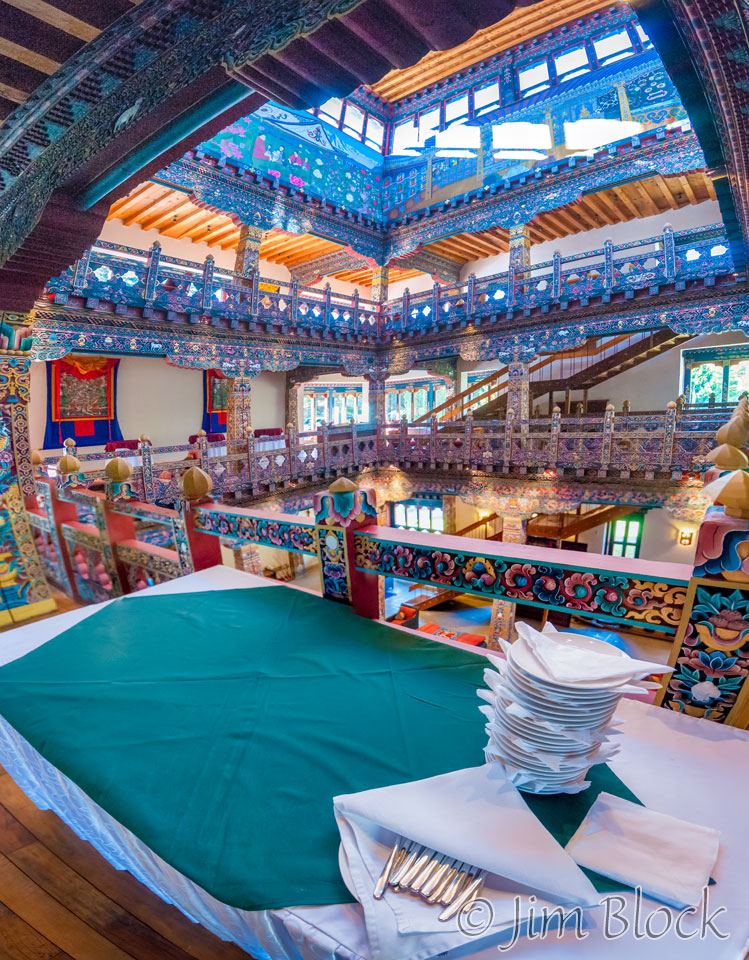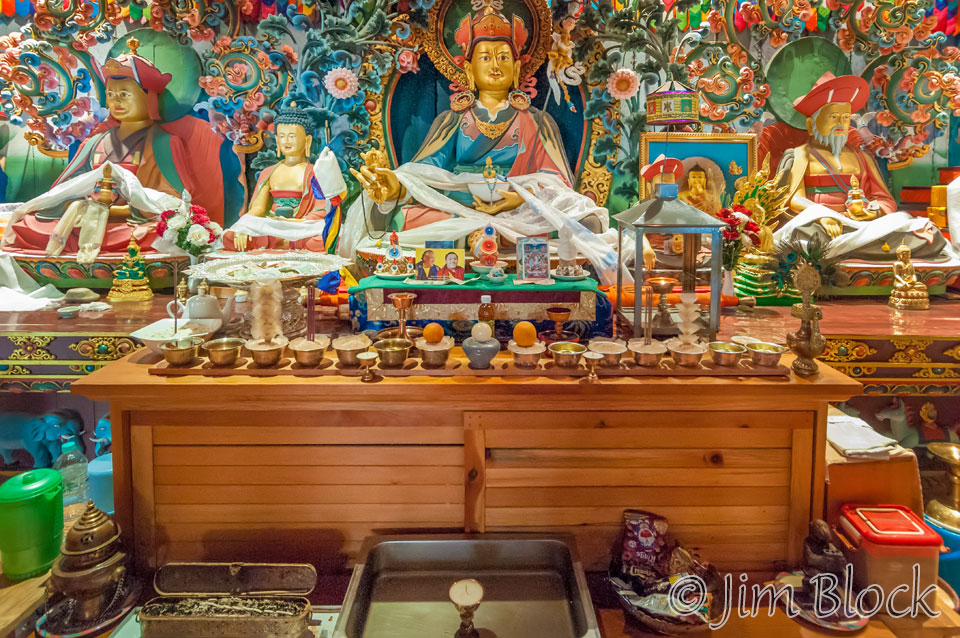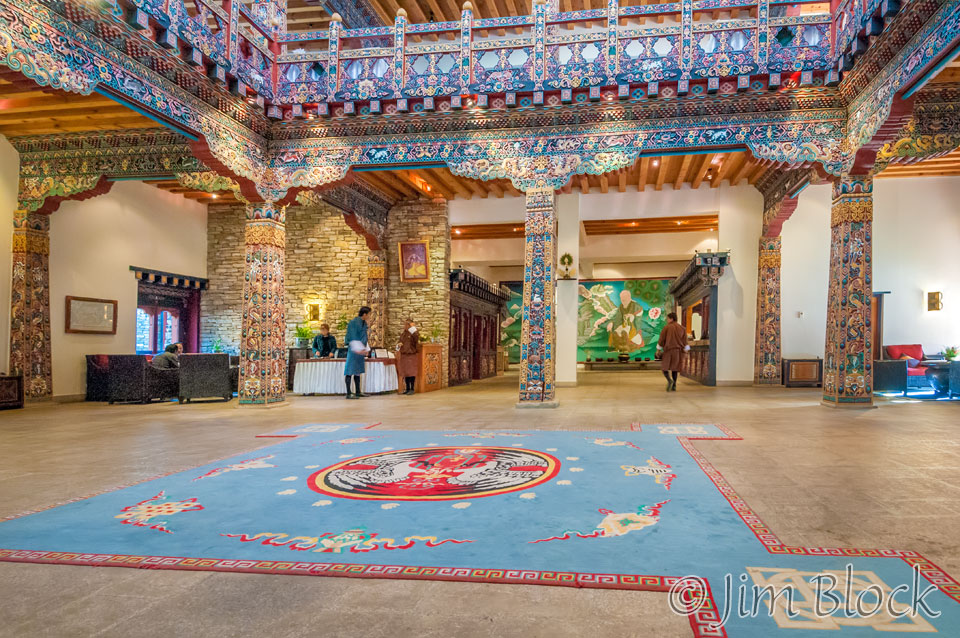This page serves as a chronological guide to our trip to Bhutan. As you work your way through the page you can click each link to get to a page that describes our next adventure, then you can return to this Paro page. You can repeat this process to learn about our trip in the order it happened. There are also special pages on Getting to Bhutan and Back, Ara, and Doma that you can get to from the main Bhutan page.
We spent parts of 9 days in Paro, but only one of them was a full day — the day we hiked up to Tiger’s Nest and had a hot stone bath in the evening. We had two overnight stays in Paro, the first in a nice hotel with noisy floors and poor internet and finally at the beautiful and very upscale Zhiwa Ling, a special treat from Dhamey that was certainly unexpected.
The Paro Airport is one of the world’s most challenging airports. Only a very few pilots are certified to land there. It has only one runway. It is flown visually through a valley with high mountains all around and no sight of the airport until the last moment. It is the only international airport in Bhutan, so this is the way most people arrive. We found our three flights (two takeoffs and one landing) to be exciting but not at all scary. The views of the mountains coming or leaving the airport can be stunning. We flew to Paro from Delhi, India.
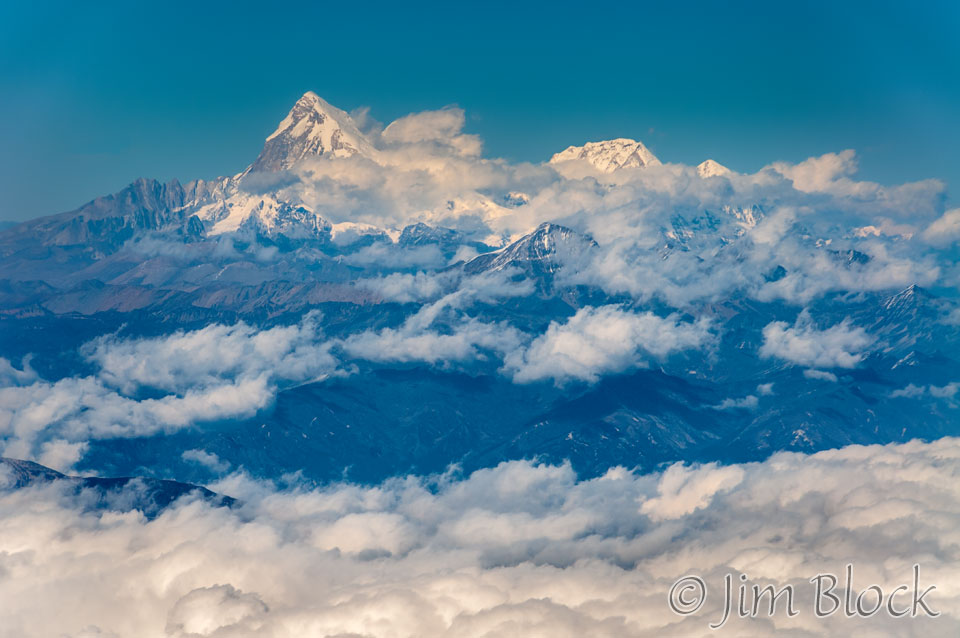
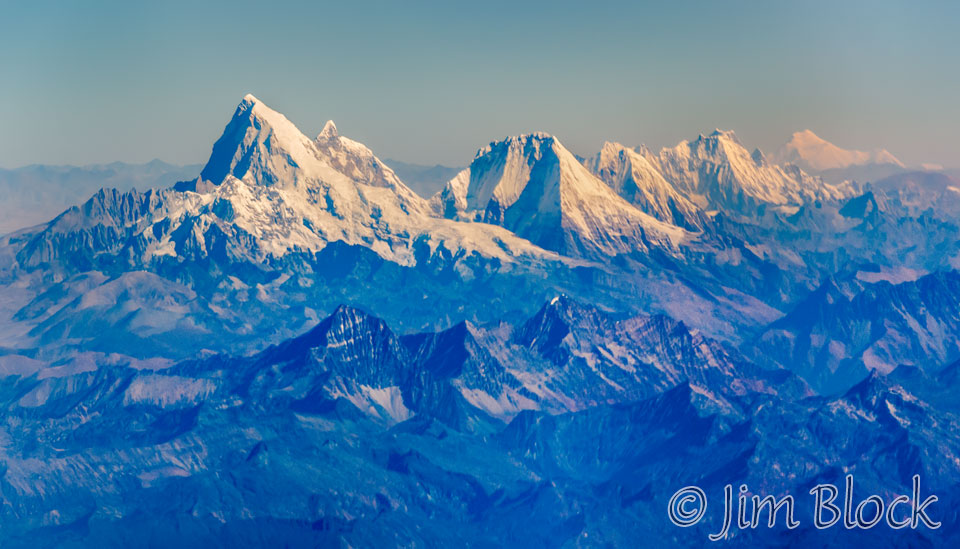
The three mountains we would see up close and personal during our Jomolhari Trek can be seen above. These mountains can also be seen at the top of the left hand photo below. The two photos below show the Paro valley and airport. The town of Paro can be seen in the photo on the right at the beginning of the left hand valley beyond the airport. Just before and to the right of the town is the Paro Dzong. Farther along the road past the town lies our two hotels, Tiger’s Nest, the Drukgyel Dzong, and the area where we began and ended the Jomolhari Trek.
As the plane banked sharply and approached the runway we got nice views of the National Museum and the Paro Dzong that we would visit near the end of our stay in Bhutan.
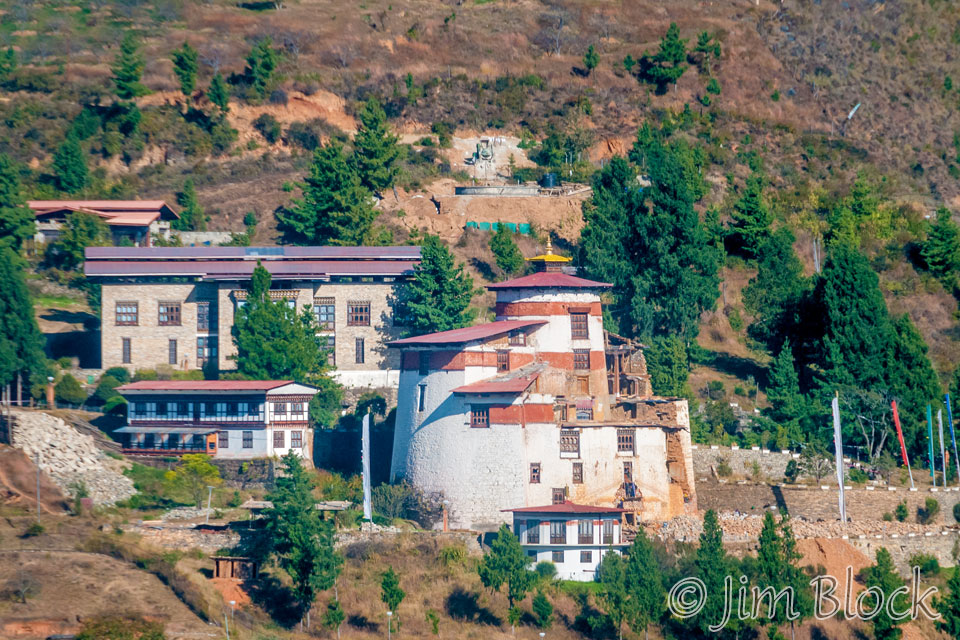
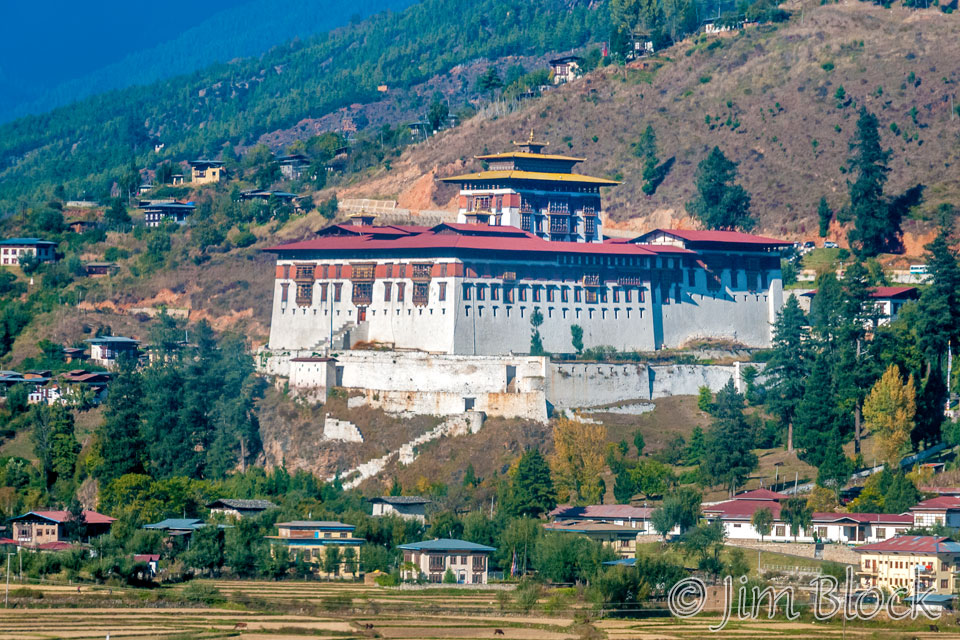
Stephen departed the plane carrying all the gear he had brought on the trip. I had a somewhat larger bag so I had checked it. Lakey and Kencho met us at the airport and we were off. Lakey would be our guide of our visit to Bhutan except during our Jomolhari Trek. Kencho is certainly an expert driver who kept us safe on the narrow (one-and-a-half lane) winding dirt roads in Bhutan.
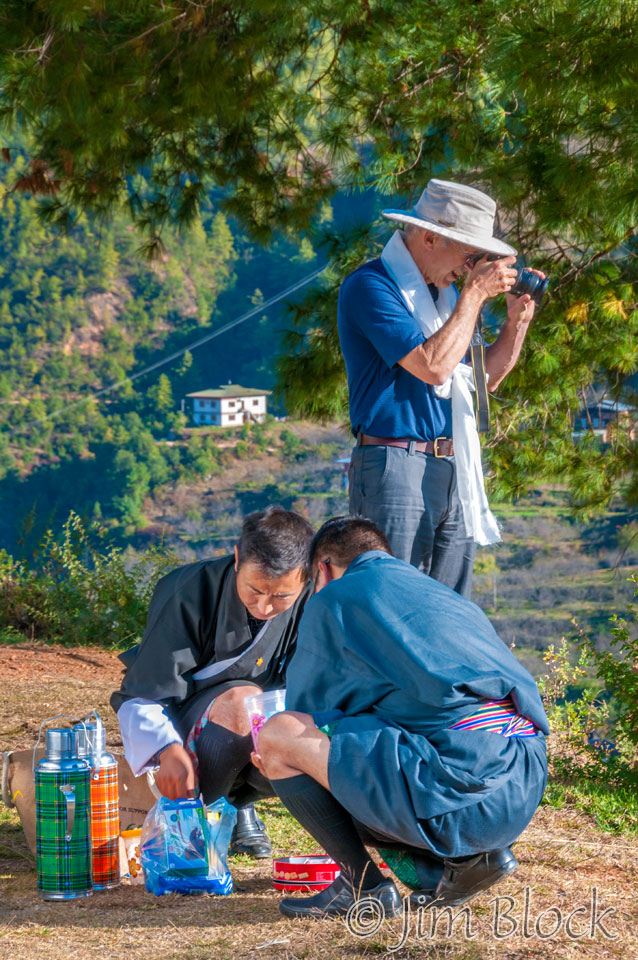
Our first night was to be in Haa across the Cheli La, a 13,000 ft pass, over what is claimed to be the highest auto road in Bhutan. But first we stopped for tea and crackers/cookies.
Note the traditional Bhutanese clothes worn by Lakey and Dhamey. I asked if it was OK for a chilip (foreigner) to dress like that. Lakey said it would be fine and an honor to them. But I didn’t.
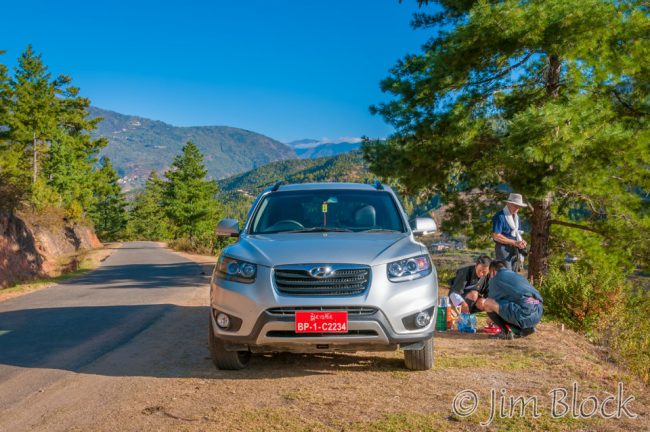
While our snack was being prepared we photographed the beautiful fields far below.
Our plane was 2 hours late leaving Delhi so we did not reach Cheli La until around 5 pm. Along the way we saw fields of the traditional 108 white prayer flags. At the pass I excitedly jogged a bit up a trail lined with more prayer flags. Then I felt dizzy. I was at 13,000 ft after having been at sea level only 4 hours before.
In the middle of the photo of the view from the pass you might be able to make out the peak of Jomolhari above the clouds. We hoped it would be clearer when we trekked there, and it was.
We had a wonderful two nights at the Lechuna Lodge, an old farmhouse, in Haa. You can learn about our stay in the Haa Valley if you CLICK HERE.
On our return trip to Paro we had a beautiful hike from Cheli La to the Kila Nunnery. We had been in Bhutan for only about 40 hours and we were already hiking at 13,000 ft. Please click the photo below if you would like to learn about our hike and visit to this nunnery.
As we descended back into Paro, we got another view of the Paro Dzong in the foreground and Ta Dzong (watchtower), the National Museum, in the background.
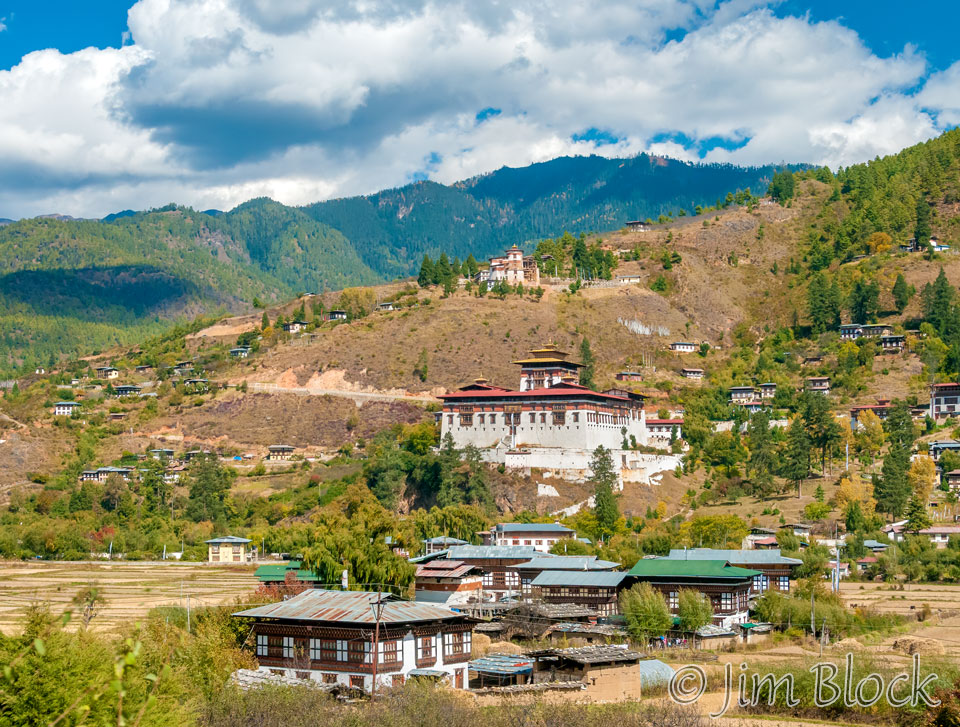
We met Dhamey for lunch in Paro, and he spent the remainder of the afternoon with us. Meanwhile Lakey and Kencho set off for a long night drive to Bumthang to meet out flight there the next day. Dhamey got us checked into the Janka Hotel on the outskirts of the town area of Paro. Here are two views of our hotel beyond some wheat fields being harvested.
Dhamey gave us a tour of the very interesting ruins of the Drukgyel Dzong and dropped us back at our hotel for dinner and sleep.
The sunrise the next morning was nice, as were roses in the garden.
I decided to take a quick jaunt into the town of Paro a bit over 2 km away before our driver arrived to take us to the airport at 9 am. Stephen decided to stay back and recover from a rough night.
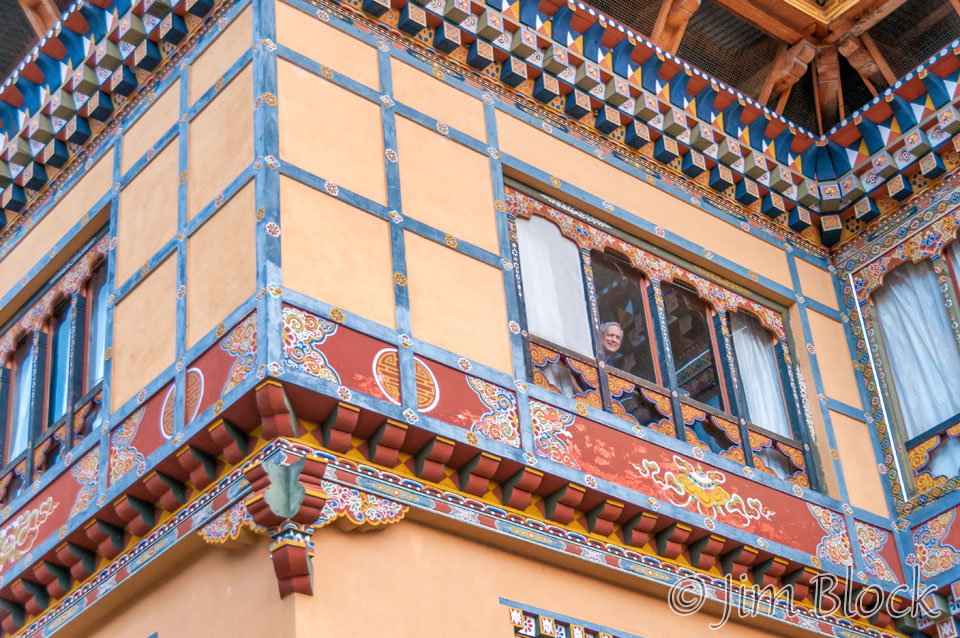
Here is a somewhat lengthy slide show of the photos I made on my quick journey to town and back. Notice that in Bhutan the men wear shorter “skirts” than the women.
They rolled out the red carpet for us at the airport.
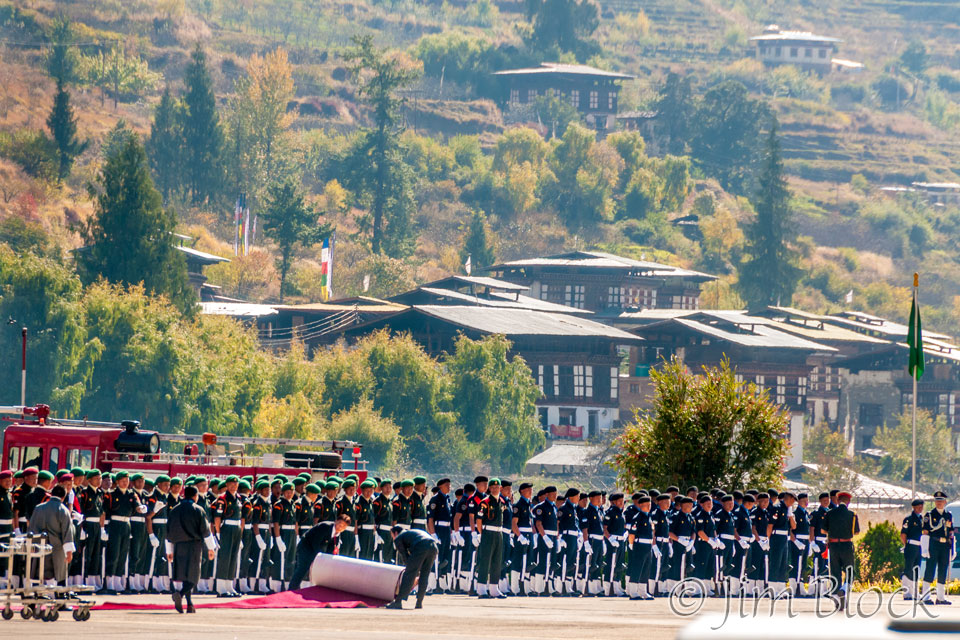
After listening to departure announcement for a long time in a language we couldn’t understand, we were finally heading to our plane — the one in front.
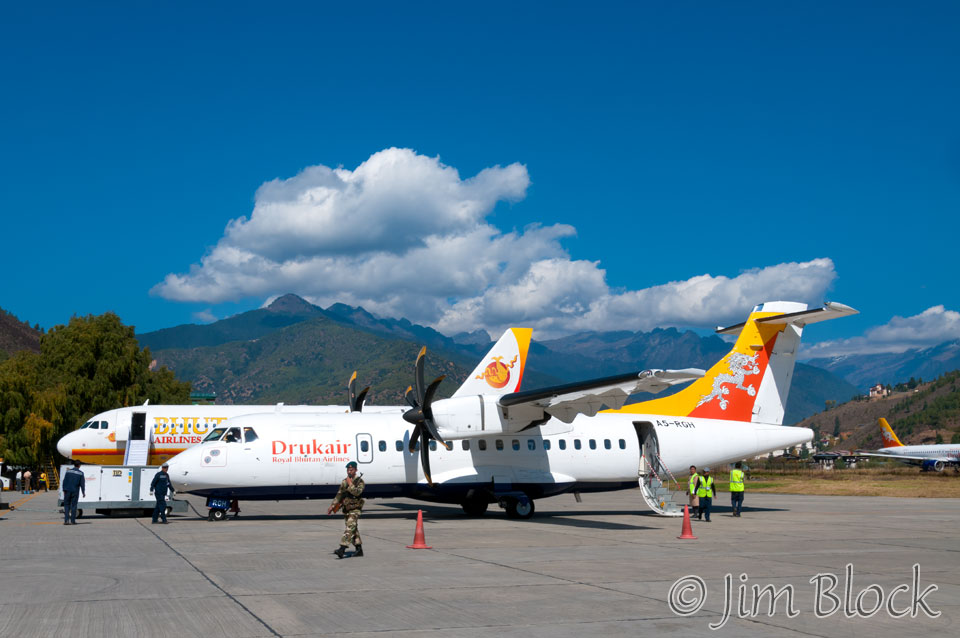
We flew from Paro to Bumthang, toured Jakar, and enjoyed a wonderful puja at Kencho’s uncle’s home followed by a very memorable tour of Phomdrong the next day. Phomdrong is not on any tour group routes, but it is one of THE highlights of our trip. I commented that this was “worth 5 temples”. By the end of our walk around Phomdrong and a visit to Kencho’s home, Stephen and Lakey had upped it to 25 temples.
Then it was off to the Ura and Tang Valleys, a great visit to a school in Tang, and the Ogyen Choling Museum. We then spent a few unplanned hours at the Jambay Lhakhang Festival in Jakar. After that we visited Trongsa, attended the Black-necked Crane Festival in Phobjikha, then had a very nice time in Punakha. On the way back to Paro we stopped briefly in Thimphu and met Dhamey’s charming wife, Sonam, and our trip leader, Phub, for our challenging Jomolhari Trek.
On the ride from Thimphu to Para we saw a forest fire — one of two we saw on our trip.
We stopped briefly in the town of Paro and I got a few quick photos.
We checked into our hotel and rested up for our trek. The next morning was clear and Jomolhari stood tall waiting for us.
Lakey and Kencho drove us to the starting place for our trek, Sharna Zampa. We would walk for 6 days crossing three high passes. It was a challenging but wonderful trek with a great leader, Phub, and an excellent crew. The scenery was fantastic. The nomad family we stayed with one night made this an experience we will remember for the rest of our lives. You can read about and see photos from our Jomolhari Trek by following the links on the page you can get to if you CLICK HERE.
After our trek we stopped briefly in Paro to use a washroom before heading to Thimphu. The washroom was at the side of this building.
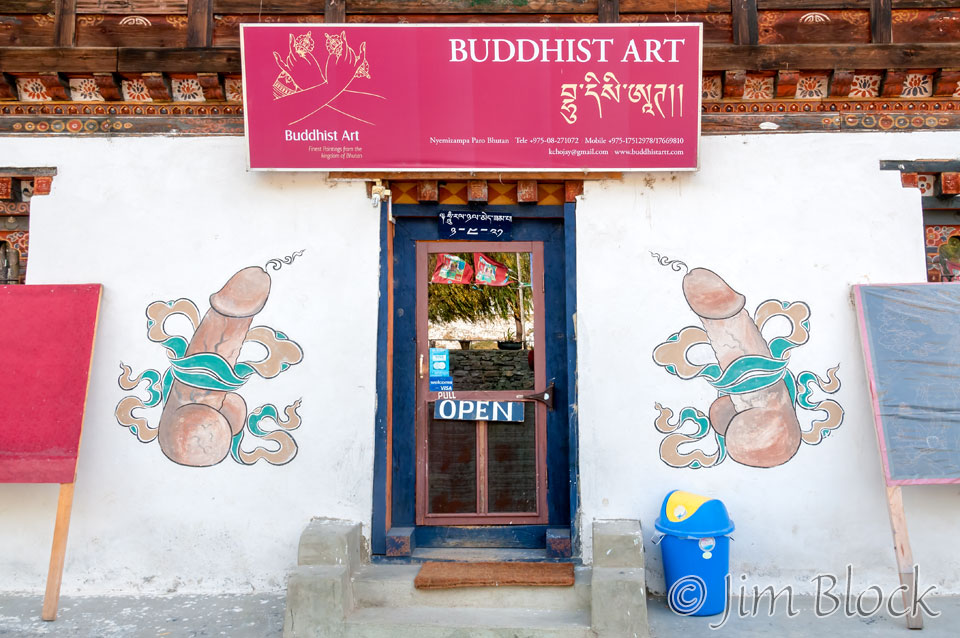
We drove to Thimphu, checked into our hotel, and spent much of the remainder of the day resting and recovering from our trek. We stayed three nights in Thimphu, having dinner with Dhamey twice and visiting his home and seeing Sonam again twice. We had a great time in the capital city and had some very memorable experiences. Shortly after one of them Stephen commented that “now you have had the Complete Bhutan Experience”. If you are interested you can visit a page not found in any of my menus if you just CLICK HERE.
On the way back to Paro we stopped at the Chain Bridge at the Tachog Lhakhang Dzong. Can you see the red peppers drying in the sun below the dzong in this photo? Can you see the people sorting and bagging them?
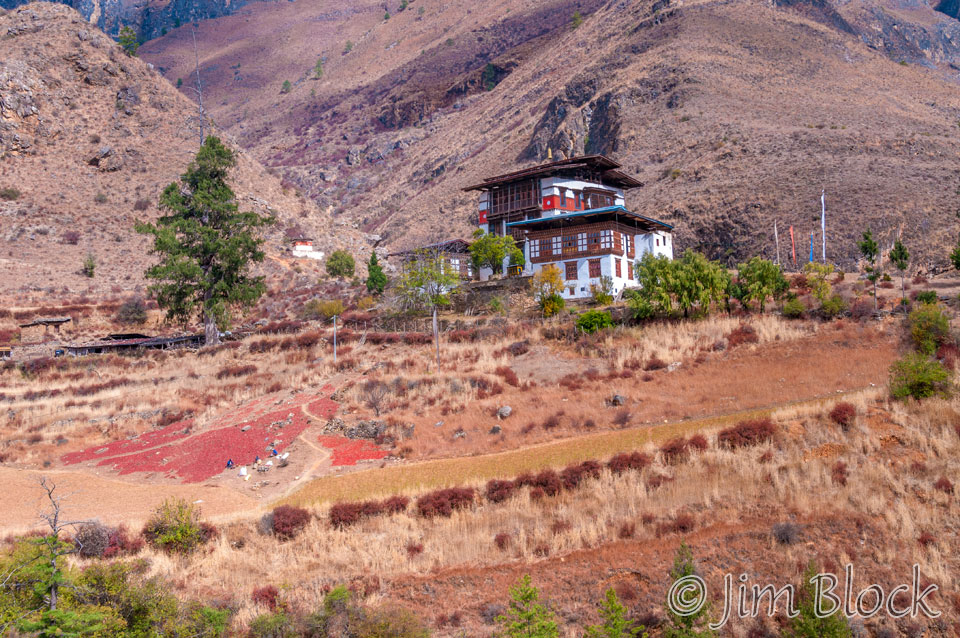
Here is a closer view.
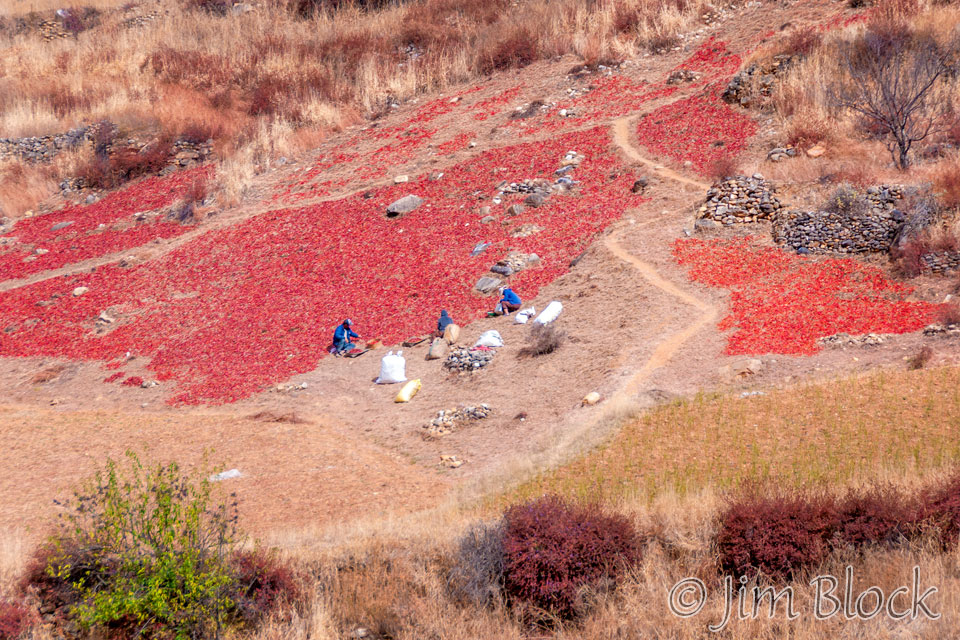
Thangtong Gyalpo built iron chain bridges in Bhutan in the late 1300s and is said to have built 58 of these bridges around Tibet and Bhutan. Crossing the bridge was an interesting experience. It bounced up and down, and the river rushing below our feet added another dimension.
Here are some photos from this spot.
We had lunch at the same restaurant in Paro where we first met Dhamey earlier in our trip. We had certainly experienced a lot since then.
I took a photo of our meal then another of a bumpa in a shop window. A bumpa is used in Tibetan Buddhist rituals and empowerments. In some contexts, it is understood to be the expanse of the Universe. “Bumpa” is the name my grand kids call me.
We spent a short time in town allowing me to get some more photos.
We visited the National Museum. Unfortunately the only photo I have to show is of a praying mantis near the parking lot. No photography is allowed in public museums in Bhutan — one of the few disappointments on our trip.
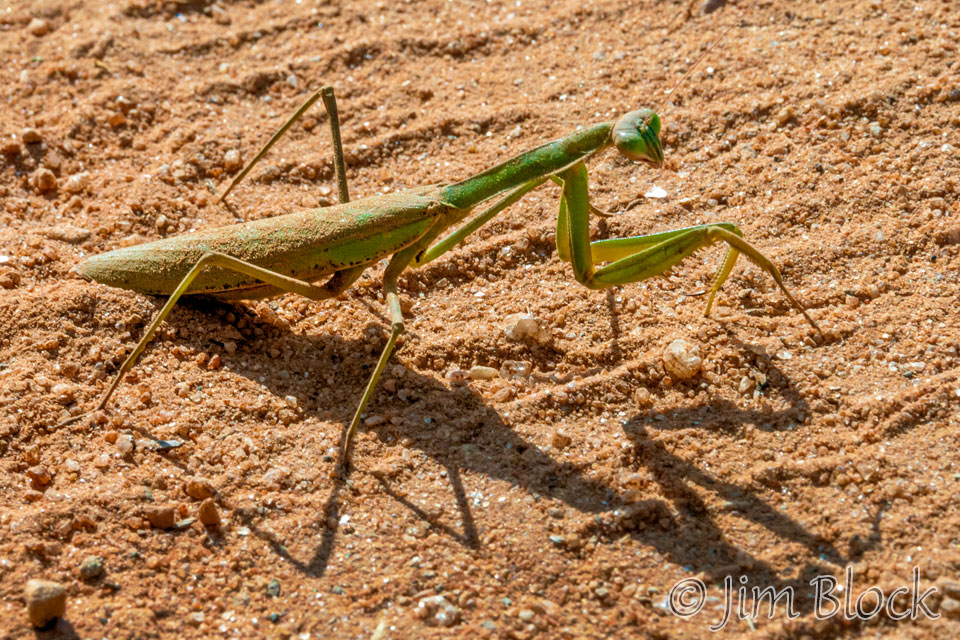
Ta Dzong (the watchtower) is the traditional site for this museum, but it is being renovated and the museum was temporarily housed in a nearby building.
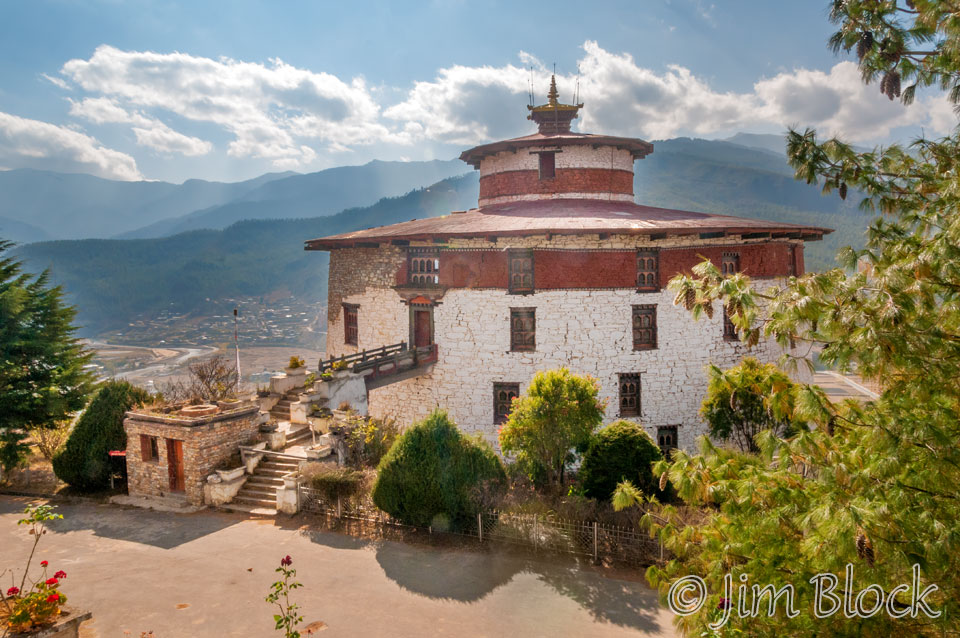
Below is the Paro Dzong seen from near Ta Dzong.
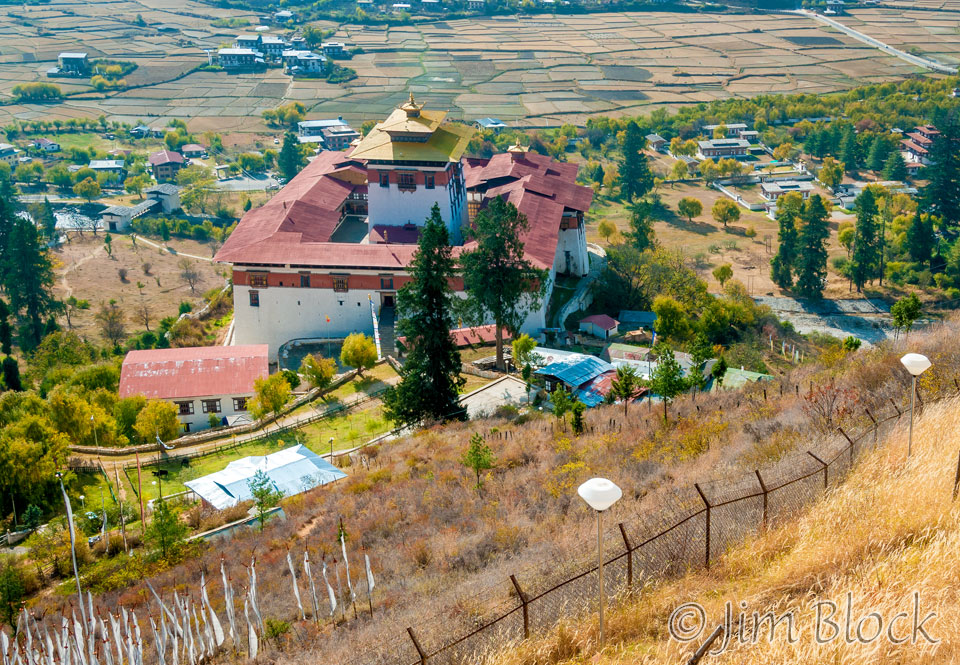
Here is another view that also shows the Paro valley. The airport is to the far left in this photo.
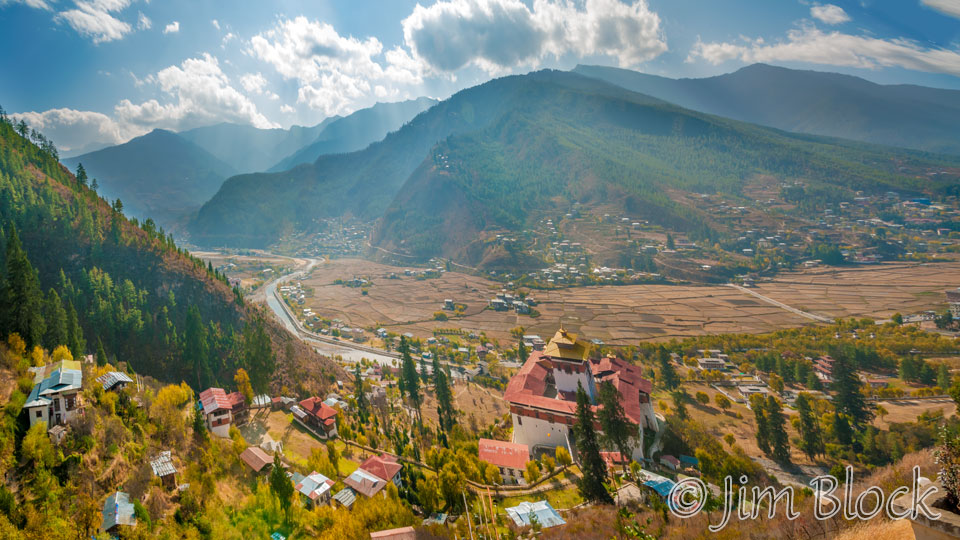
We walked down to the Paro Dzong. Along the way we stopped to watch some young monks riding a bike. This young monk looks like he is having a nice peaceful ride on his bike. But look closely. There is no chain so the pedals are pretty useless except as footrests. Also, there are no brakes. To make matters even more exciting, the rear wheel kept falling off. Fortunately the hill down to the Paro Dzong was not too steep.
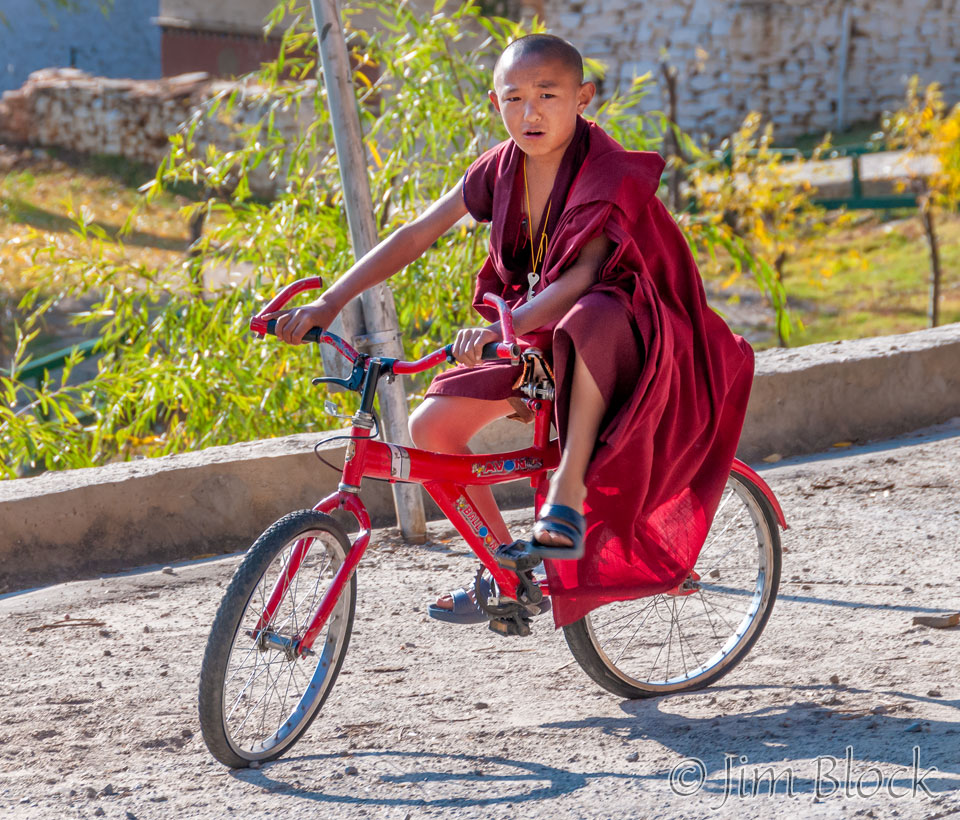
Here are some photos of the monks and their bike.
We saw some cute kids outside the Dzong and watched a tourist get her photo taken on the steps.
Just inside the Dzong, Lakey explained in great detail the meaning of a painting of six stages of life or the various worlds one might inhabit.
Here are some photos at the Dzong.
We got a nice view of the Paro town and valley from a window of the Dzong.
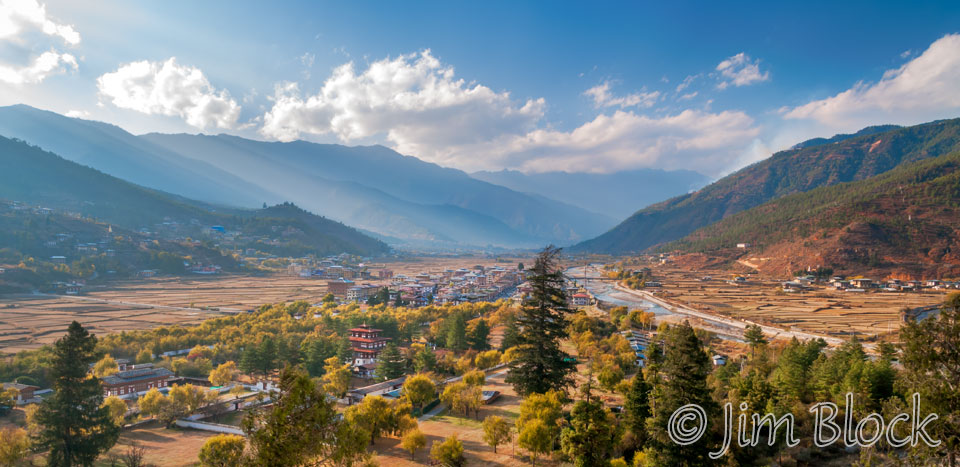
Below the Dzong was the entry bridge across the Paro Chhu.
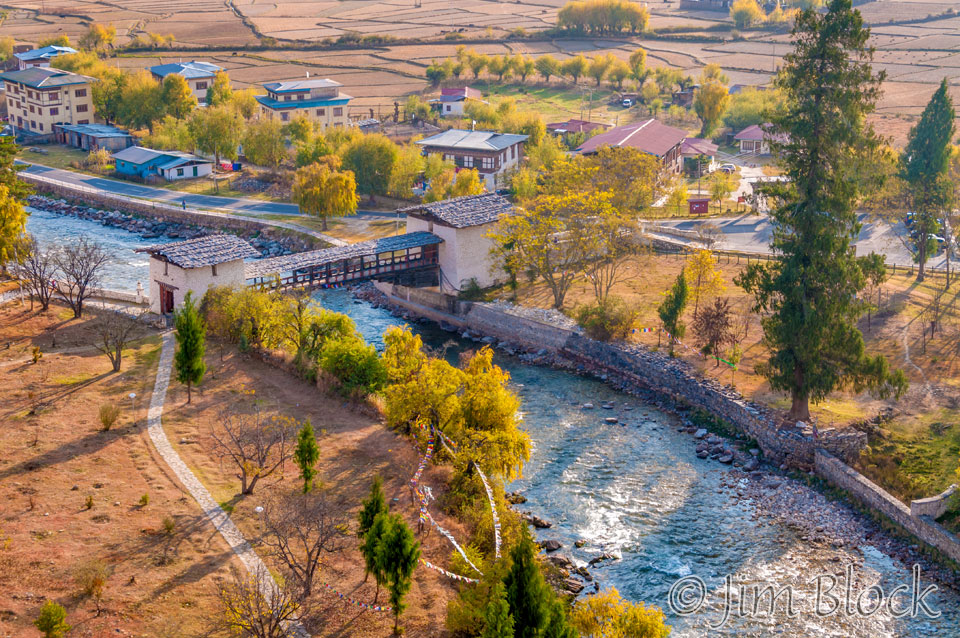
Here is a photo of the inside of this bridge and a pair of photos looking back up at the Paro Dzong.
Dhamey had a special treat for us — two nights at a very upscale (5 star) hotel, the Zhiwa Ling. Here is a photo of the lobby.
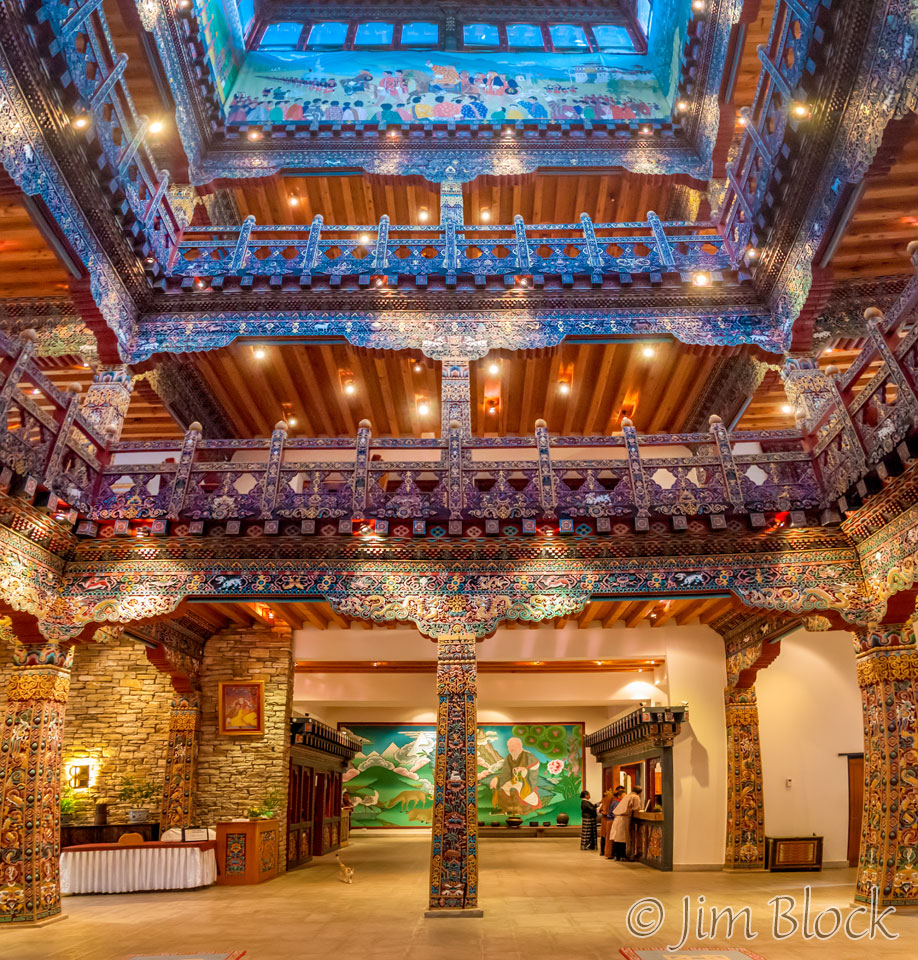
While waiting for Lakey to check us in (right of center), a cat (left of center) walked over to me and sat on my lap. After my morning adventure with dogs in Thimphu I certainly felt a connection and that it was trying to comfort me.
We were led to our room. Note the “bumpa”.
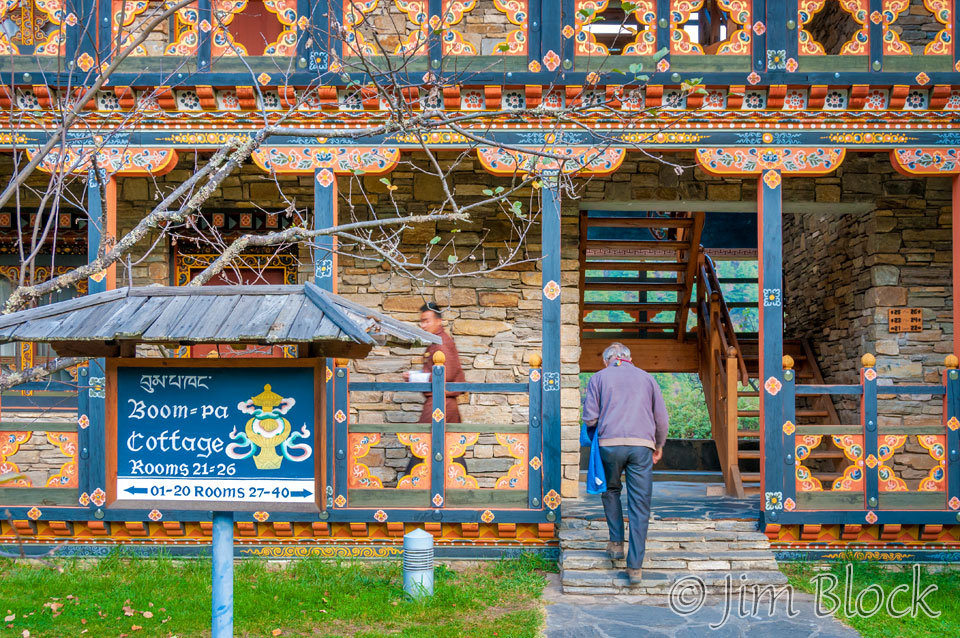
Stephen was feeling that rest was more important than dinner, so Lakey and Kencho took me to a restaurant that I’m sure few tourists visit — it served great momos (like dumplings). Note the Nescafe in the background. Unfortunately it is hard to find real coffee in Bhutan or Nepal.
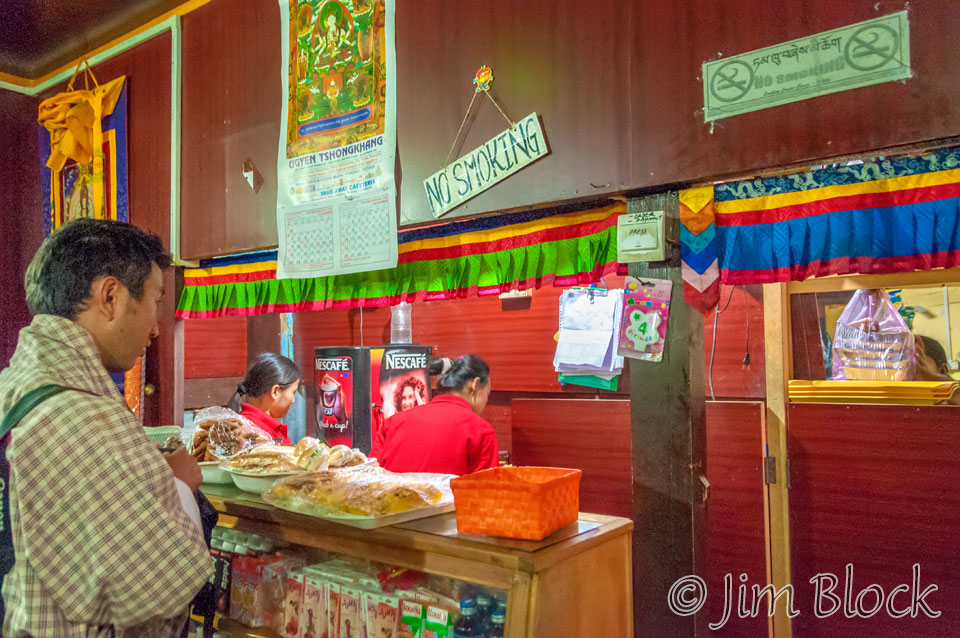
This was the scene outside the restaurant.
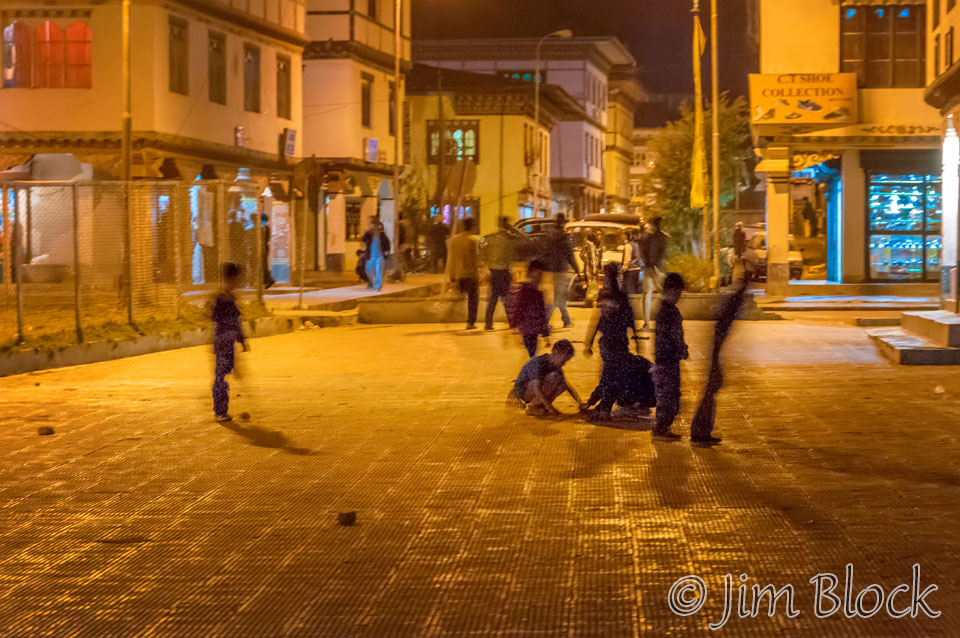
Lakey wanted to do some night photography, and I was more than happy to join him. We went to the Paro Dzong.
The next morning we headed up to Tiger’s Nest early. You can see this most famous Bhutan monastery if you CLICK HERE.
That afternoon I took some photos of our hotel. It is quite a fancy place. It even had its own prayer room.
For our last evening in Bhutan we had dinner at a farmhouse and a hot stone bath there. We sat on the floor eating dinner with 3 young people from the United States Embassy in Bangladesh. They flew to Paro for a short visit and a hot stone bath. While we had ours we heard a lot of laughing in the room next door.
The stones are heated all day in an outdoor fire then put into one end of a wooden tub. The water is about as hot as one can stand, but, if it cools off, more hot stones are added. Here are a pair of photos Lakey took with my iPhone.
After our hot stone baths we all had some ara. The ara they served here certainly not compare with the wonderful ara from Kencho’s home.

